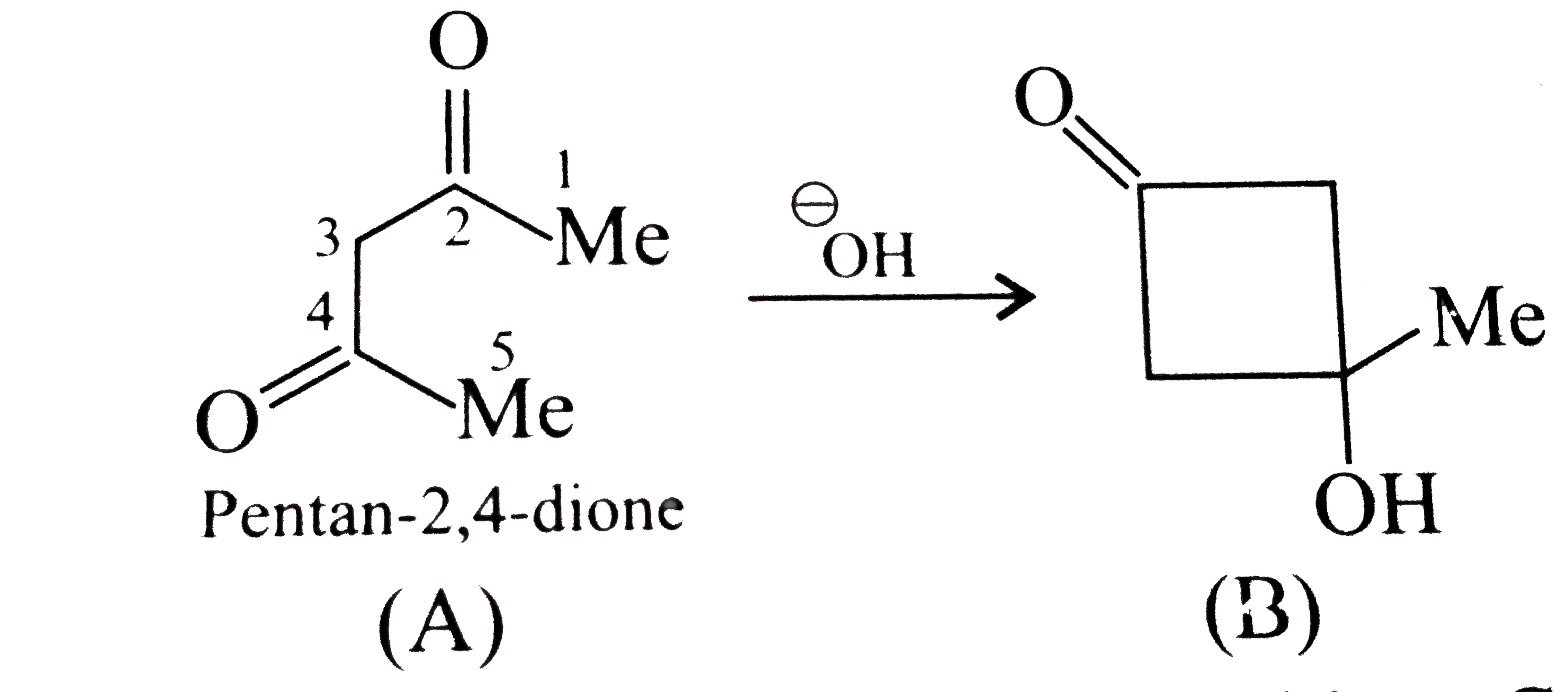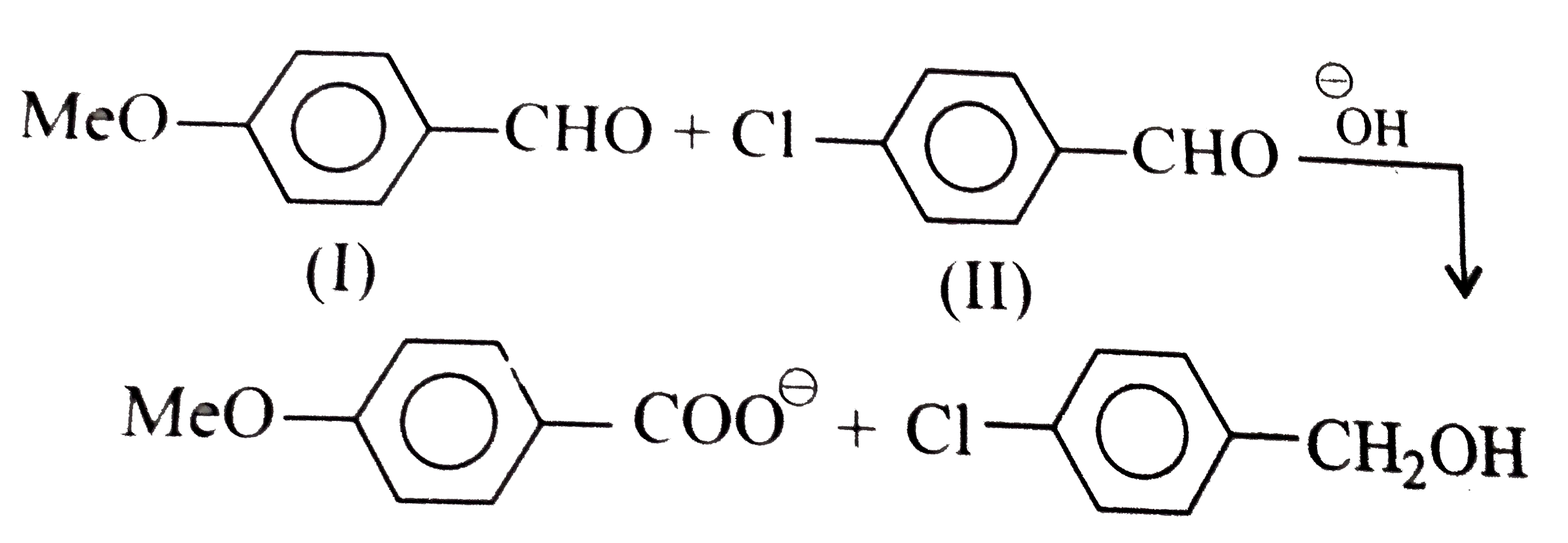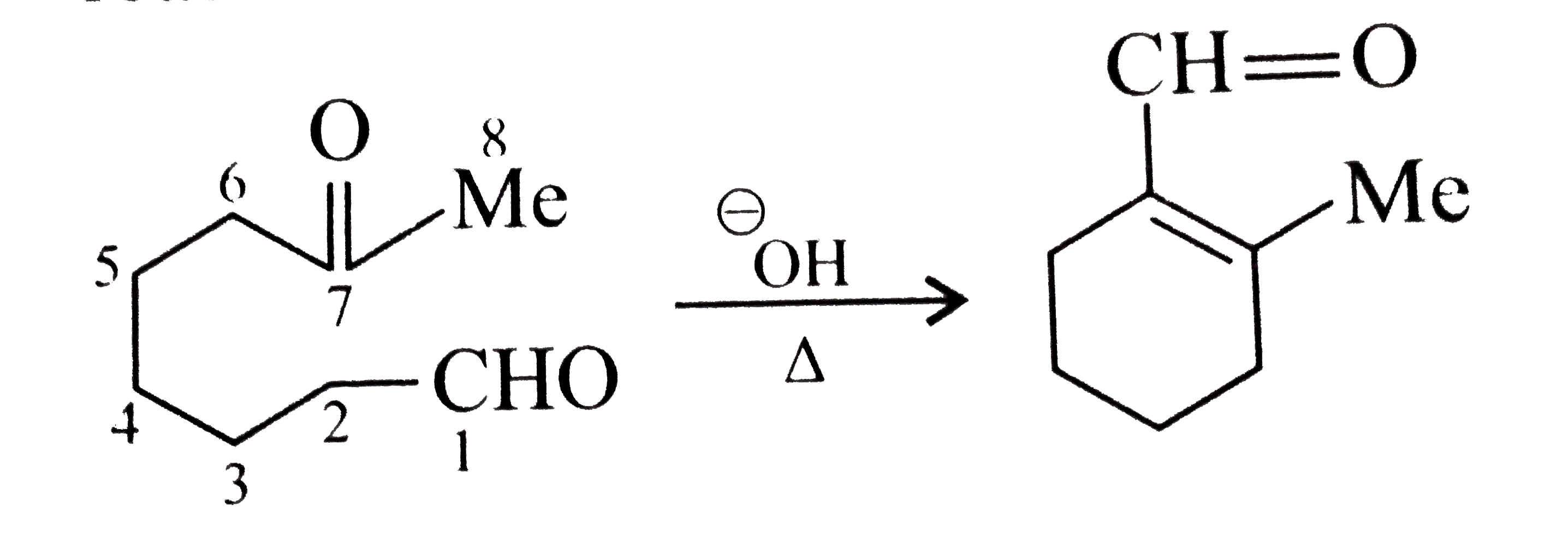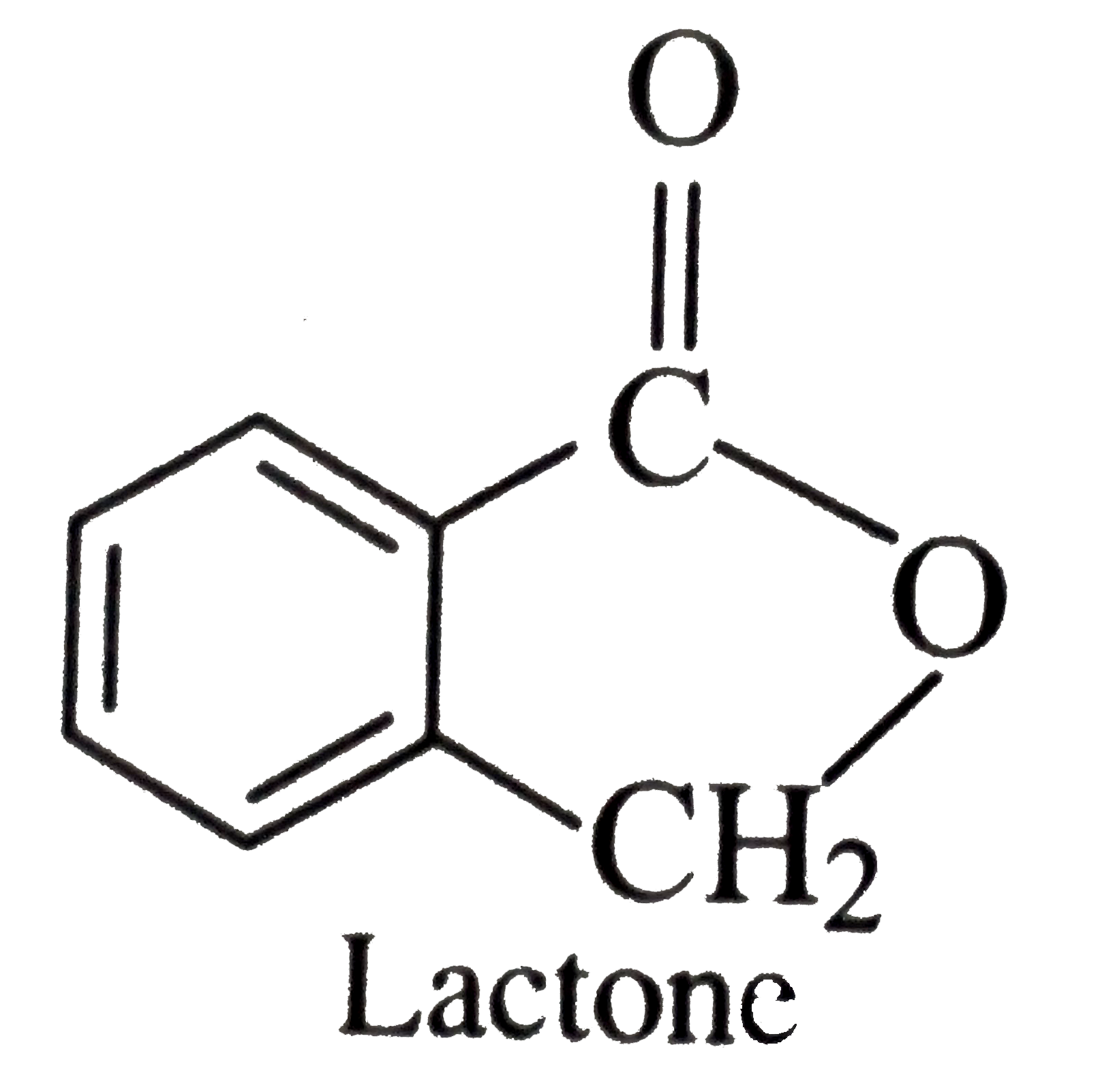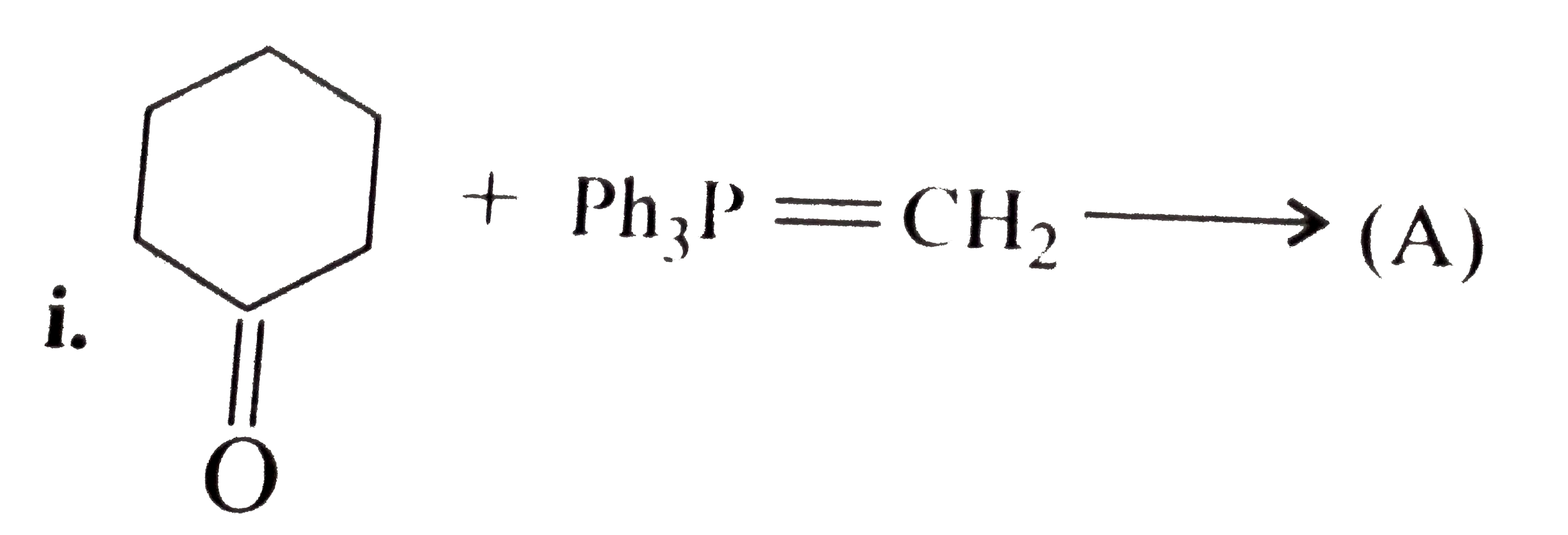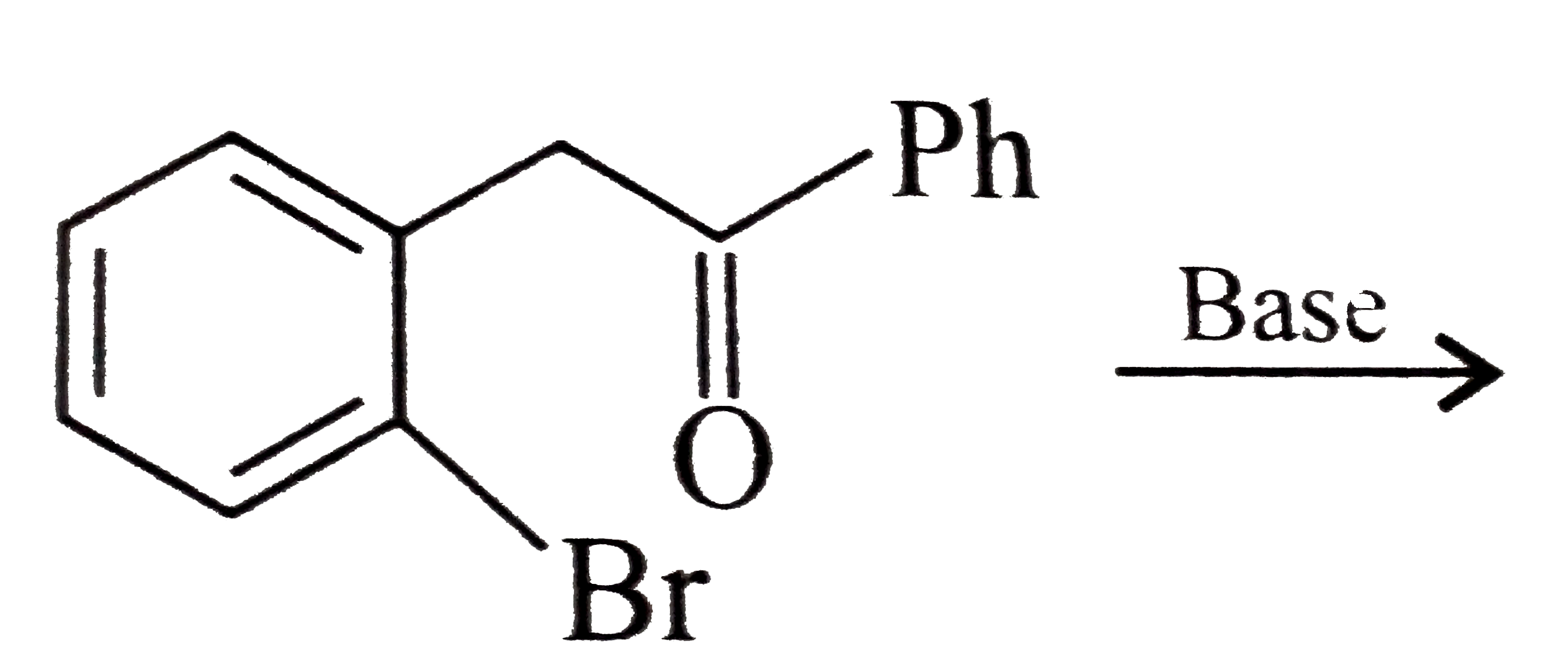Archives Fill In Theblanks from CENGAGE CHEMISTRY (HINGLISH) ALIPHATIC AND AROMATIC ALDEHYDES AND KETONES for Class 12
| Class 12 | CHEMISTRY |
| Chapter | ALIPHATIC AND AROMATIC ALDEHYDES AND KETONES |
| CENGAGE CHEMISTRY (HINGLISH) | Archives Fill In Theblanks |
| Medium | English |
| Academic Year | 2023-2024 |
Question 28
Complete the following:
a.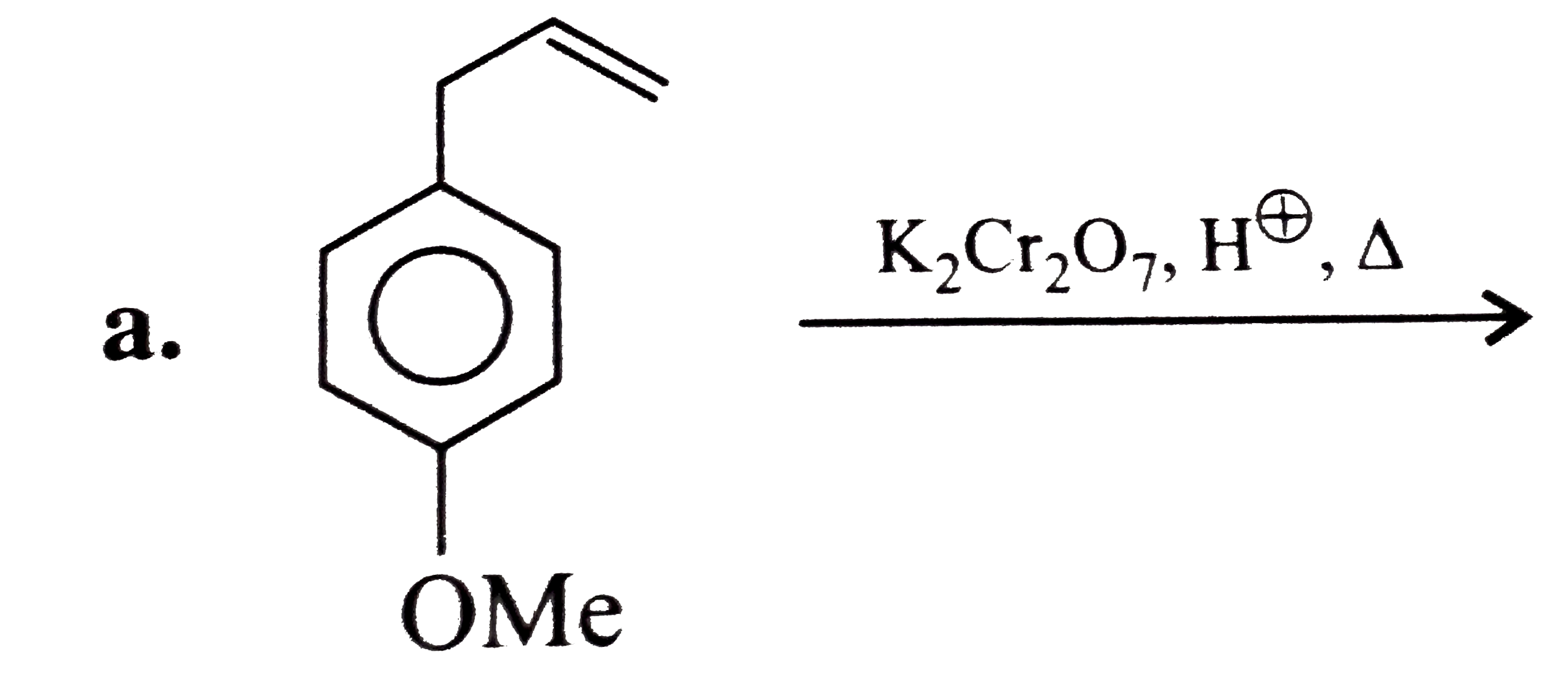
b.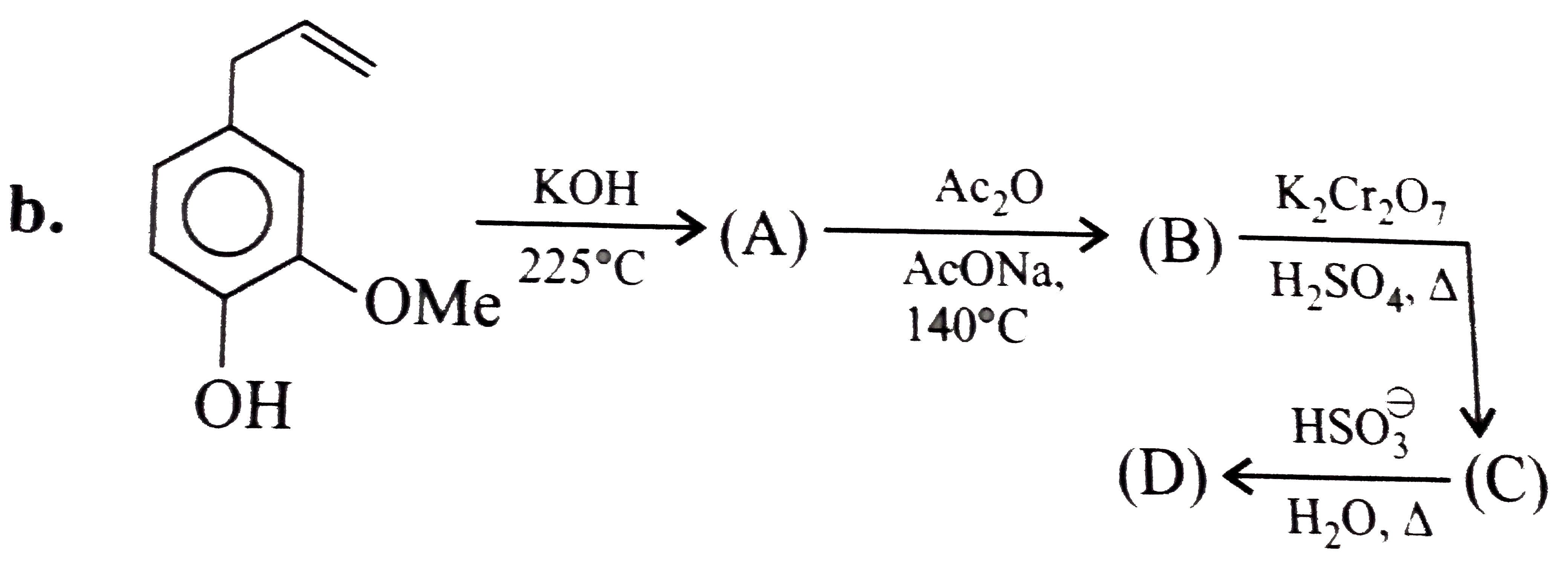
c.
d.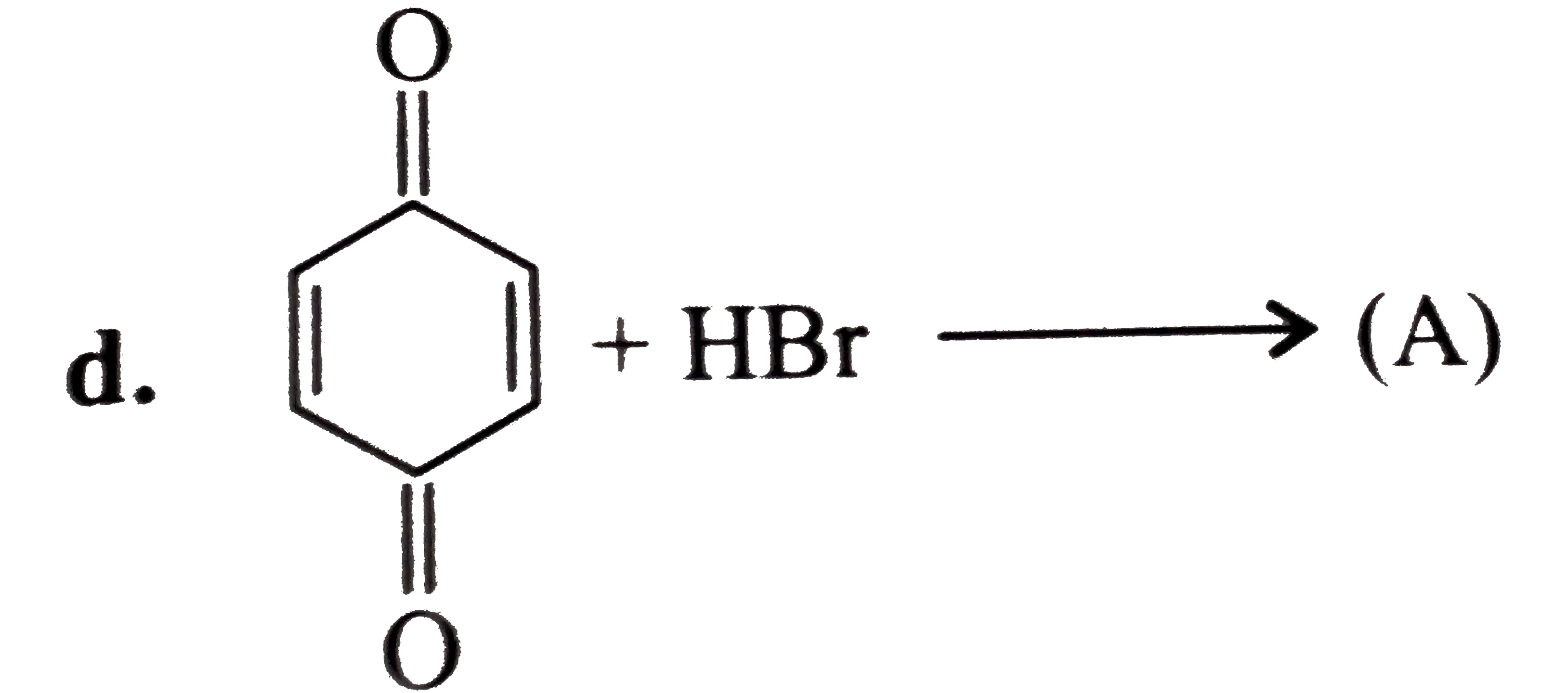
e.
f.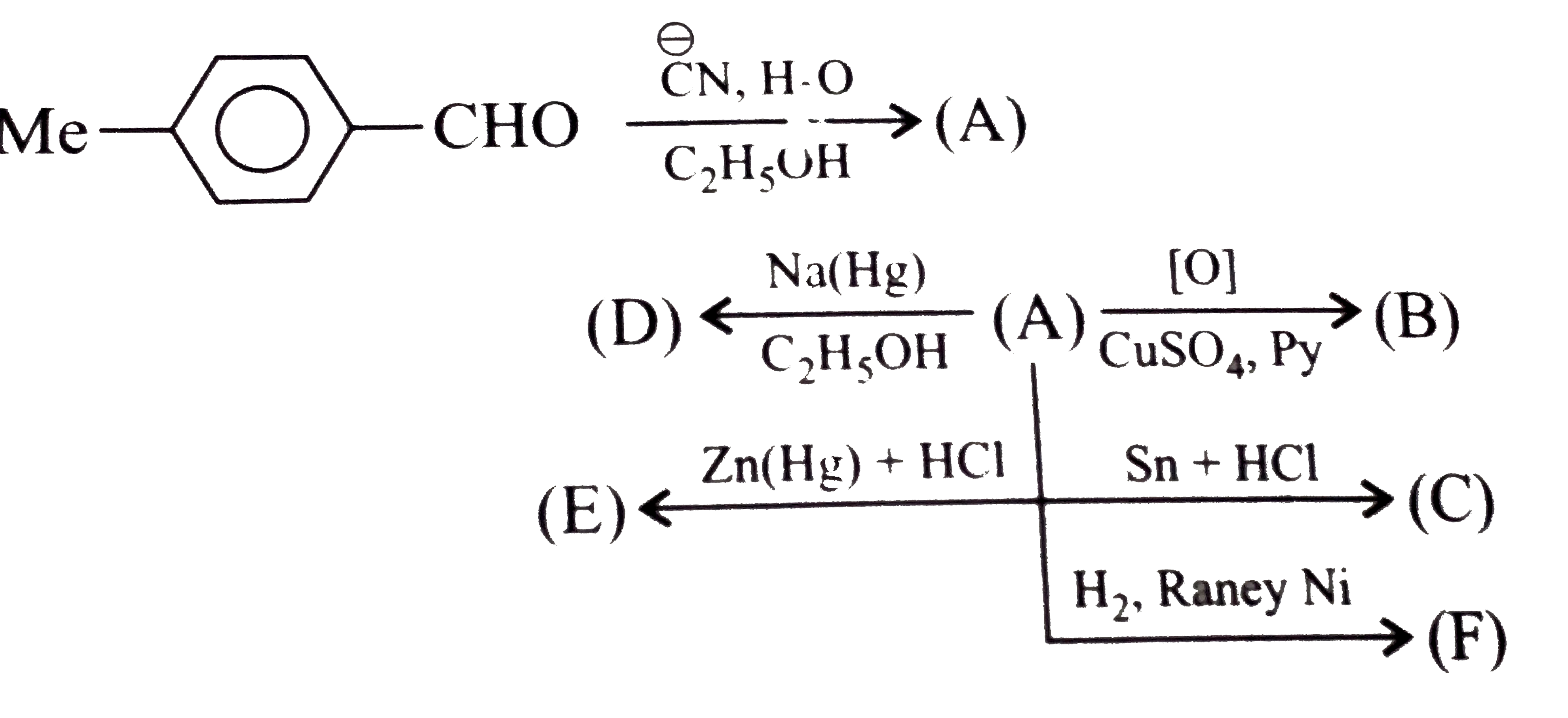
g.
h. PhCHO+Cl2No catalyst−−−−−−→(A)
i.
j. PhCHO+(C2H5CO)2OC2H5COONa−−−−−−−→A
k.
l.
m.
n.
o.
p.
q.
r.
s. PhCOCH3+SeO2→(A)
t. PhCH=CH−O∣∣C−Ph+KCNCH3COOH−−−−−−→(A)
u. Ph−C∣CNH−O∣∣C−CH3(i)H3O⊕−−−−−→(ii)Δ(A)
v.
w. Ph−OH∣C∣Ph−CH2NH2HNO2−−−→(A)Oxidation−−−−−→(B)
x. PhCOPh+KOH→(A)+(B)
y.
z. View Solution
View SolutionQuestion 38
An aromatic kentone (X) has the molecular formula C10H12O2. On vigorous oxidation, it yields a dibasic acid (Y) having the formula C9H8O5 which rapidly forms an anhydride on heating. (X) on strong heating with sodium hypobromite gives monobasic acid (Z) with the formula C9H10O3. (Z), when heated with soda lime, gives 3-methylanisole. Interpret the above reactions and deduce the structures of (X), (Y), and (Z).View SolutionQuestion 40
An organic compound (A) (C8H14O) forms an oxime and gives a positive haloform reaction. On ozonolysis, it gives acetone and a compound (B) (C5H8O2) . (B) forms a dioxime and on subjecting to oxidation reaction gives an acid (C ) (C4H6O4). On treatment with excess of ammonia and strong heating, (C ) gives a neutral compound (D) (C4H5O2N). (D) on distillation with zinc dust forms pyrrloe. Suggest the possible structures of (A), (B), (C ), and (D). Explain the chemical reactions involved.View SolutionQuestion 41
Compound (A) (C6H12O2) on reduction with LiAlH4 yielded two compounds (B) and (C ). The compound (B) on oxidation gave (D), which on treatment with aqueous alkail and subsequent heating furnished (E ). The latter on catalytic hydrogenation gave (C ). The compound (D) was oxidised further to give (F) which was found to be a monobasic acid (molecular formula weight =60.0). Deduce the structures of (A), (B), (C ), (D), and (E ).View SolutionQuestion 42
Hydrocarbon (X), C7H12, on reaction with boron hydride followed by treatment with CH3COOH yields (A). On reductive ozonolysis (A) yields a mixture of two aldehydes, (B) and (C ). Of these, only (B) can undergo Cannizzaro reaction. (A) exists in two geometrical isomer, (A−1) and (A−2), of which (A−2) is more stable. Gives structures of (X), (A), (B), (C ), (A−1), and (A−2) with proper reasoning.View SolutionQuestion 43
An organic compound (A) (C6H10) on reaction with CH3MgBr followed by acid treatment gives compound (B). The compound (B) on ozonolysis gives compound (C ), which in the presence of a base gives 1-acetylcyclo-pentene (D). The compound (B) on reaction with HBr gives (E ). Write the structures of (A), (B), (C ), and (E). Show how (D) is formed form (C ).View SolutionQuestion 44
An organic compound (A) contaning C, H, and O (16.32%) does not decolourise bromine water and does not give any precipitate with ammonical AgNO3. It consumes 1 mol of NH2OH per mole of (A) to give a solid derivative. The monobromo derivative of (A) shows optical activity. If (A) is optically inactive, suggest the structure.View SolutionQuestion 46
An orgnic compound (A) contains 79.25% C, 5.66% H, and 15.09% O. It has a vapour density of 53 and reduces the Tollens reagent. Action of NaOH on (A) produces (B) and (C ). (B) on controlled oxidation gives (A) which on further oxidation produces (C ). (C ) on distillation with PCl5 gives (D). (D) reacts with aq. NH3 giving (E ) which reacts with NaOH and Br2 forming (F). The latter on reaction which hypo-phoshorus acid yield (H). Identify the compounds (A) to (H). View SolutionQuestion 47
An organic compound (A) containing 60.12% (C ) and 13.3% H has vapour density of 30. On oxidation it gives (B) (C3H6O) which on further oxidation by NaOH and I2 gives compound (C ) (C2H3O2Na). When (B) is treated with hydroxylamine, a compound (D) (C3H7NO) is formed. what are (A), (B), (C ) and (D) ?View SolutionQuestion 48
Two organic compounds (A) and (B) containing 62.01% C and 10.3% H react with HCN in different manners to produce (C ) and (D), respectively. Subsequent hydrolysis of (C ) and (D) gives optically active compounds (E ) and (F). Both (E ) and (F) on decarboxylation give the same compound (G). Identify the compounds (A) to (G).View SolutionQuestion 49
An organic compound (A) (C5H7OCl) reacts rapidly with ethanol to give (B) (C7H12O2). (A) also reacts with water to produce an acid which reacts with bromine to give (C ) (C5H8Br2O2). (B) on boiling with H2SO4 forms an acid (D). When (D) is oxidised with KMnO4 an acid (E ) (C4H6O3) is produced. On mild heating, (E ) gives (F) (C3H6O) which cannot be oxidised by ammoniacal AgNO3. Identify the compounds (A) to (F).View SolutionQuestion 50
An organic compound (A) contains 87.27% C and 13.73% H. Its vapour density is 55. Ozonolysis of (A) gives three compounds (B), (C ), and (D). (B) undergoes a positive iodoform reaction and reacts with phenylhdrazine. Compounds (C ) and (D) are not positive to Iodoform test. (C ) on controlled oxidation gives (E ) (C4H6O4) , which reacts with two equivalents of NaOH for complete neutralisation. (E) on heating above its melting point yields (F) (C4H4O3) along with H2O. Compound D reacts with NaOH solution to form (G) and (H). Acidified solution of (G) yields with a voltile acid (I) which reduces ammonical AgNO3 solution. (I) undergoes reduction with LiAlH4 to produce (H). Assign structures for the lettered compounds (A) to (I).View SolutionQuestion 51
An organic compound (A) C4H9Cl on reacting with aqueous KOH gives (B) and on reaction with alcoholic KOH gives (C ), which is also formed on passing the vapours of (B) over the heated copper. The compound (C ) readily decolourises bromine water. Ozonolysis of (C ) gives two compounds (D) and (E ). Compound (D) reacts with NH2OH to give (F) and compound (E ) reacts with NaOH to have an alcohol (G) and sodium salt (H) of an acid. (D) can also be prepared form propyne on treatment with water in the presence of Hg2+ and H2SO4. Identify (A) to (H) with proper reasoning.View SolutionQuestion 52
An alkyne with five carbon atoms per molecule when passed through dilute sulphuric acid containing mercuric sulphate gives a compound which forms an oxime but has no effect on Fehling's solution. The compound on oxidation gives dimethyl acetic acid. It reacts with sodamide to form a hydrocarbon. What is the structure of the alkyne ?View SolutionQuestion 59
Which of the following compounds would undergo aldol condensation or the Cannizzaro reaction, or neither? Writer the structures of expected products of aldol condensation and Cannizzaro reaction.
i. Methanal ii. 2-Methylpentanal
iii. Benzaldehyde iv. Benzophenone
v. Cyclohexanone vi. 1-Phenylpropanone
vii. Phenylacetaldehye viii. Butan-1-ol
ix. 2,2-DimethylbutanalView SolutionQuestion 64
Arrange the following compounds in the increasing order of their property as indicated:
i. Acetaldehyde, acetone, di-tert-butyl ketone, methyl tert-butyl ketone (reactivity towards HCN).
ii. CH3CH2CH(Br)COOH,CH3CH(Br)CH2COOH,(CH3)2CHCOOH,CH3CH2CH2COOH (acidic strength).
iii. Benzoic acid, 4-nitrobenzoic acid, 3,4-dinitro-benzoic acid, 4-methoxybenzoic acid (acidic strength).View SolutionQuestion 65
Give simple chemical test to distinguish between the following pairs of compounds.
i. Propanal and Propanone
ii. Acetophenone and Benzophenone
iii. Phenol and Benzioc acid
iv. Benzoic acid and Ethyl benzoate
v. Pentan-2-one and Pentan-3-one
vi. Benzaldehyde and Acetophenone
vii. Ethanal and PropanalView SolutionQuestion 67
How will you bring about the following conversions in not more than two steps ?
i. Propanone to propene
ii. Benzoic acid to Benzaldehyde
iii. Ethanol to 3-Hydroxybutanal
iv. Benzene to m-Nitroacetopenone
v. Benzaldehyde to Benzophenone
vi. Bromobenzene to 1-Phenylethonal
vii. benzaldehyde to 3-Phenylpropan-1-ol
viii. Benzaldehyde to α-Hydrophylacetic acid
ix. Benzoic acid to m-Nitrobenzyl alcohol View SolutionQuestion 70
Giving plausible explanation for each of the following:
i. Cyclohexanone forms cyanohydrin good yield but 2,2,6-trimethylcyclohexanone does not.
ii. There are two (−NH2) groups in semicarbazide. However, only one is involved in the formation of semicarbazones.
iii. During the preparation of esters from a carboxylic acid and an alcohol in the ester should be removed as soon as it is formed. View SolutionQuestion 71
An organic compound contains 69.77% carbon, 11.63% hydrogen, and rest oxygen. The molecular mass of the compound is 86. It does not reduce Tollens reagent but forms an aditional compound with sodium hydrogensulphite and gives positive iodoform test. On vigorous oxidation, it gives ethanoic and propanoic acid. Write the possible structure of the compound.View SolutionQuestion 83
Consider the following reaction in which compound (A) on reaction with EAA(MeCOCH2COOEt) in the presence of NaOEt/EtOH gives a product which on hydrolysis by different mechanisms.
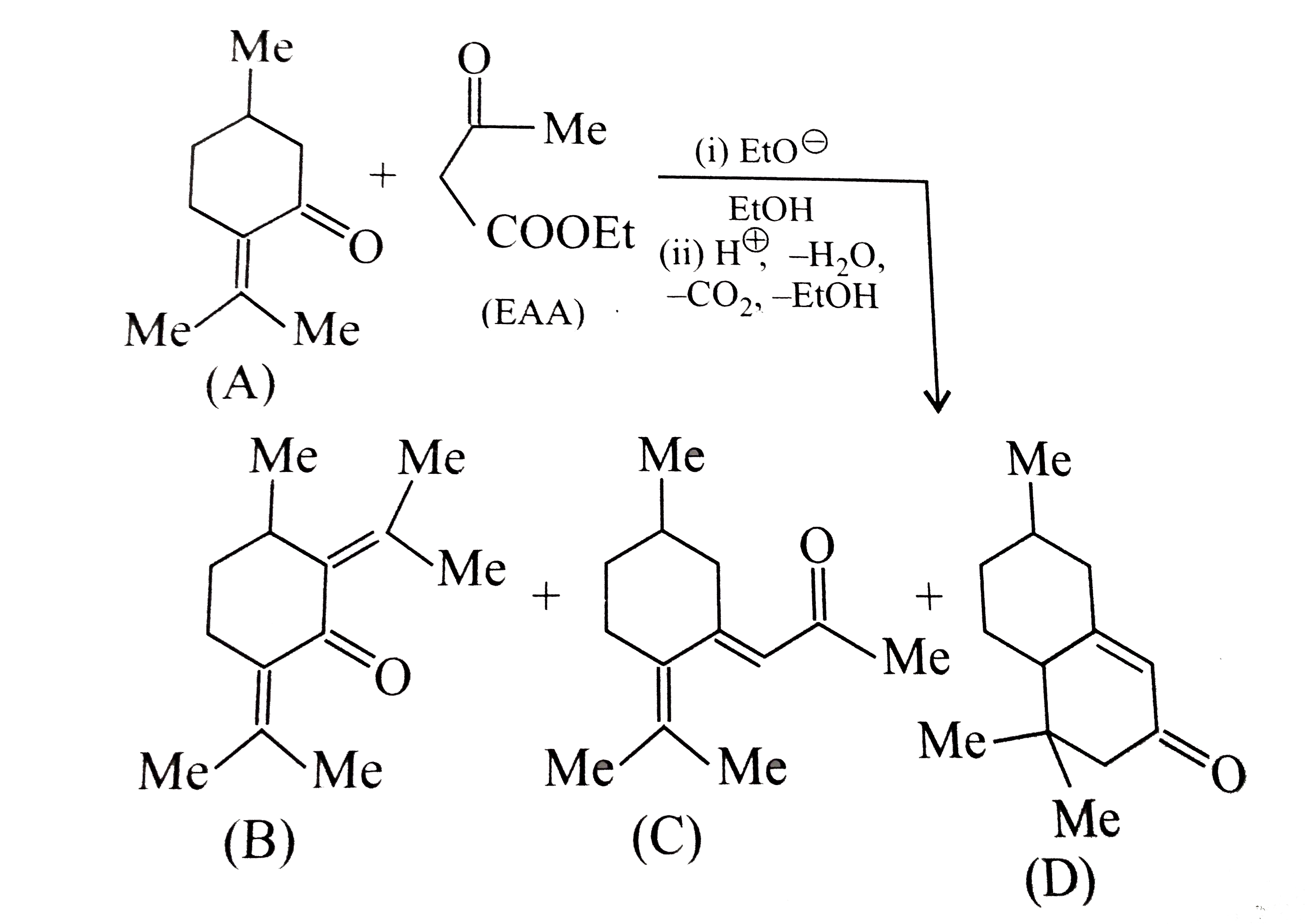
One of the mechanisms in which an aldol addition by the carbanion of (A) takes place on the (C=O) of EA A (acceptor) is given below. Compound fromed by this mechanism is:
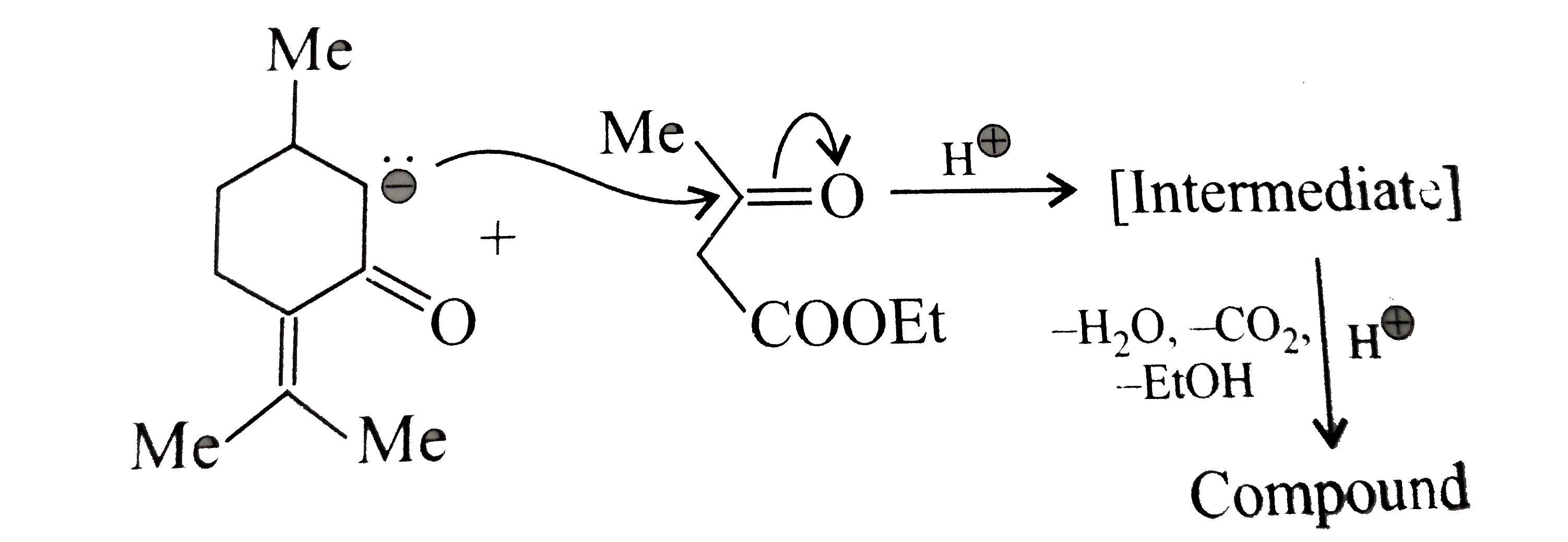 View Solution
View SolutionQuestion 84
Consider the following reaction in which compound (A) on reaction with EAA(MeCOCH2COOEt) in the presence of NaOEt/EtOH gives a product which on hydrolysis by different mechanisms.
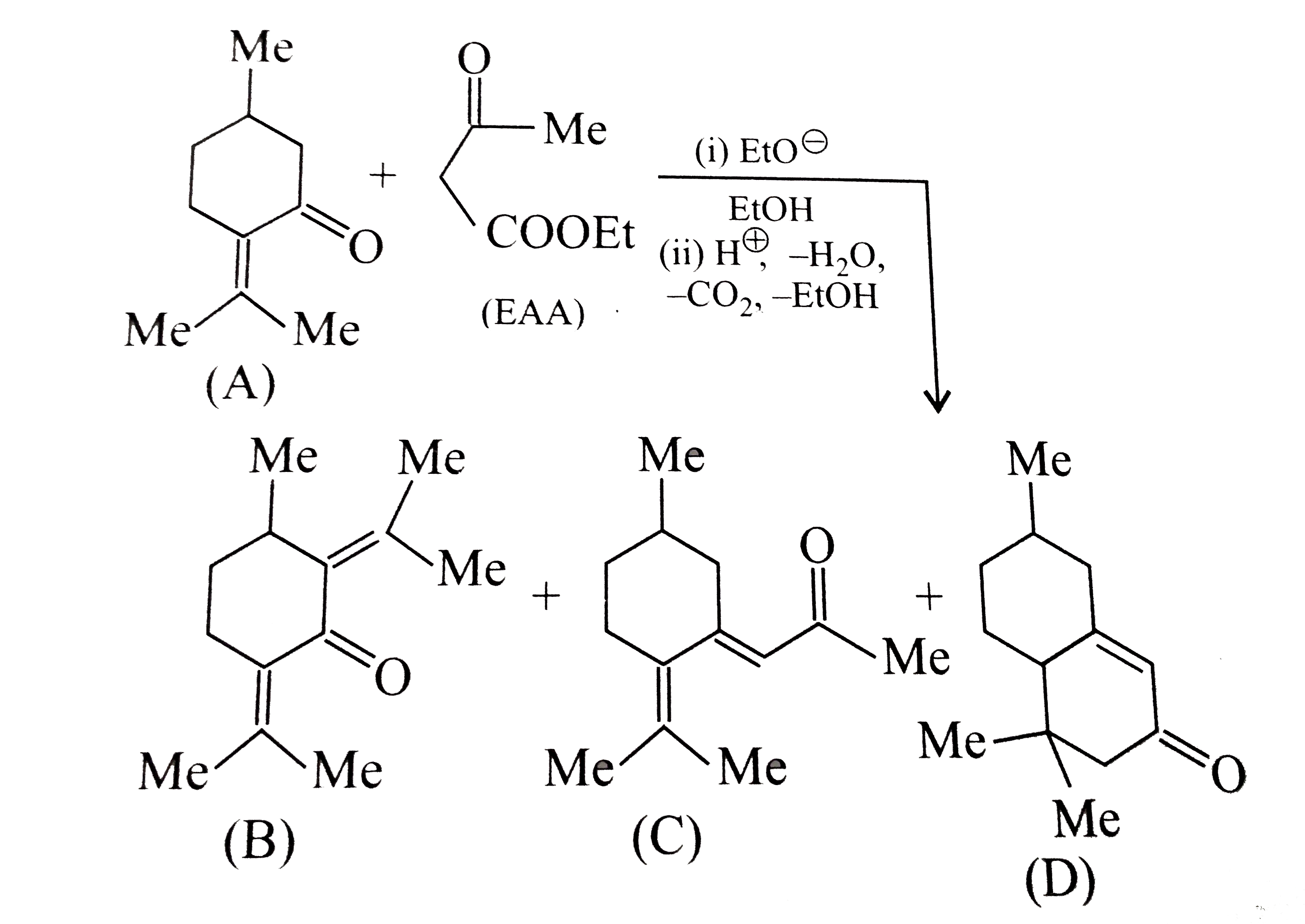
In another mechanism, EAA is carbonion source and (C=O) group of (A) is acceptor. Given the compounds formed by the aldol product resulting form this mechanism, followed by hydrolysis and decarboxylation.
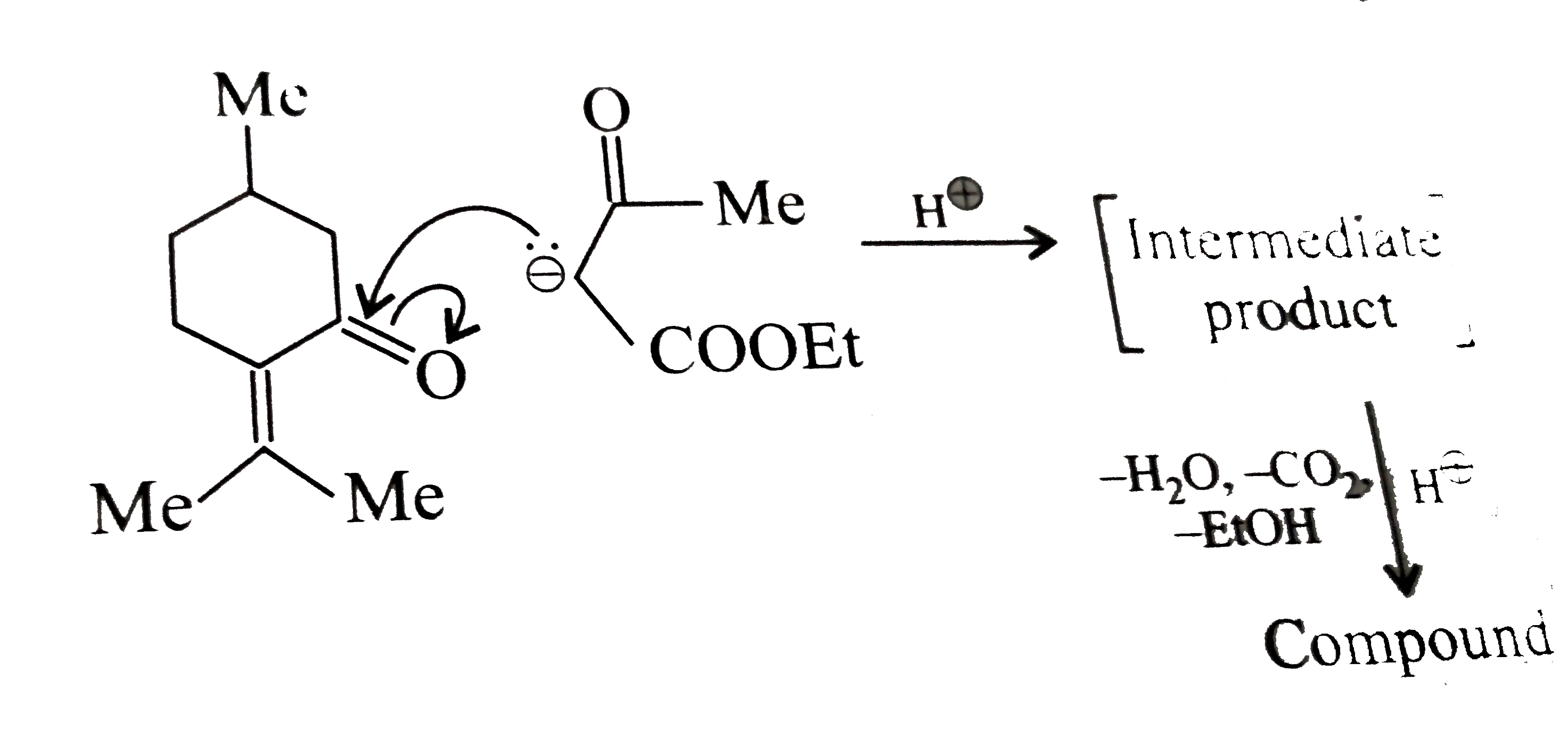 View Solution
View SolutionQuestion 85
Consider the following reaction in which compound (A) on reaction with EAA(MeCOCH2COOEt) in the presence of NaOEt/EtOH gives a product which on hydrolysis by different mechanisms.
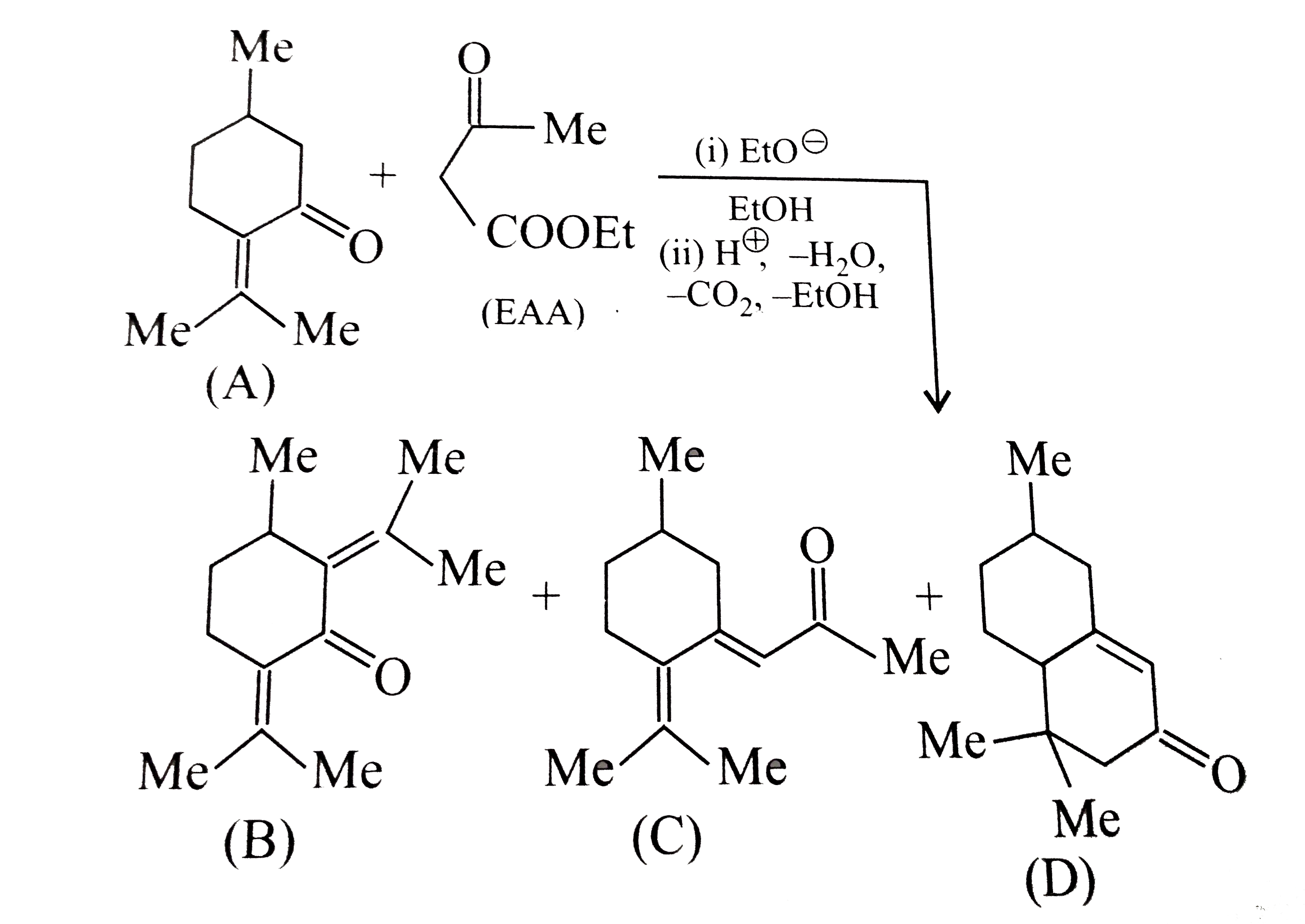
Another mechanism involved the formation of carbanion from the product in. It adds to the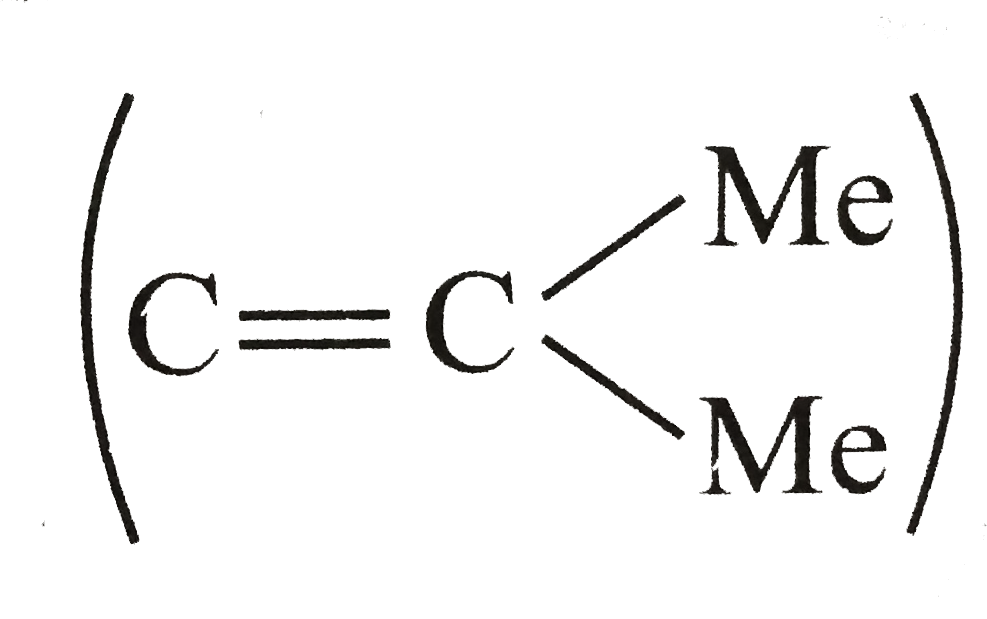 both of (A) (an intramolecular Michael addition), followed by hydrolysis with H3O⊕, to give final product. The compound is: View Solution
both of (A) (an intramolecular Michael addition), followed by hydrolysis with H3O⊕, to give final product. The compound is: View SolutionQuestion 97
Five isomeric p-subsituted aromatic compounds (A) to (E ) with molecular formula C8H8O2 are given for identifyication. Based on the following observation, give the structures of the compounds.
i. Both (A) and (B) form a silver mirror with Tollens reagent, (B) also gives a positive test with neutral FeCl3 solution.
ii. (C ) gives positive iodoform test.
iii. (D) is readily extracted in aqueous NaHCO3 solution.
iv. (E ) on acid hydrolysis gives 1,4-dihydroxy benzene.
Compound (A) is: View SolutionQuestion 98
Five isomeric p-subsituted aromatic compounds (A) to (E ) with molecular formula C8H8O2 are given for identifyication. Based on the following observition, give the strucctures of the compounds.
i. Both (A) and (B) form a silver mirror with Tollens reagent, (B) also gives a positive test with neutral FeCl3 solution.
ii. (C ) gives positive iodoform test.
iii. (D) is readily extracted in aqueous NaHCO3 solution.
iv. (E ) on acid hydrolysis gives 1,4-dihydroxy benzene.
Compound (B) is:View SolutionQuestion 99
Five isomeric p-subsituted aromatic compounds (A) to (E ) with molecular formula C8H8O2 are given for identifyication. Based on the following observition, give the strucctures of the compounds.
i. Both (A) and (B) form a silver mirror with Tollens reagent, (B) also gives a positive test with neutral FeCl3 solution.
ii. (C ) gives positive iodoform test.
iii. (D) is readily extracted in aqueous NaHCO3 solution.
iv. (E ) on acid hydrolysis gives 1,4-dihydroxy benzene.
Compound (C ) is:View SolutionQuestion 100
Five isomeric p-subsituted aromatic compounds (A) to (E ) with molecular formula C8H8O2 are given for identifyication. Based on the following observition, give the strucctures of the compounds.
i. Both (A) and (B) form a silver mirror with Tollens reagent, (B) also gives a positive test with neutral FeCl3 solution.
ii. (C ) gives positive iodoform test.
iii. (D) is readily extracted in aqueous NaHCO3 solution.
iv. (E ) on acid hydrolysis gives 1,4-dihydroxy benzene.
Compound (D) is:View SolutionQuestion 101
Five isomeric p-subsituted aromatic compounds (A) to (E ) with molecular formula C8H8O2 are given for identifyication. Based on the following observition, give the strucctures of the compounds.
i. Both (A) and (B) form a silver mirror with Tollens reagent, (B) also gives a positive test with neutral FeCl3 solution.
ii. (C ) gives positive iodoform test.
iii. (D) is readily extracted in aqueous NaHCO3 solution.
iv. (E ) on acid hydrolysis gives 1,4-dihydroxy benzene.
Compound (E ) is:View SolutionQuestion 230
A compound has molecular formula C6H12O. It does not reduce Tollens or Fehling's reagent, but gives a crystalline derivative with 2,4-dinitro-phenyl hydrazine. With alkali and I2, it gives yellow solid with a medicinal odour. Clemmensen reduction converts it to 2-methylpentane. The structure formula of the compound is most likely to be:View SolutionQuestion 245
Assertion (A): The equilibrium constant for cyanohydrin formation is =1013 times greater for cyclo-hexanone than for cyclophentanone.
Reason (R ): For a five-membered ring, reactions are more favourable when a ring C changes from sp3 to sp2 because eclipsing interactions are removed. View SolutionQuestion 252
Assertion (A): The reaction of 1 mol each of (MeCH==O) with glycerol ⎛⎜ ⎜⎝1C∣OHH2−2C∣OHH−3C∣OHH2⎞⎟ ⎟⎠ gives six separable isomers.
Reason (R ): Acetaldehydes react with 1-and 2-OH group of glycerol to form five-membered cyclic acetal. In the ring closure, two chiral centres are formed and thus we have pairs of enantiomers: cis and trans.
When acetaldehydes react with 1-and 3-OH groups, a six membered cyclic acetal is formed giving two disatereomeric products (cis and trans). These diastereomers are achiral. View SolutionQuestion 275
A tertiary alcohol (H) upon acid-catalysed dehydration gives a product (I). Ozonolysis of (I) leads to compounds (J) and (K). Compound (J) upon reaction with KOH gives benzyl alcohol and a compound (L), whereas (K) on reaction with KOH gives only (M).

Compound (H) is formed by the reaction of: View SolutionQuestion 276
A tertiary alcohol (H) upon acid-catalysed dehydration gives a product (I). Ozonolysis of (I) leads to compounds (J) and (K). Compound (J) upon reaction with KOH gives benzyl alcohol and a compound (L), whereas (K) on reaction with KOH gives only (M).
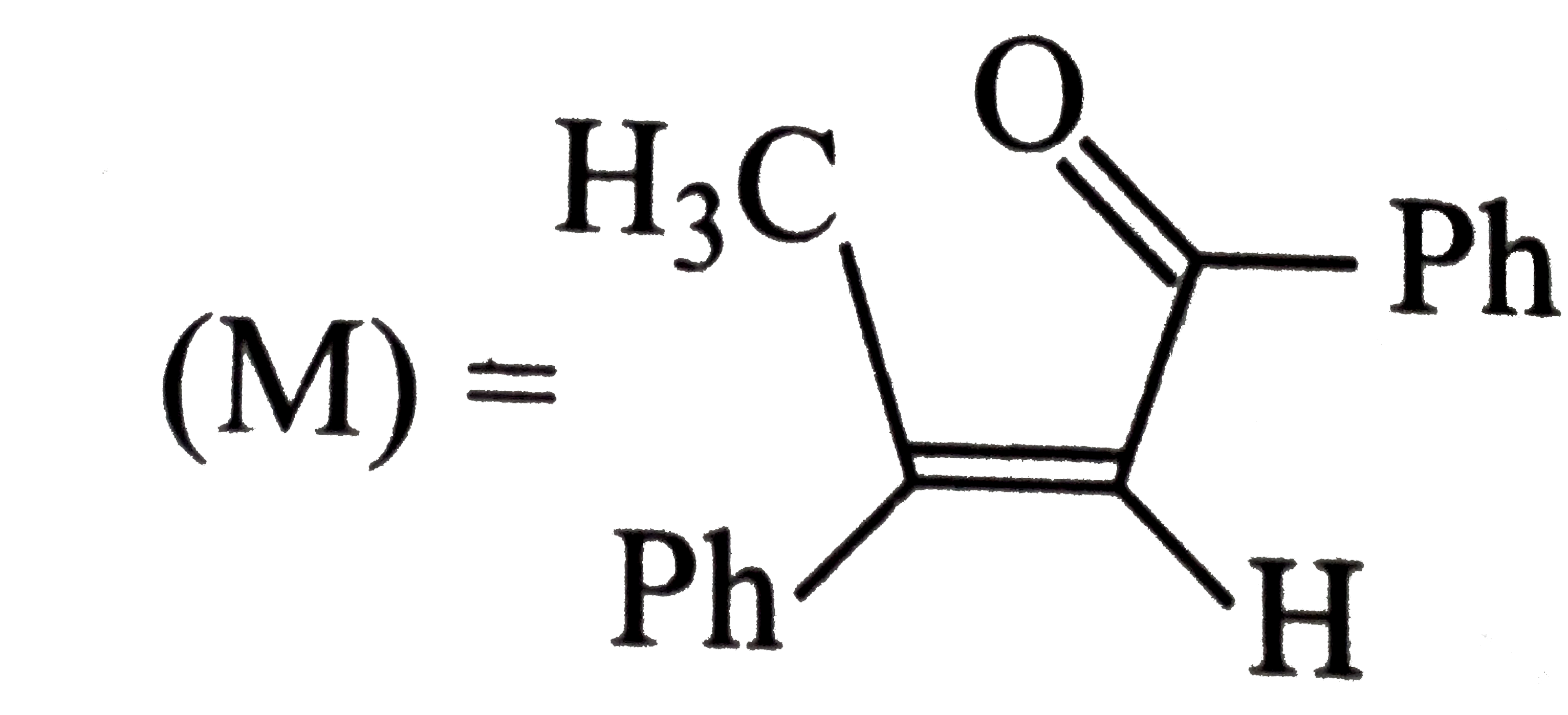
The structurer of compound (I) is:View SolutionQuestion 277
A tertiary alcohol (H) upon acid-catalysed dehydration gives a product (I). Ozonolysis of (I) leads to compounds (J) and (K). Compound (J) upon reaction with KOH gives benzyl alcohol and a compound (L), whereas (K) on reaction with KOH gives only (M).
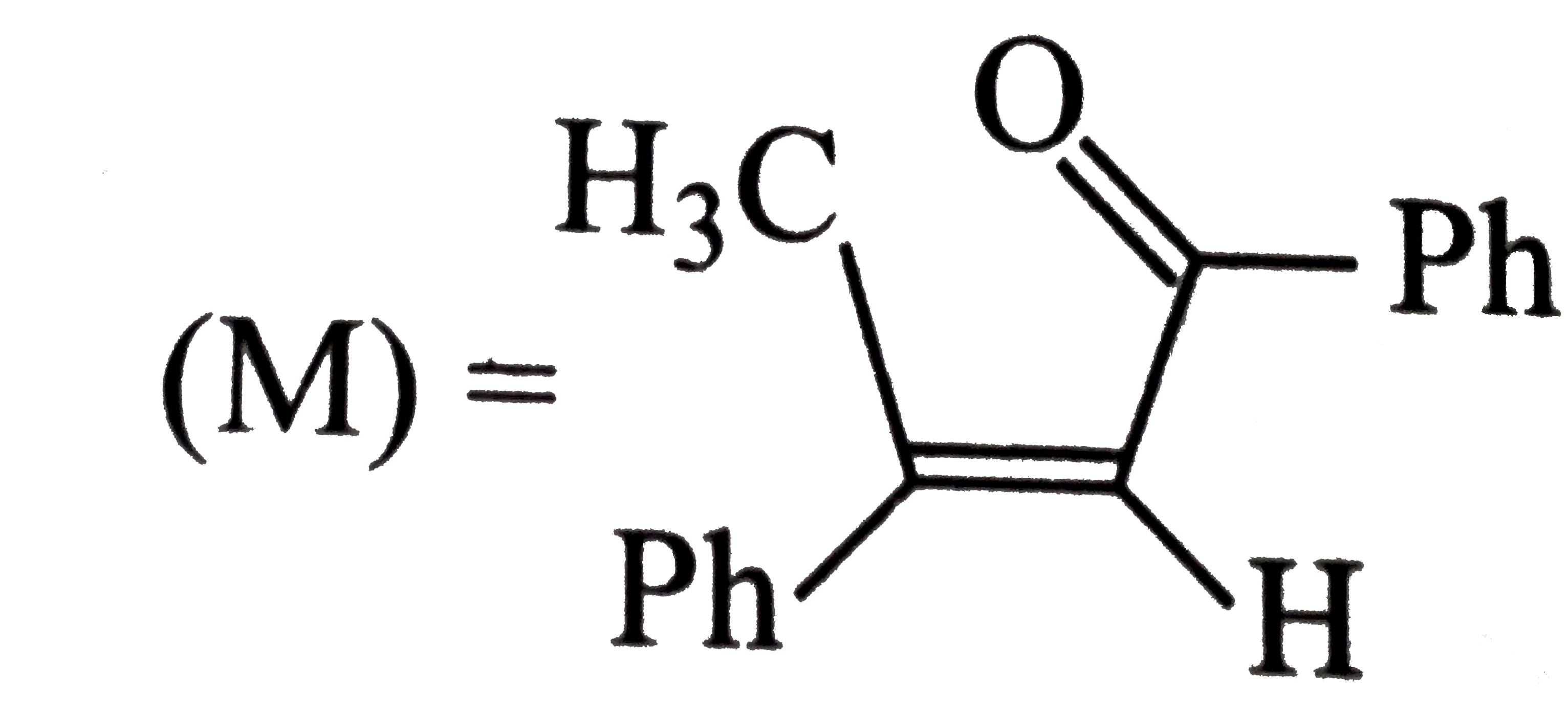
The structures of compounds (J), (K), and (L), respectively, are:View SolutionQuestion 278
A carbonyl compound (P) which gives positive iodoform test, undergoes reaction with MeMgBr followed by dehydration to give an olefin (Q). Ozonolysis of (Q) leads to a dicarbonyl compound (R ) which undergoes intramolecular aldol reaction to give predominantly (S).
P1.MeMgBr−−−−−−−→2.H+,H2O3.H2SO4,ΔQ1.O3−−−−−→2.Zn,H2OR1.OH−−−−−→2.ΔS
The structure of the carbonyl compound (P) is: View SolutionQuestion 279
A carbonyl compound (P) which gives positive iodoform test, undergoes reaction with MeMgBr followed by dehydration to give an olefin (Q). Ozonolysis of (Q) leads to a dicarbonyl compound (R ) which undergors intramolecular aldol reaction to give predominantly (S).
P1.MeMgBr−−−−−−−→2.H+,H2O3.H2SO4,ΔQ1.O3−−−−−→2.Zn,H2OR1.OH−−−−−→2.ΔS
The structure of products (Q) and (R ), respectively, are: View SolutionQuestion 280
A carbonyl compound (P) which gives positive iodoform test, undergoes reaction with MeMgBr followed by dehydration to give an olefin (Q). Ozonolysis of (Q) leads to a dicarbonyl compound (R ) which undergors intramolecular aldol reaction to give predominantly (S).
P1.MeMgBr−−−−−−−→2.H+,H2O3.H2SO4,ΔQ1.O3−−−−−→2.Zn,H2OR1.OH−−−−−→2.ΔS
The structure of product (S) is:View SolutionQuestion 290
Compound (A) (C6H12O2) on reduction with LiAlH4 yielded two compounds (B) and (C ). The compound (B) on oxidation gave (D), which on treatment with aqueous alkail and subsequent heating furnished (E ). The latter on catalytic hydrogenation gave (C ). The compound (D) was oxidised further to give (F) which was found to be a monobasic acid (molecular formula weight =60.0). Deduce the structures of (A), (B), (C ), (D), and (E ).View SolutionQuestion 301
Compound (A) (C8H8O) on treatment with NH2OH.HCl gives (B) and (C ). (B) and (C ) rearrange to give (D) and E, respectively, on treatment with acid. (B), (C ), (D), and (E ) are all isomers of molecular formula (C8H9NO). When (D) is boiled with alcoholic KOH, an oil (F) (C6H7N) separates out. (F) reacts rapidly with CH3COCl to give back (D). On the other hand, (E ) on boiling with alkali followed by acidification gives a white solid (G) (C7H6O2). Identify (A) to (G).View SolutionQuestion 305
An organic compound (A) (C6H10O) on reaction with CH3MgBr followed by acid treatment gives compound (B). The compound (B) on ozonolysis gives compound (C ), which in the presence of a base gives 1-acetyl cyclopentane (D). The compound (B) on reaction with HBr gives compound (E ). Write the structures of (A), (B), (C ), (D), and (E ). Show how (D) is formed from (C ). View SolutionQuestion 307
(C6H12)HCl−−→B(C6H13Cl)+(C)
(B)Alc.KOH−−−−−→(D) [isomer of (A)]
(D)Ozonolysis−−−−−→(E) (It gives negative test with Fehling's solution but responds to iodoform test)
(A)Ozonolysis−−−−−−→(F)+(G) (Both give positive Tollens test but do not give iodoform test)
(F)+(G)Conc.NaOH−−−−−−−→HCOONa + A primary alcohol .
Identify A to G.View Solution
All Exercises from CENGAGE CHEMISTRY (HINGLISH) Class 12 CHEMISTRY ALIPHATIC AND AROMATIC ALDEHYDES AND KETONES
- ARCHIVES FILL IN THEBLANKS
- ARCHIVES LINKED COMPREHENSION
- ARCHIVES MULTIPLE CORRECT
- ARCHIVES OBJECTIVE
- ARCHIVES SUBJECTIVE
- ARCHIVES TRUE AND FALSE
- EXERCISES ASSERTION-REASONING
- EXERCISES CONCEPT APPLICATION
- EXERCISES LINKED COMPREHENSION
- EXERCISES MULTIPLE CORRECT
- EXERCISES SINGLE CORRECT
- EXERCISES SUBJECTIVE
- ARCHIVES FILL IN THEBLANKS
- ARCHIVES LINKED COMPREHENSION
- ARCHIVES MULTIPLE CORRECT
- ARCHIVES OBJECTIVE
- ARCHIVES SUBJECTIVE
- ARCHIVES TRUE AND FALSE
- EXERCISES ASSERTION-REASONING
- EXERCISES CONCEPT APPLICATION
- EXERCISES LINKED COMPREHENSION
- EXERCISES MULTIPLE CORRECT
- EXERCISES SINGLE CORRECT
- EXERCISES SUBJECTIVE
- ARCHIVES FILL IN THEBLANKS
- ARCHIVES LINKED COMPREHENSION
- ARCHIVES MULTIPLE CORRECT
- ARCHIVES OBJECTIVE
- ARCHIVES SUBJECTIVE
- ARCHIVES TRUE AND FALSE
- EXERCISES ASSERTION-REASONING
- EXERCISES CONCEPT APPLICATION
- EXERCISES LINKED COMPREHENSION
- EXERCISES MULTIPLE CORRECT
- EXERCISES SINGLE CORRECT
- EXERCISES SUBJECTIVE
- ARCHIVES FILL IN THEBLANKS
- ARCHIVES LINKED COMPREHENSION
- ARCHIVES MULTIPLE CORRECT
- ARCHIVES OBJECTIVE
- ARCHIVES SUBJECTIVE
- ARCHIVES TRUE AND FALSE
- EXERCISES ASSERTION-REASONING
- EXERCISES CONCEPT APPLICATION
- EXERCISES LINKED COMPREHENSION
- EXERCISES MULTIPLE CORRECT
- EXERCISES SINGLE CORRECT
- EXERCISES SUBJECTIVE
- ILLUSTRATION
- SOLVED EXAMPLES
- ILLUSTRATION
- SOLVED EXAMPLES
- ILLUSTRATION
- SOLVED EXAMPLES
- ILLUSTRATION
- SOLVED EXAMPLES






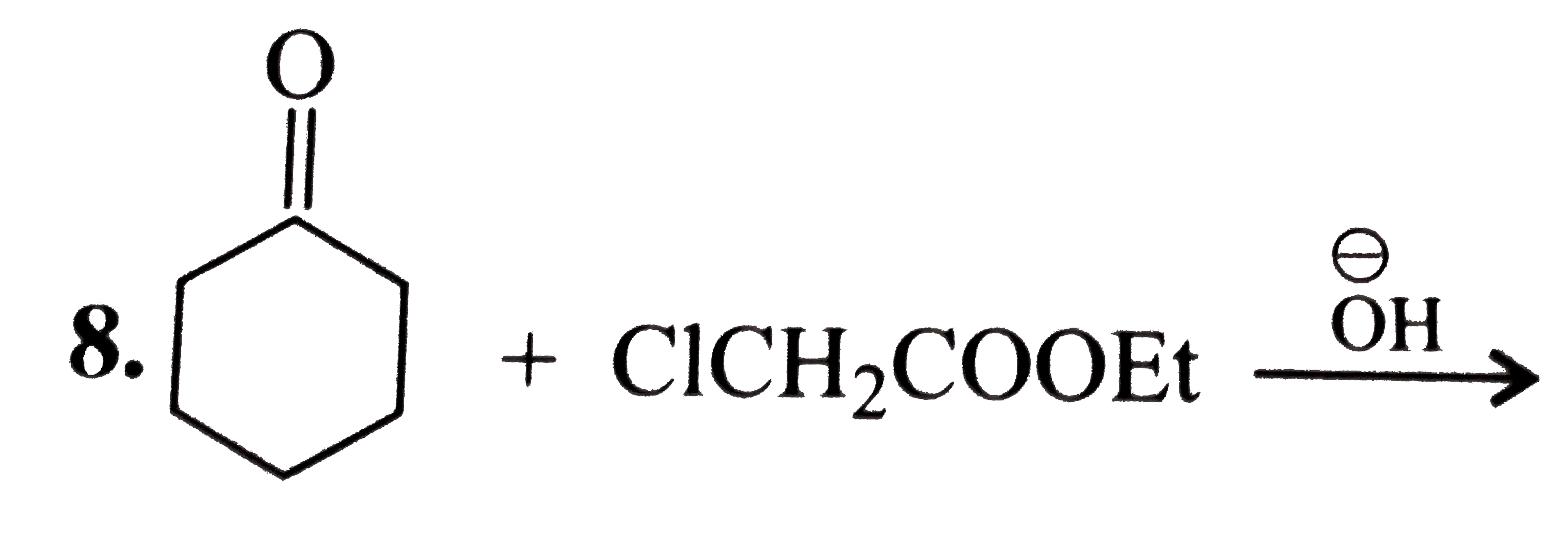
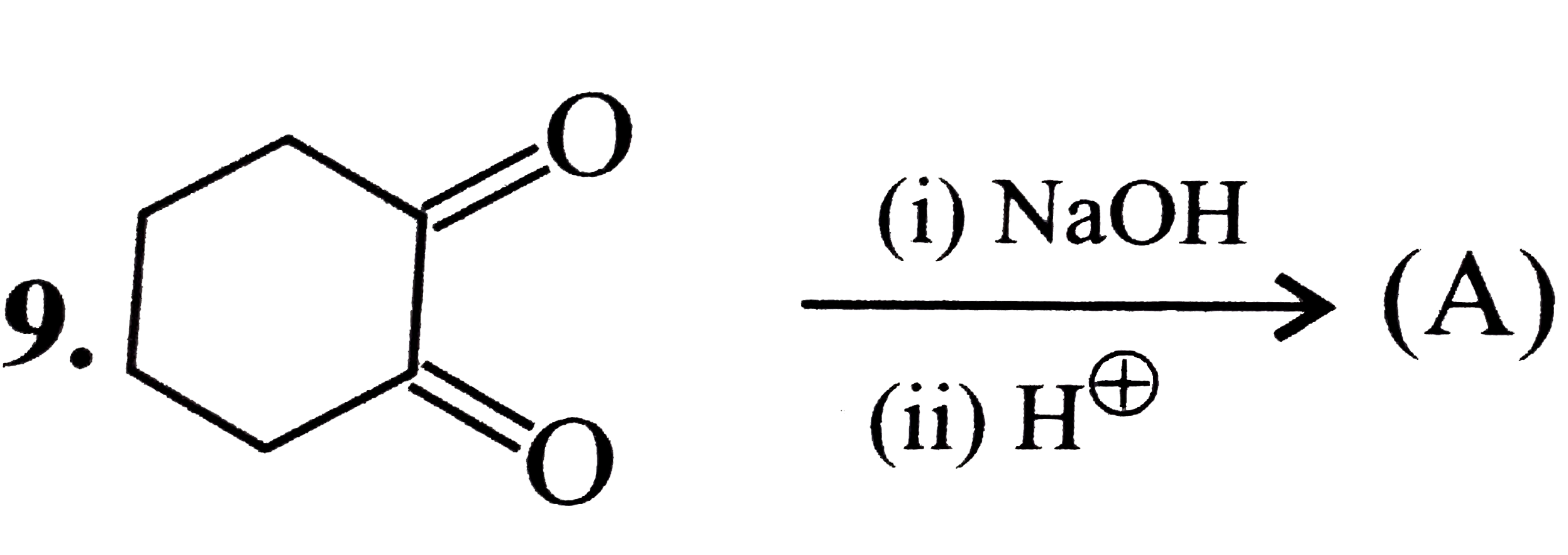



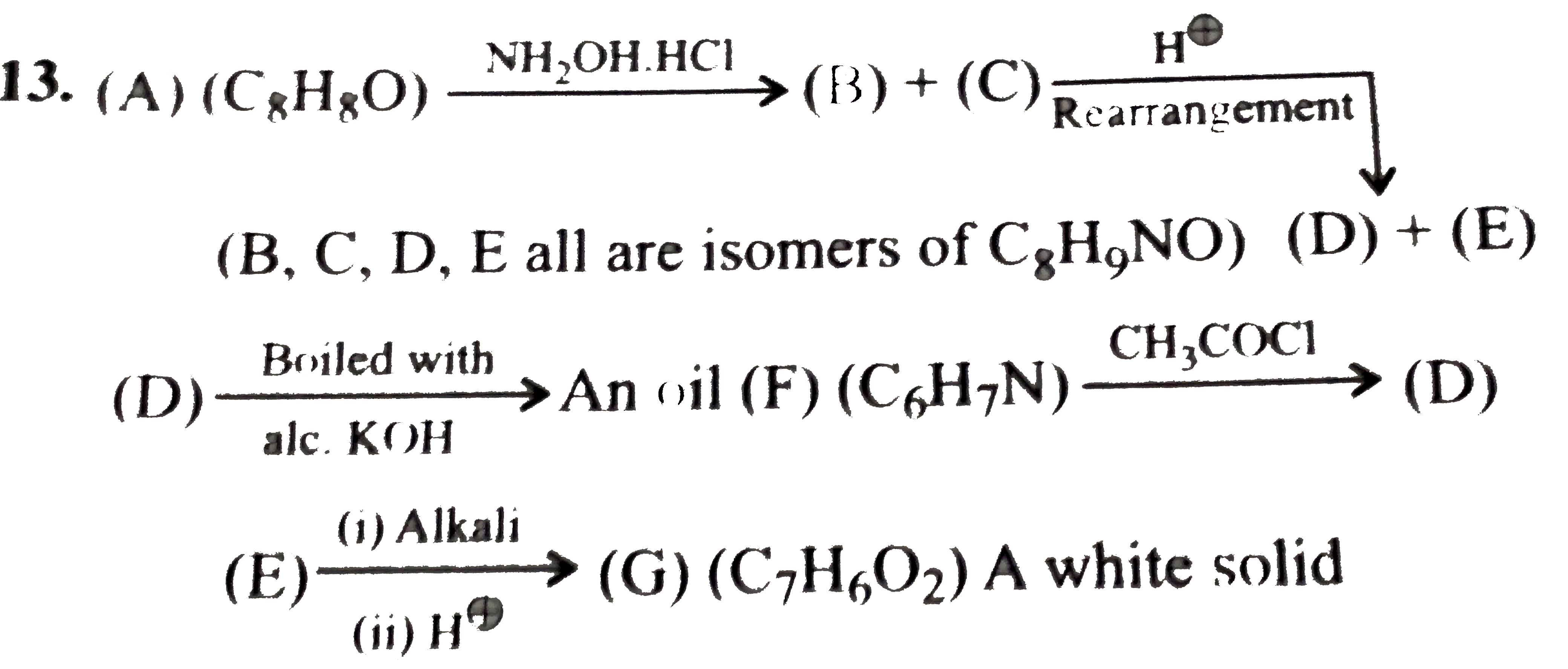


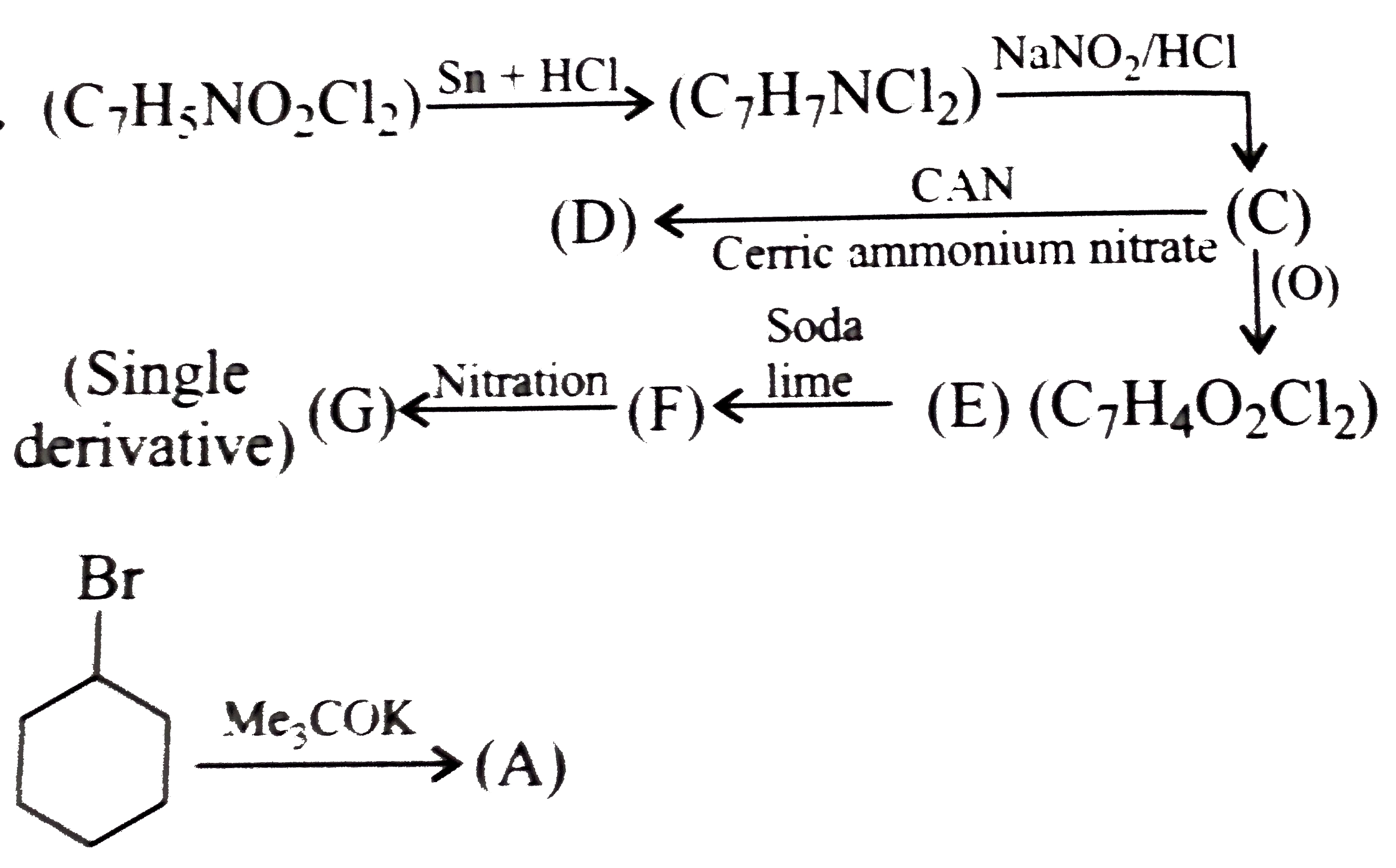
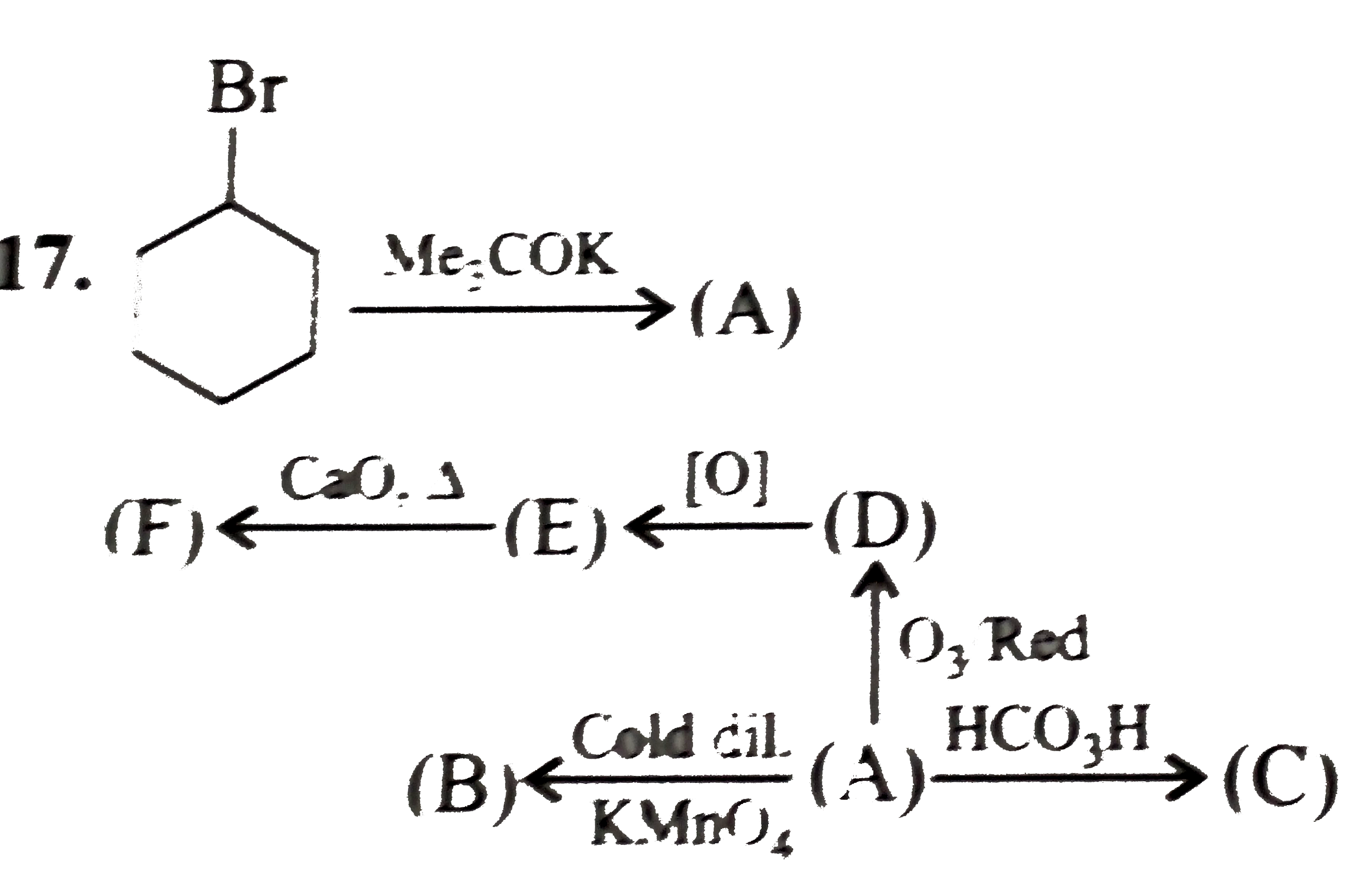
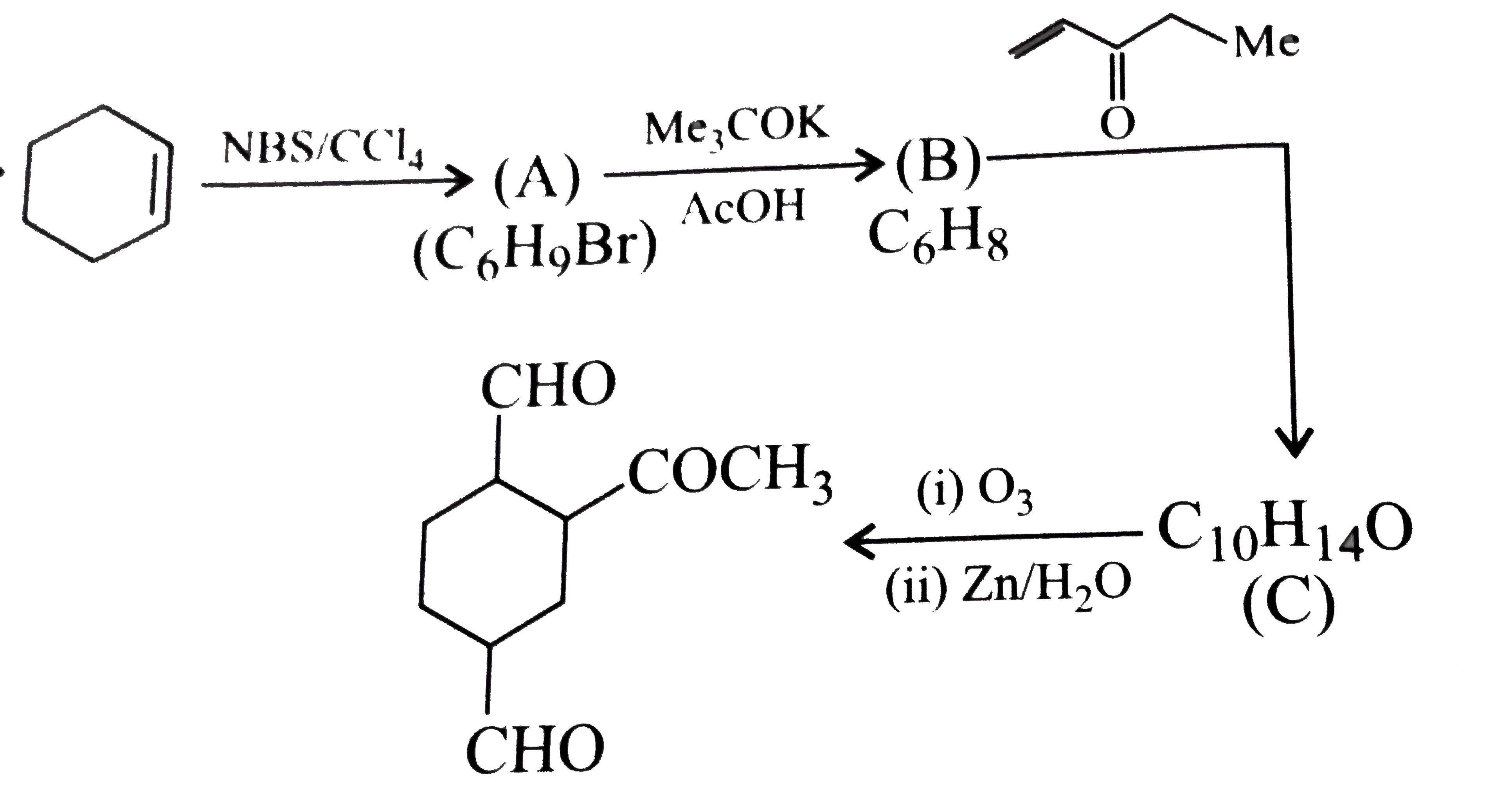


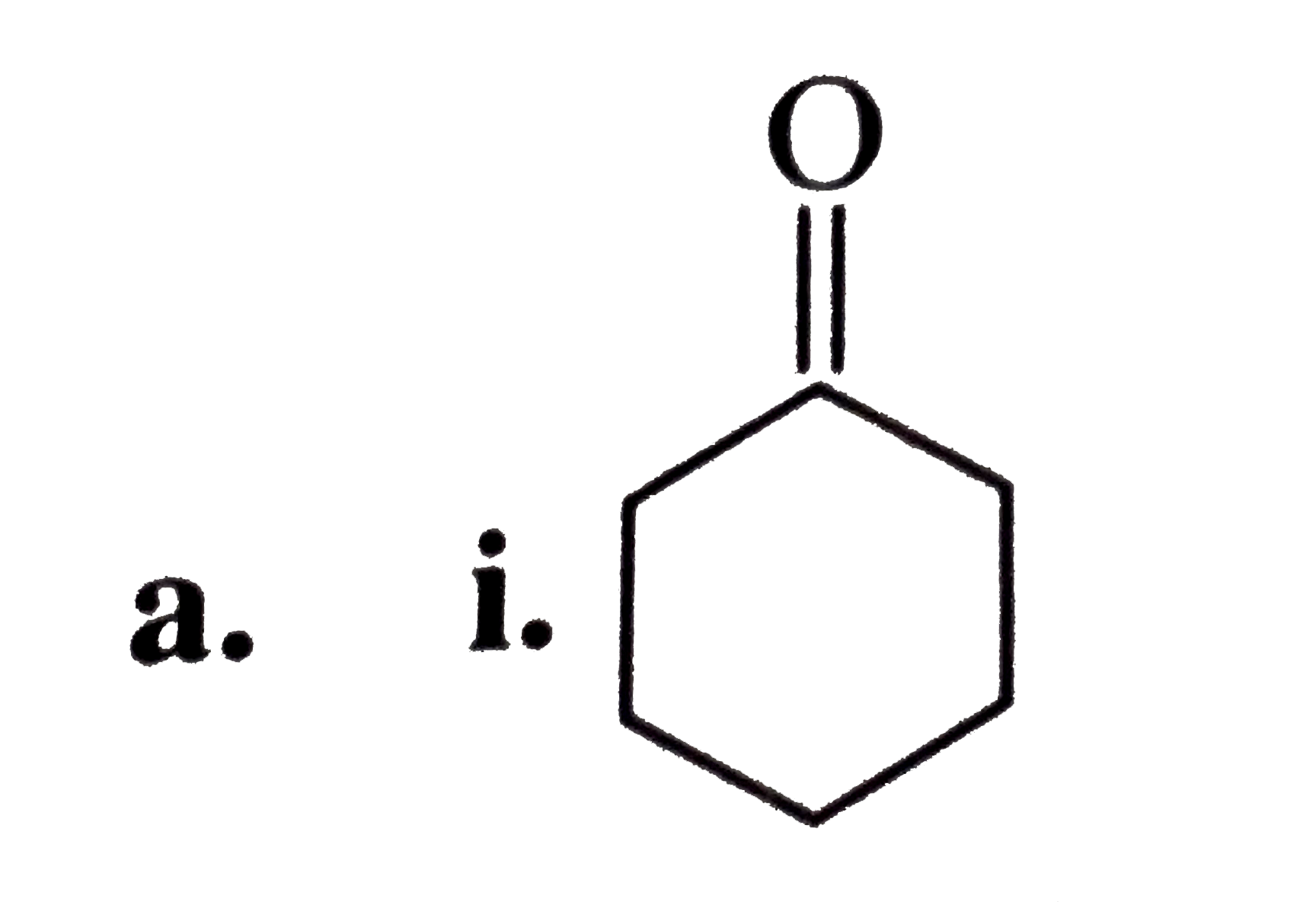 ii.
ii. 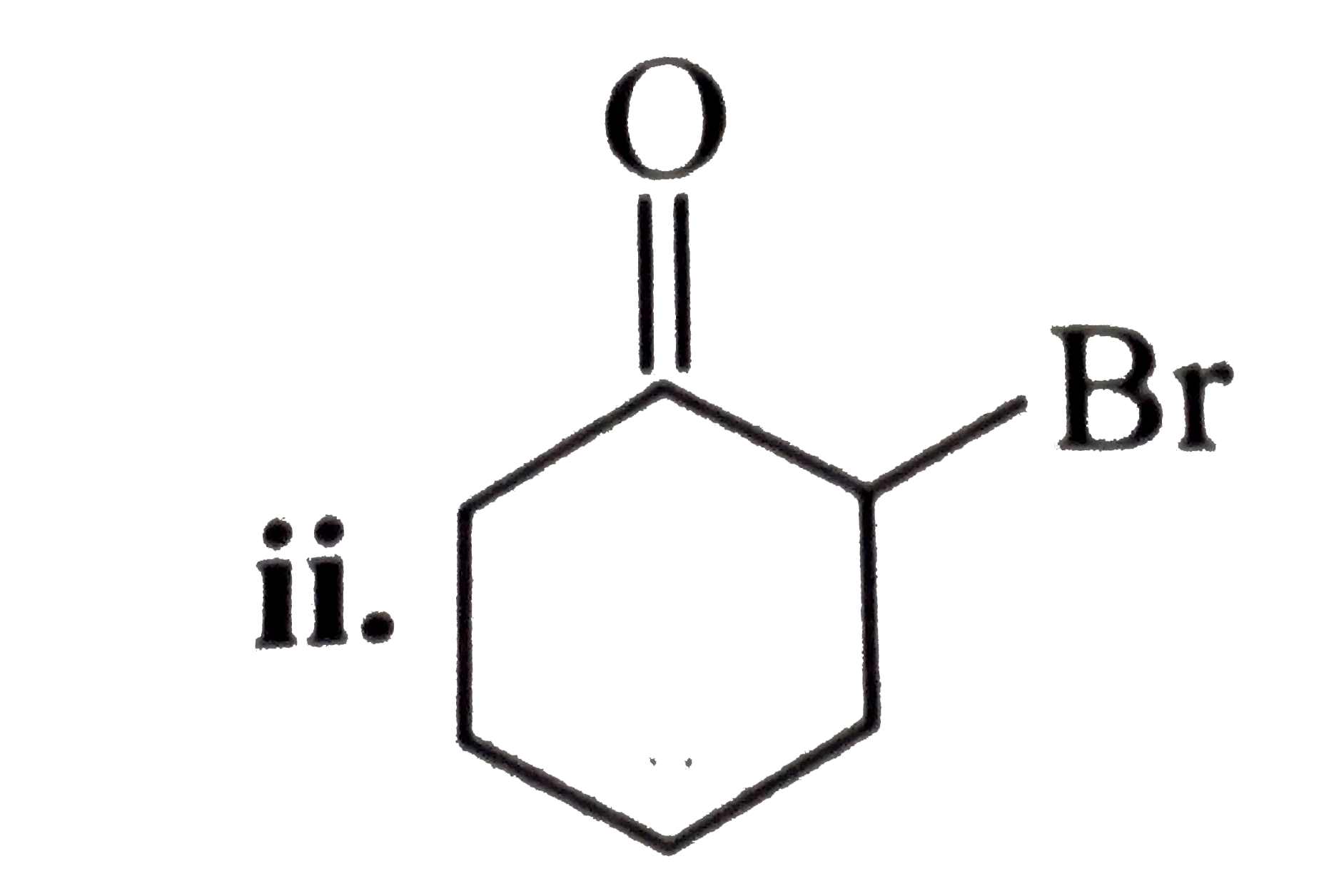
 iv.
iv. 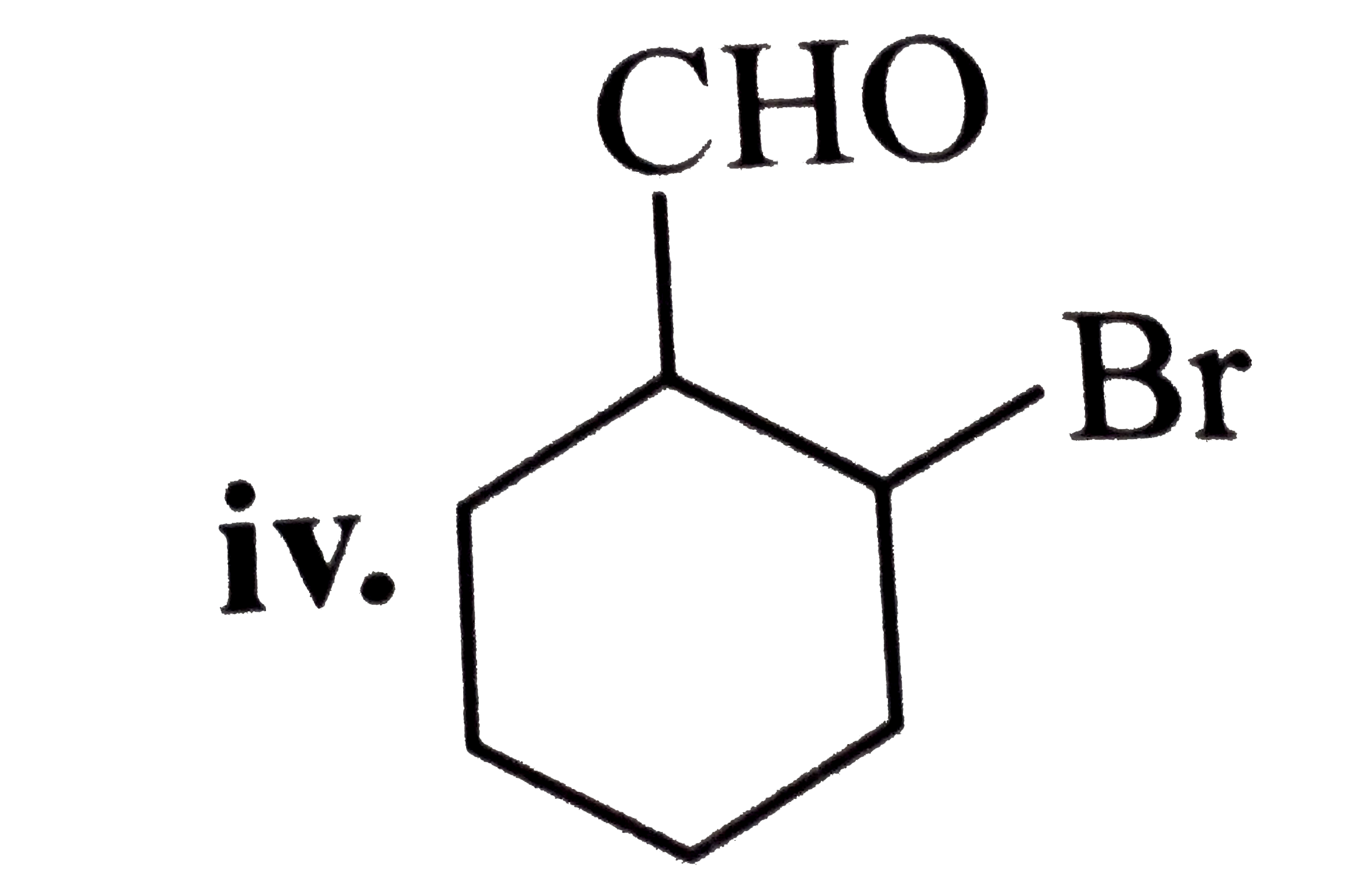

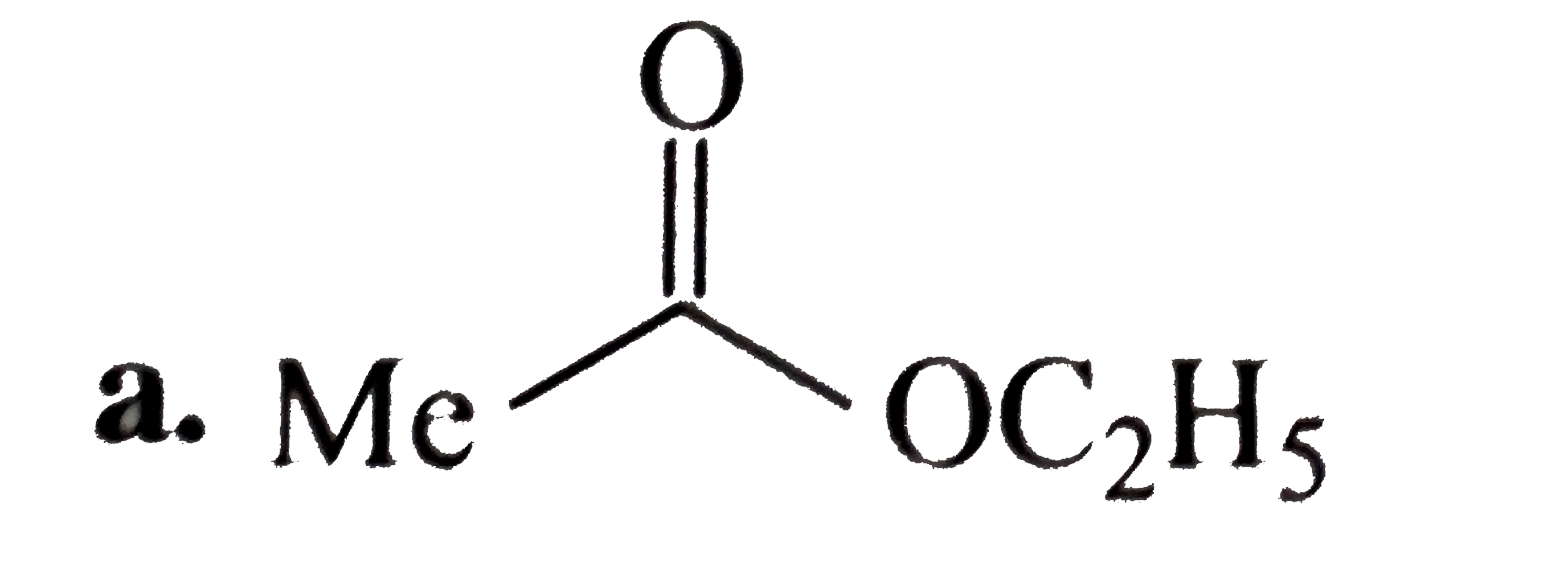
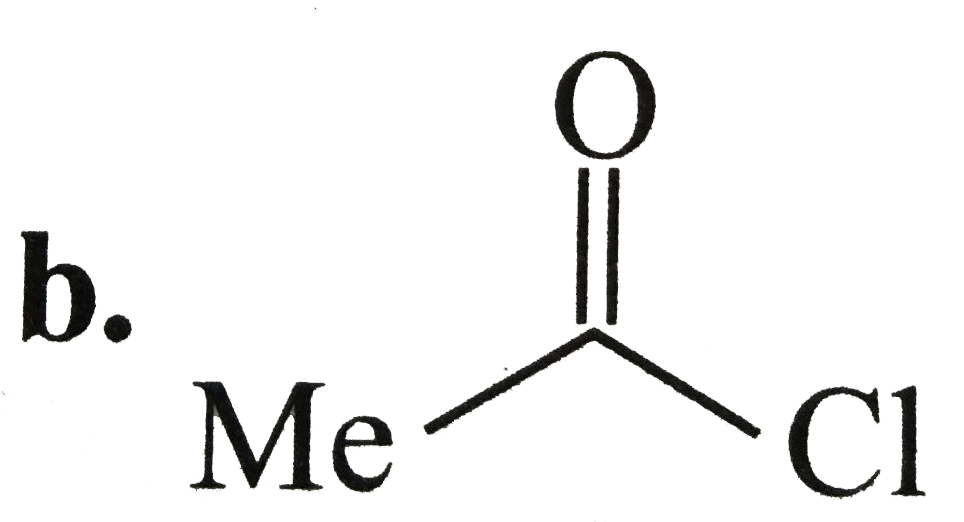
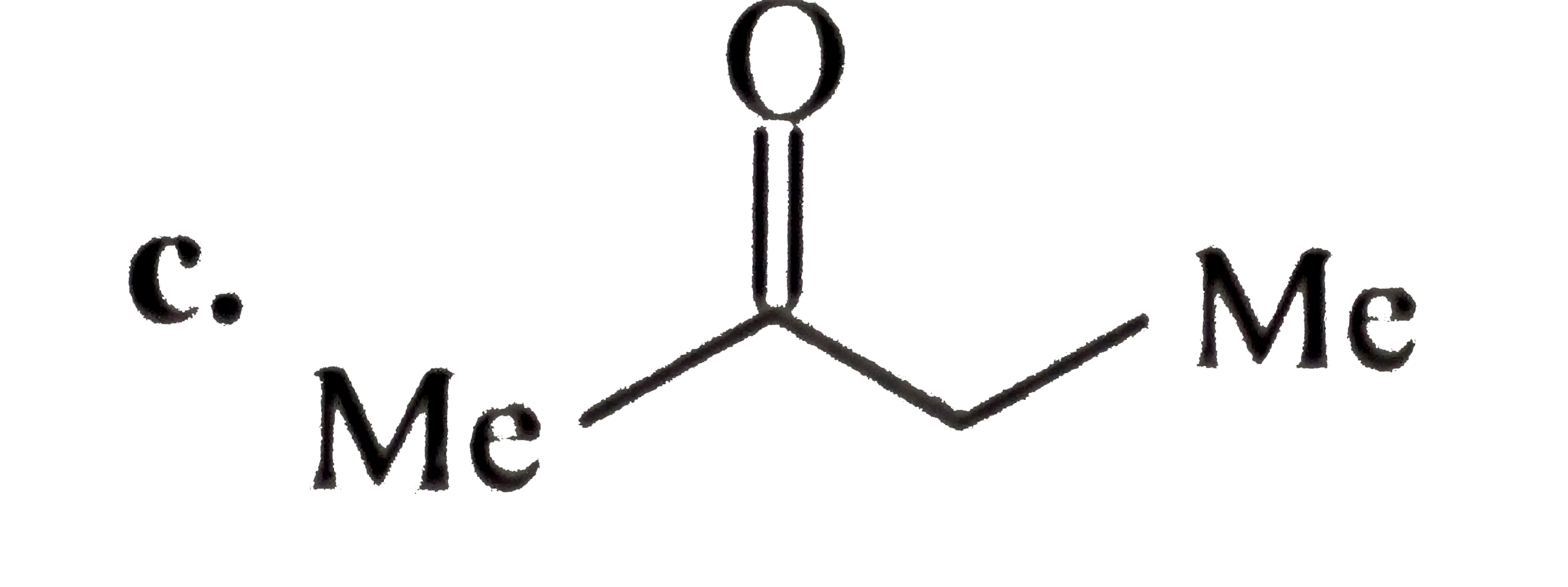
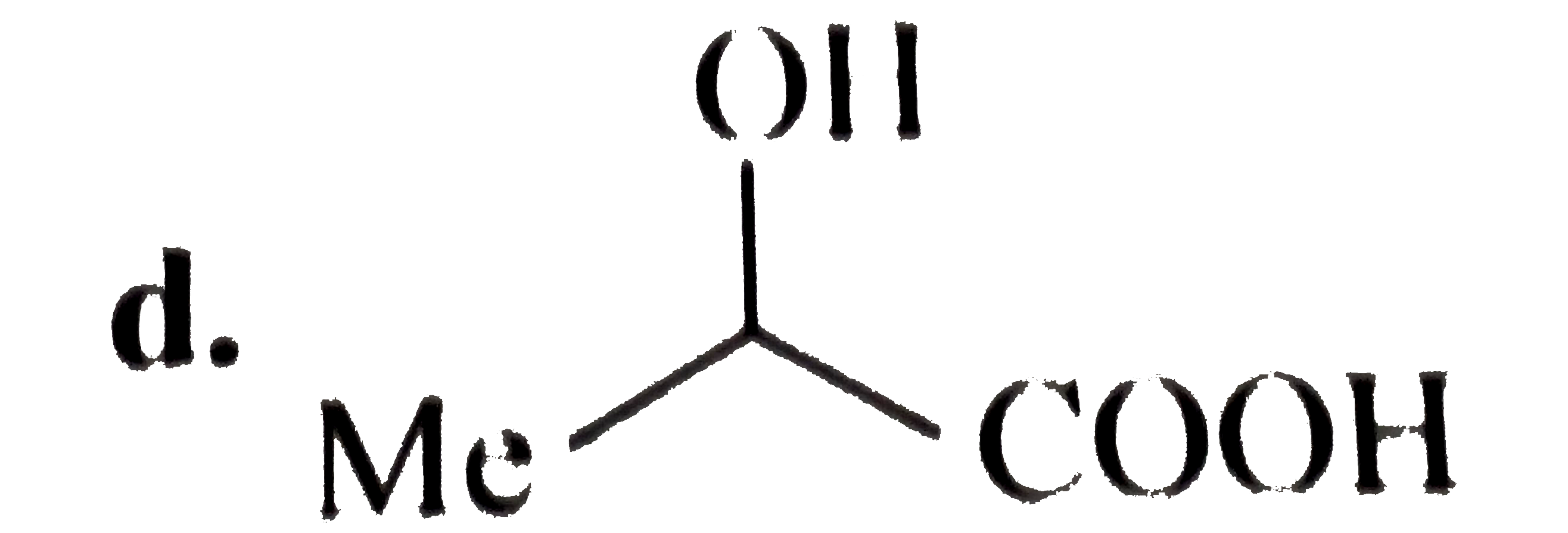
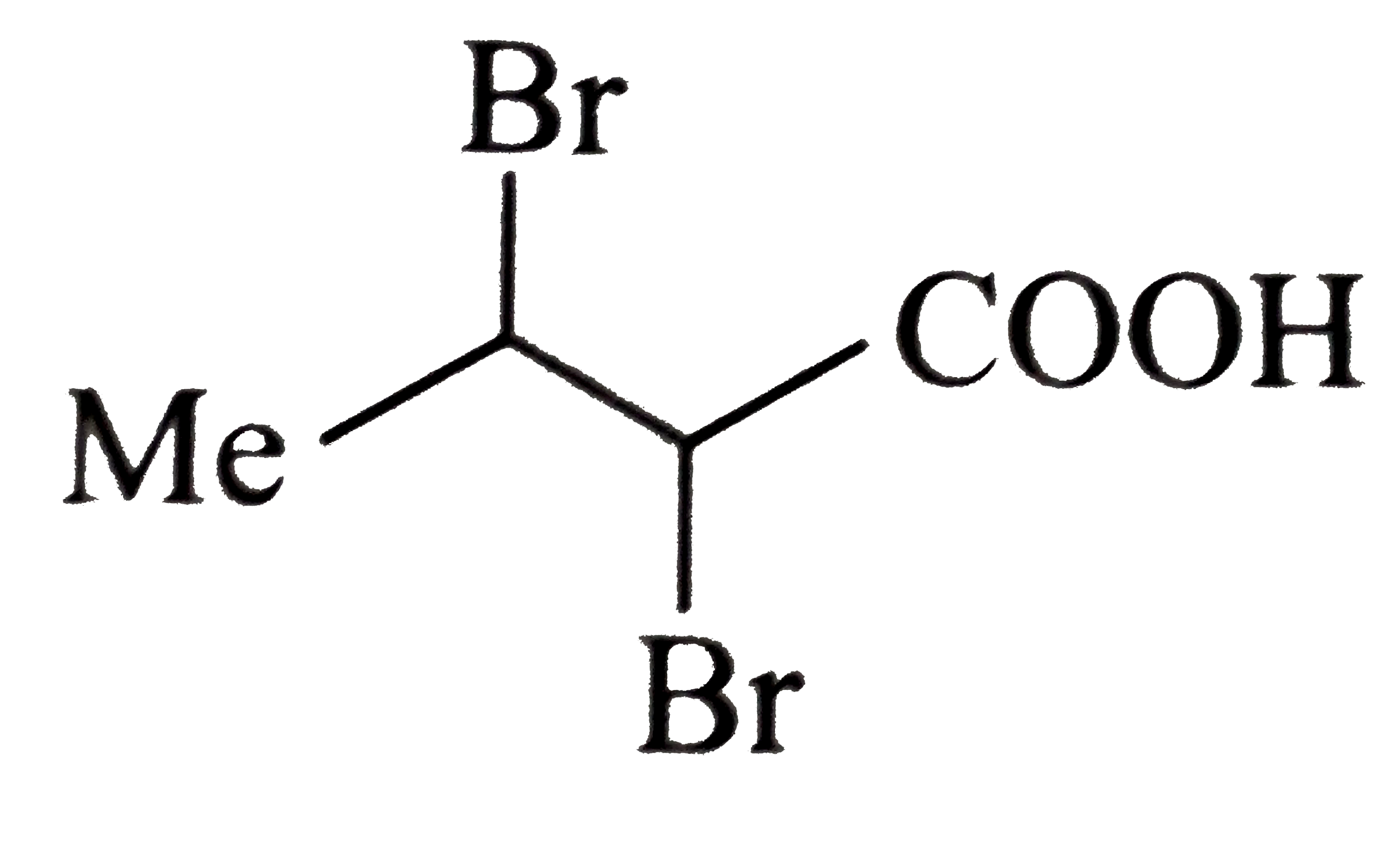



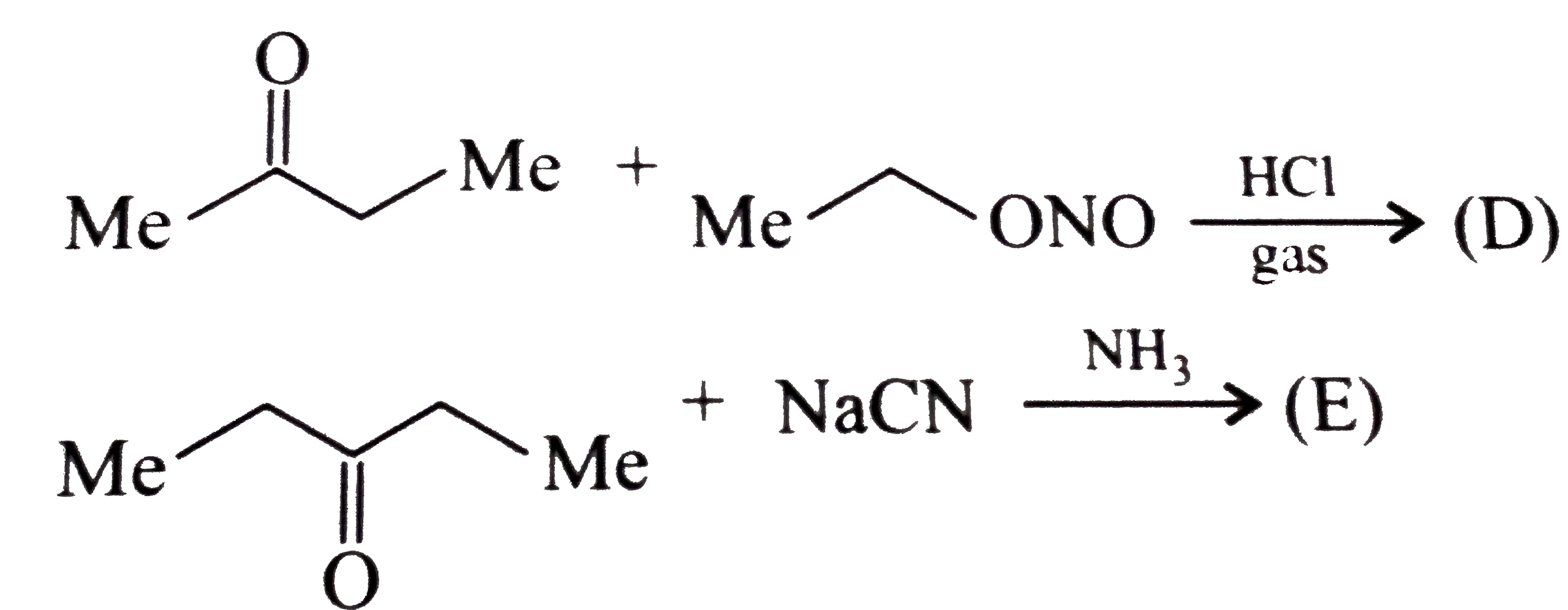



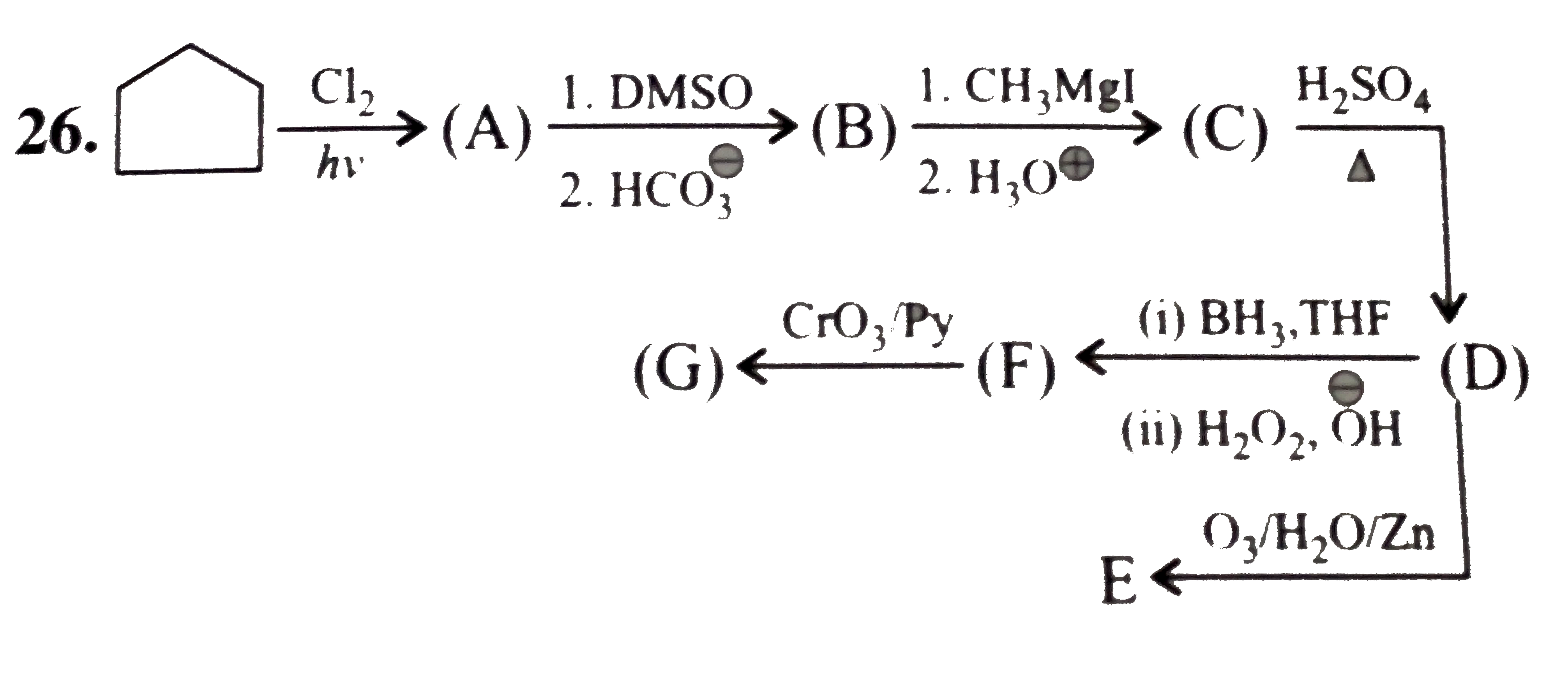

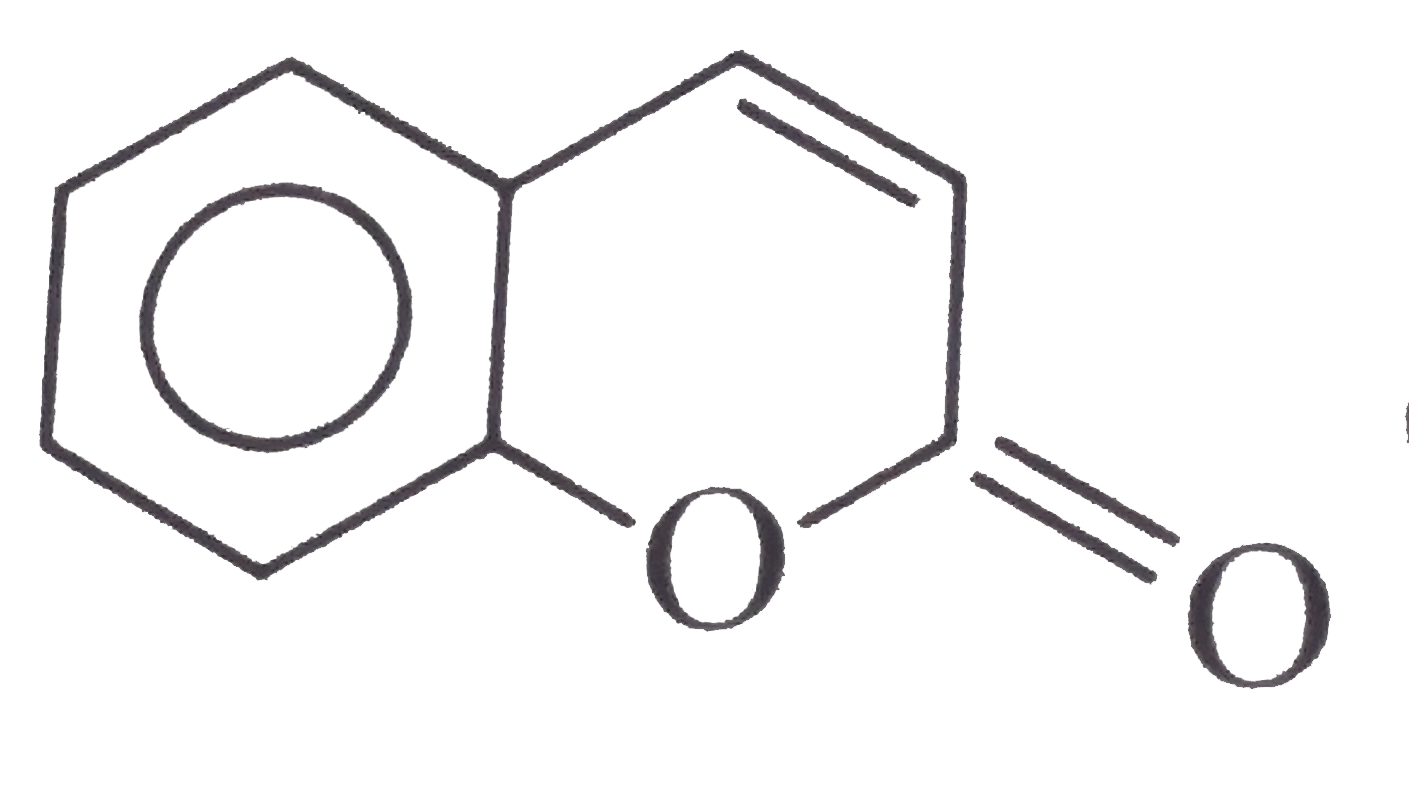 (coumarin).
(coumarin).



 and vice versa.
and vice versa.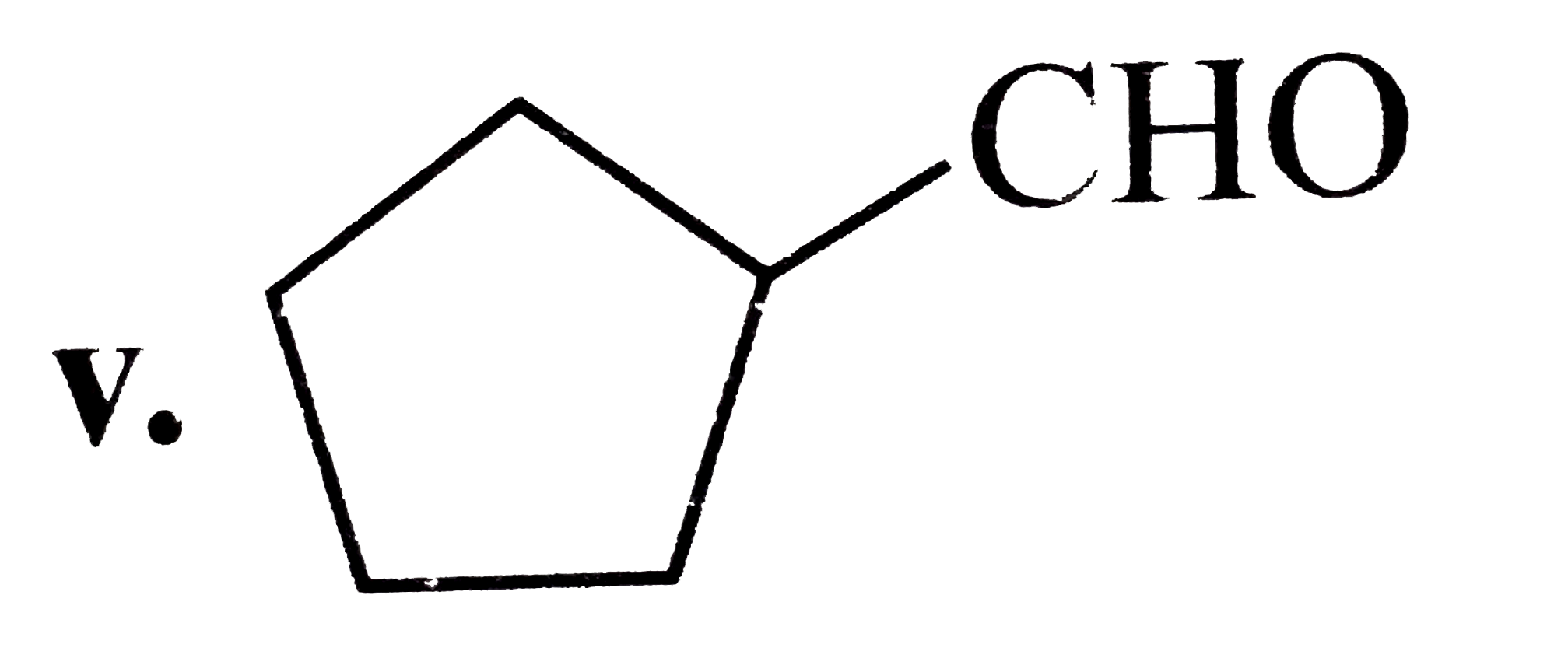
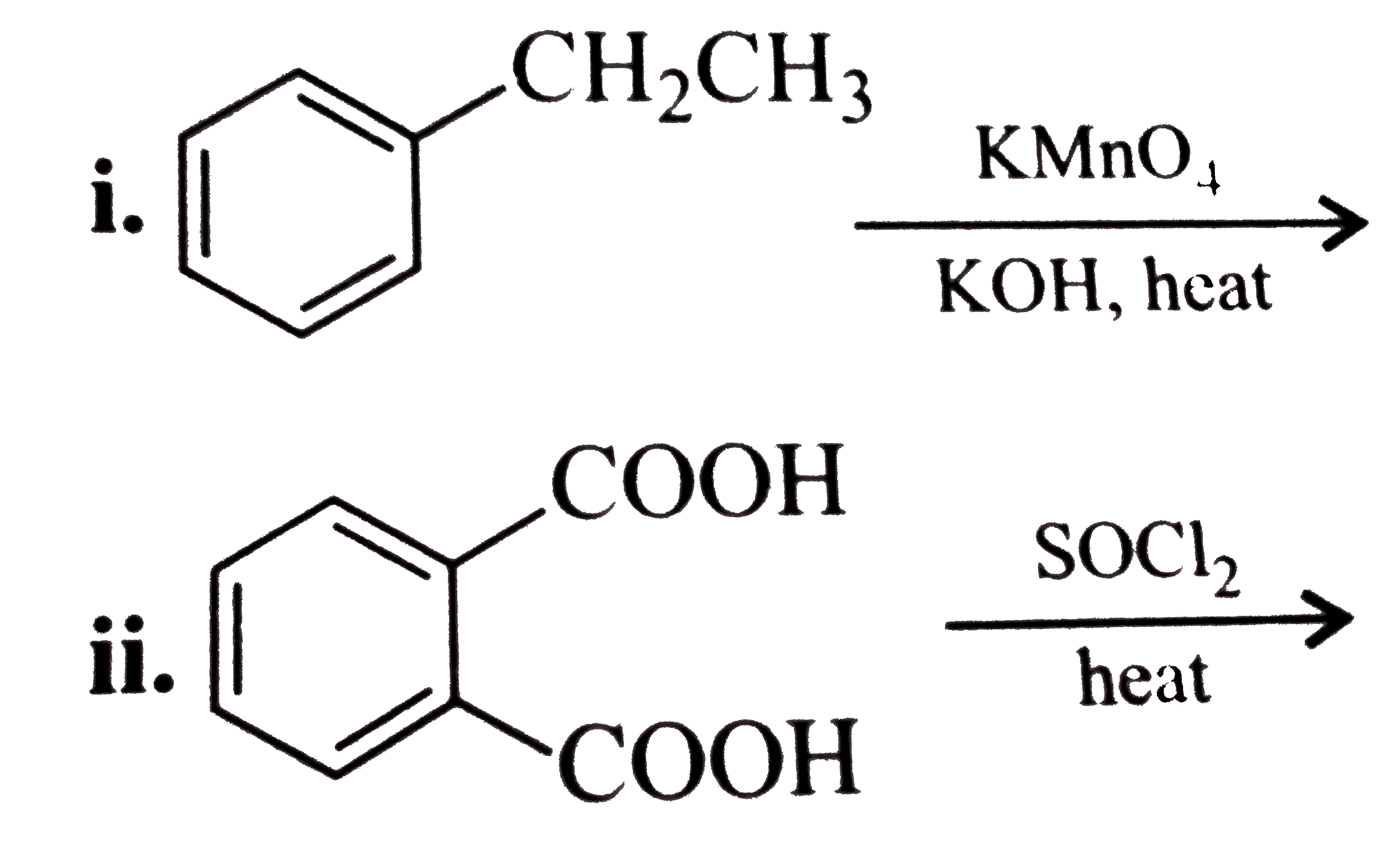
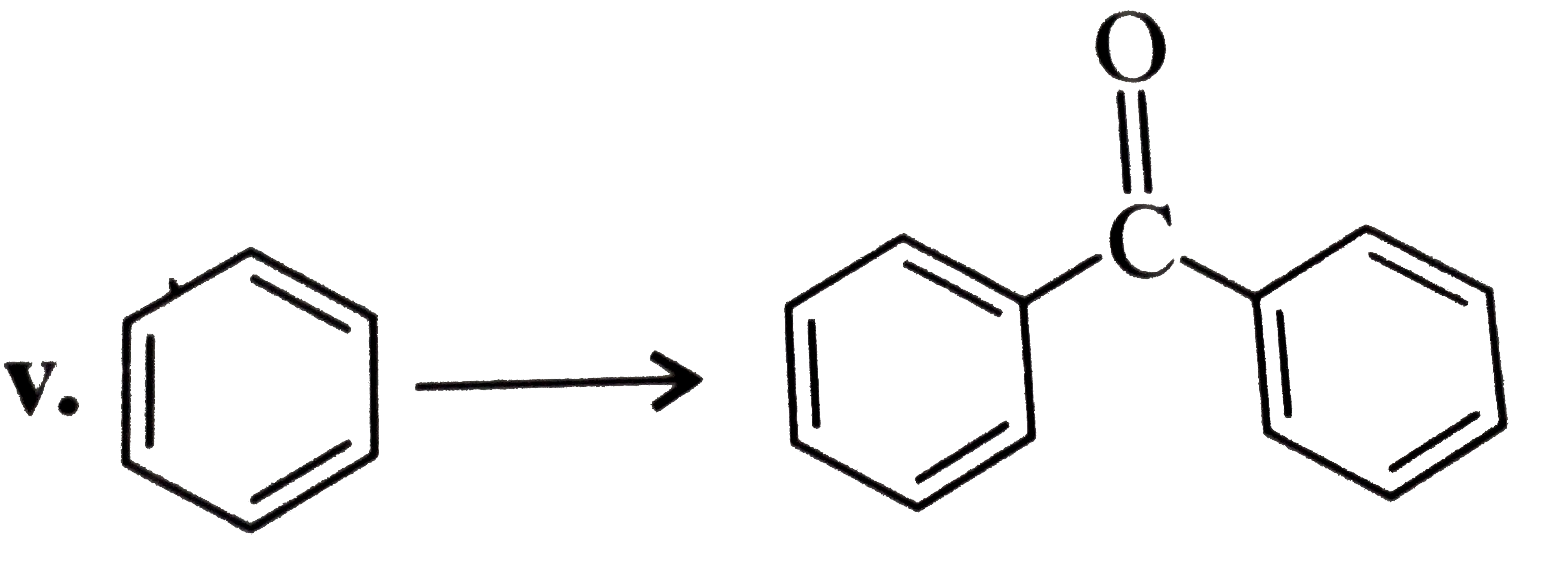


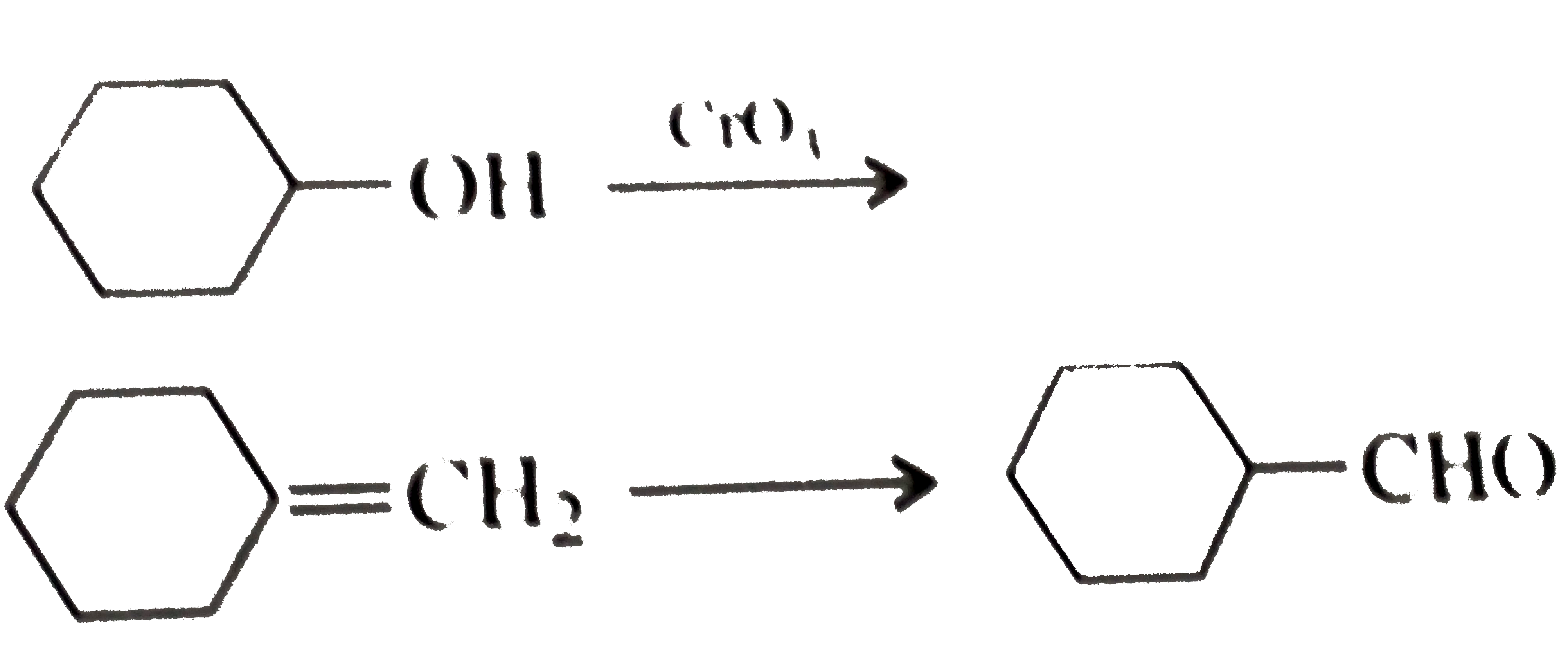







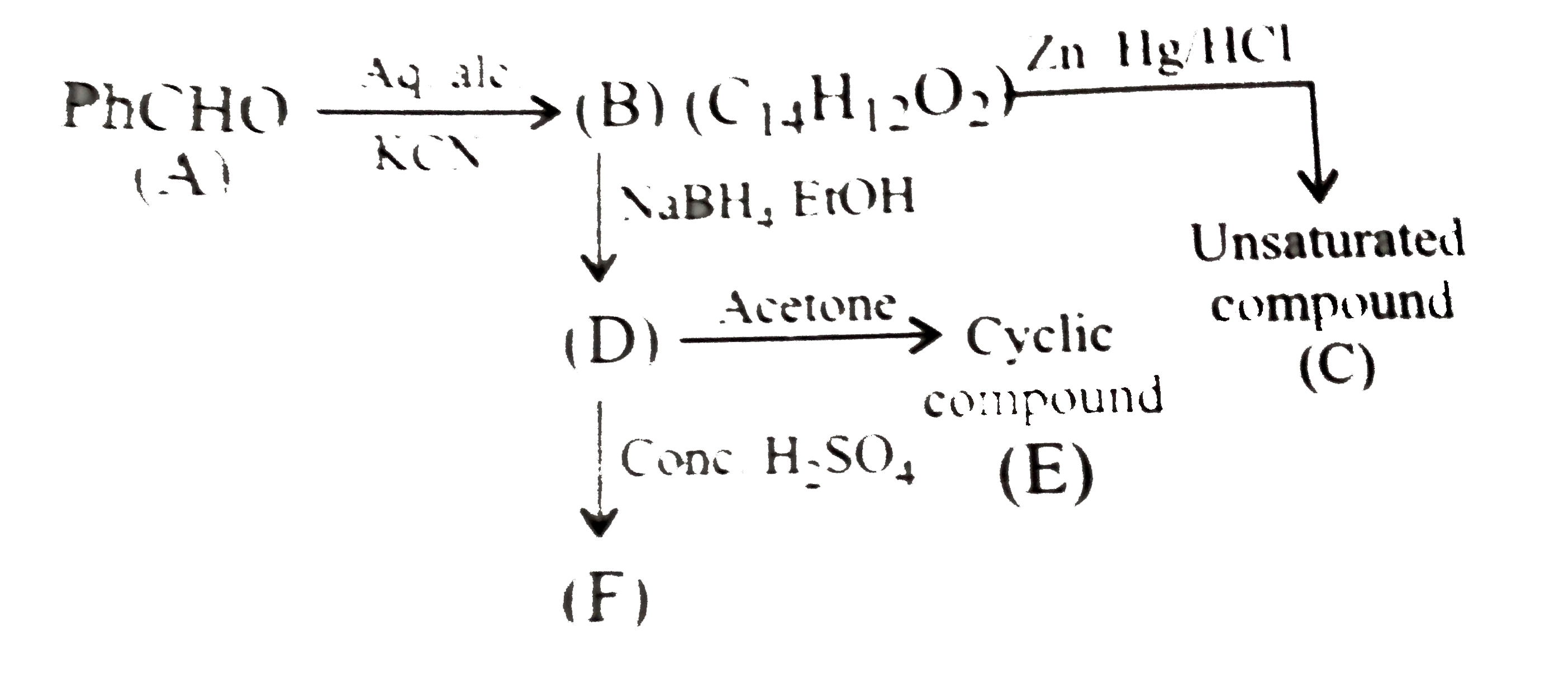
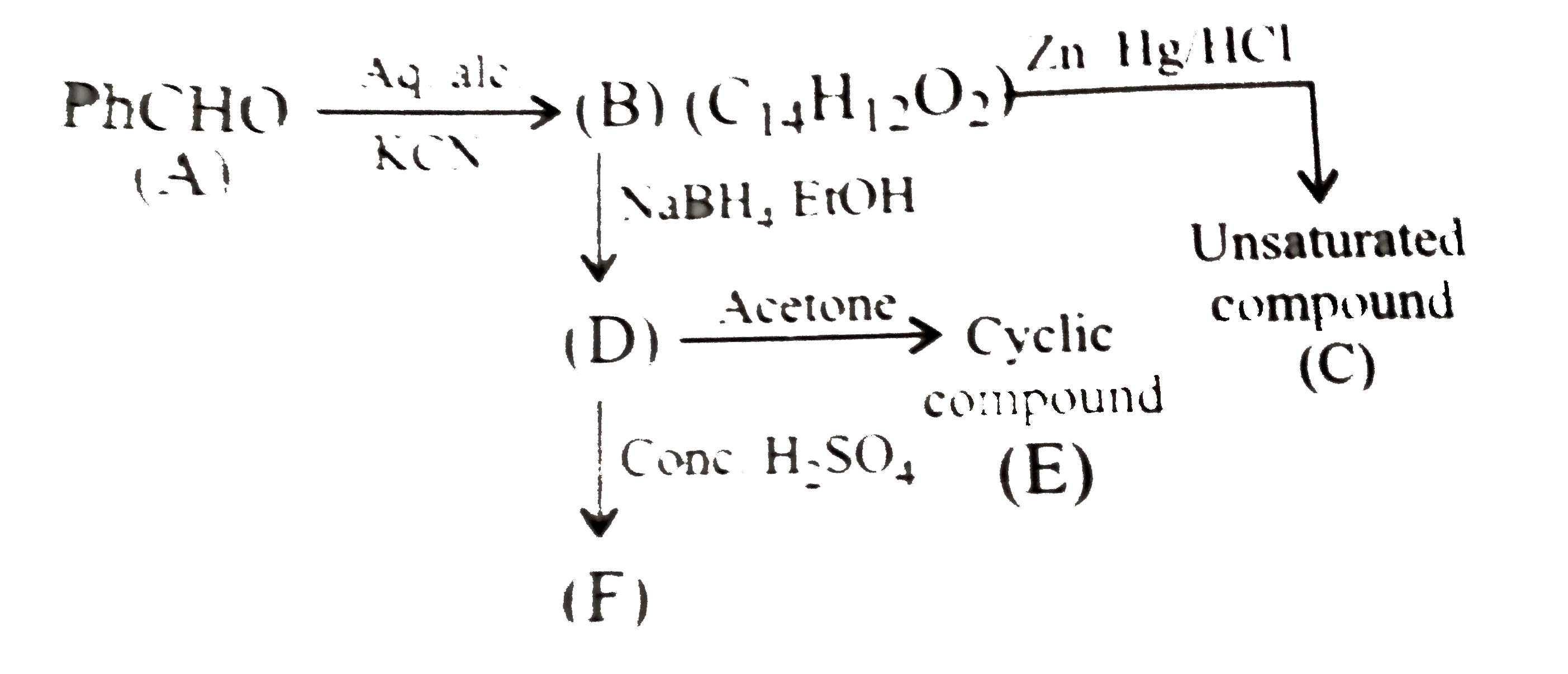

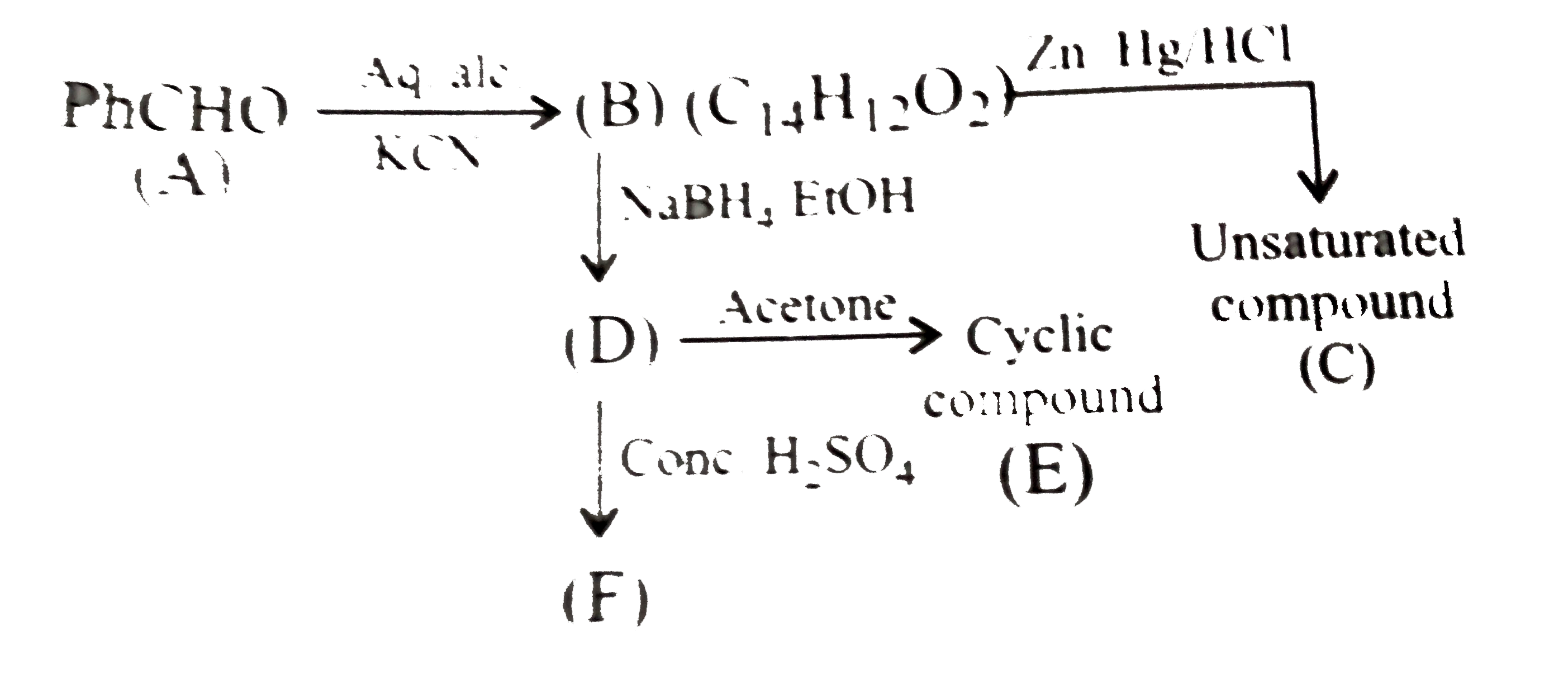
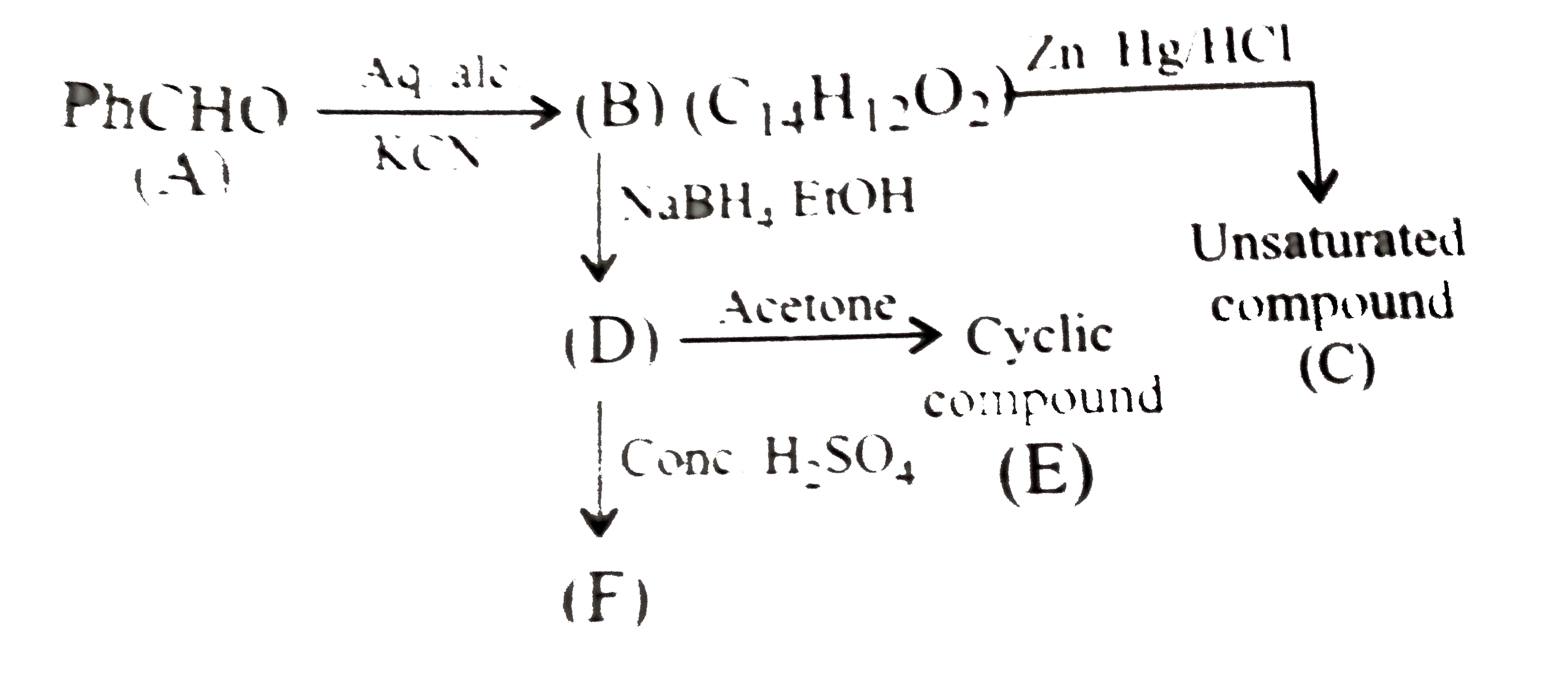
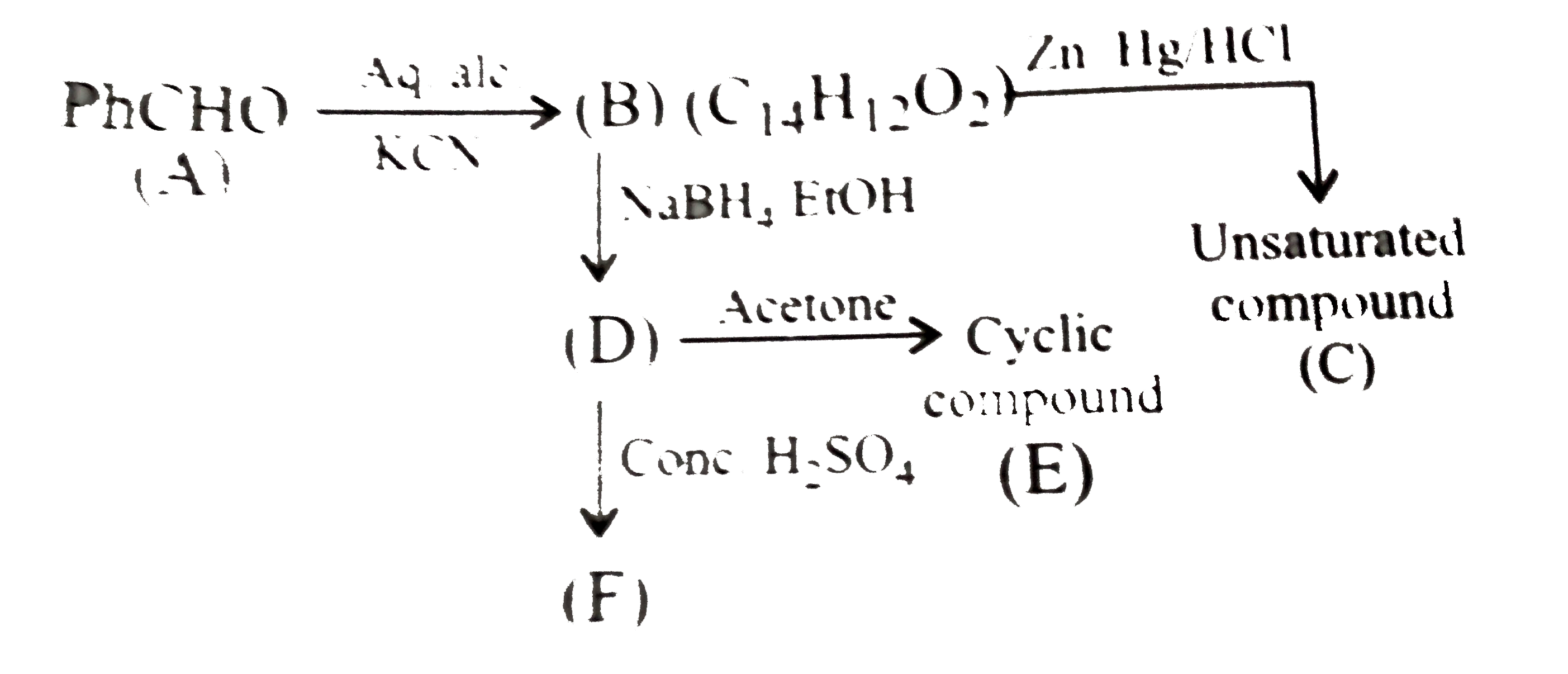
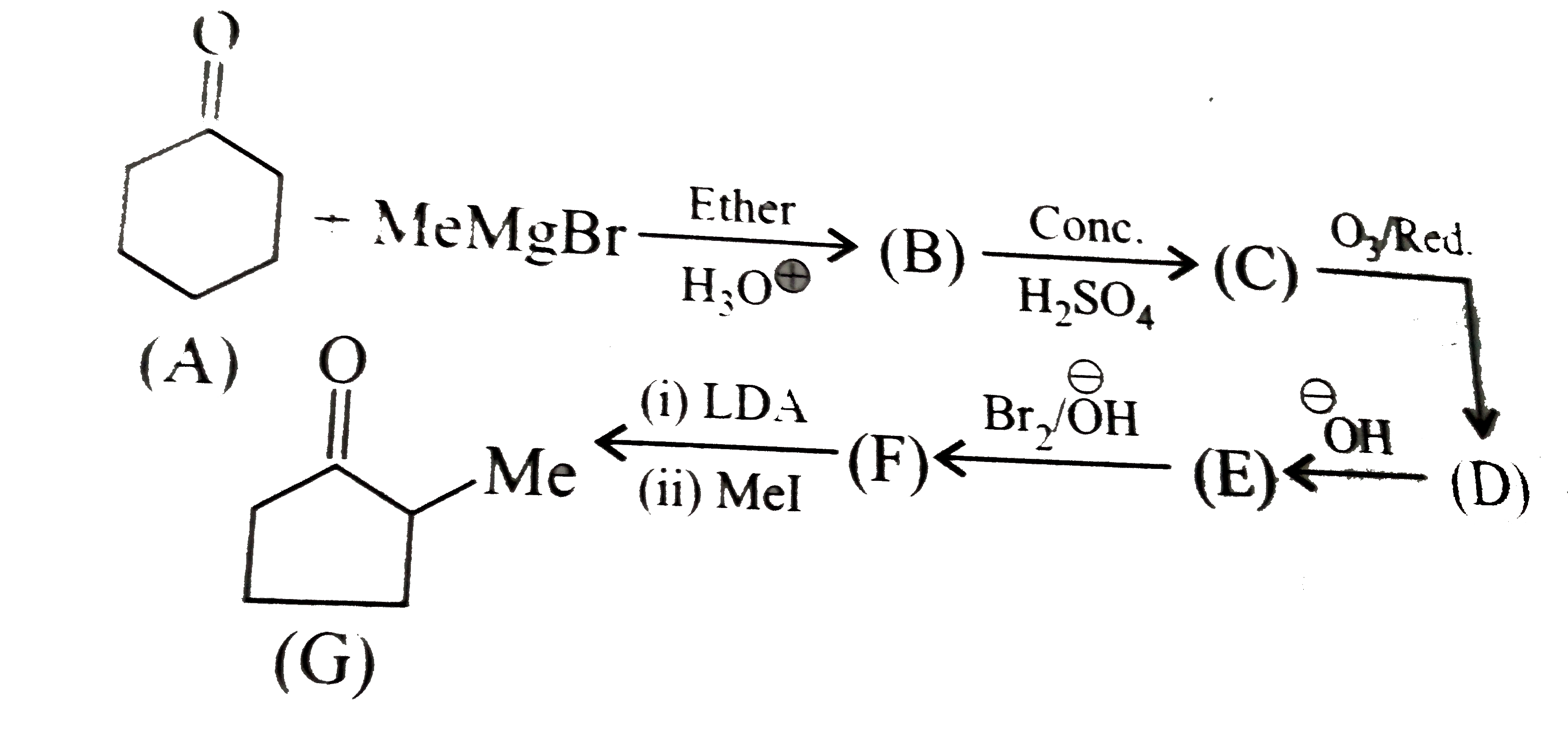
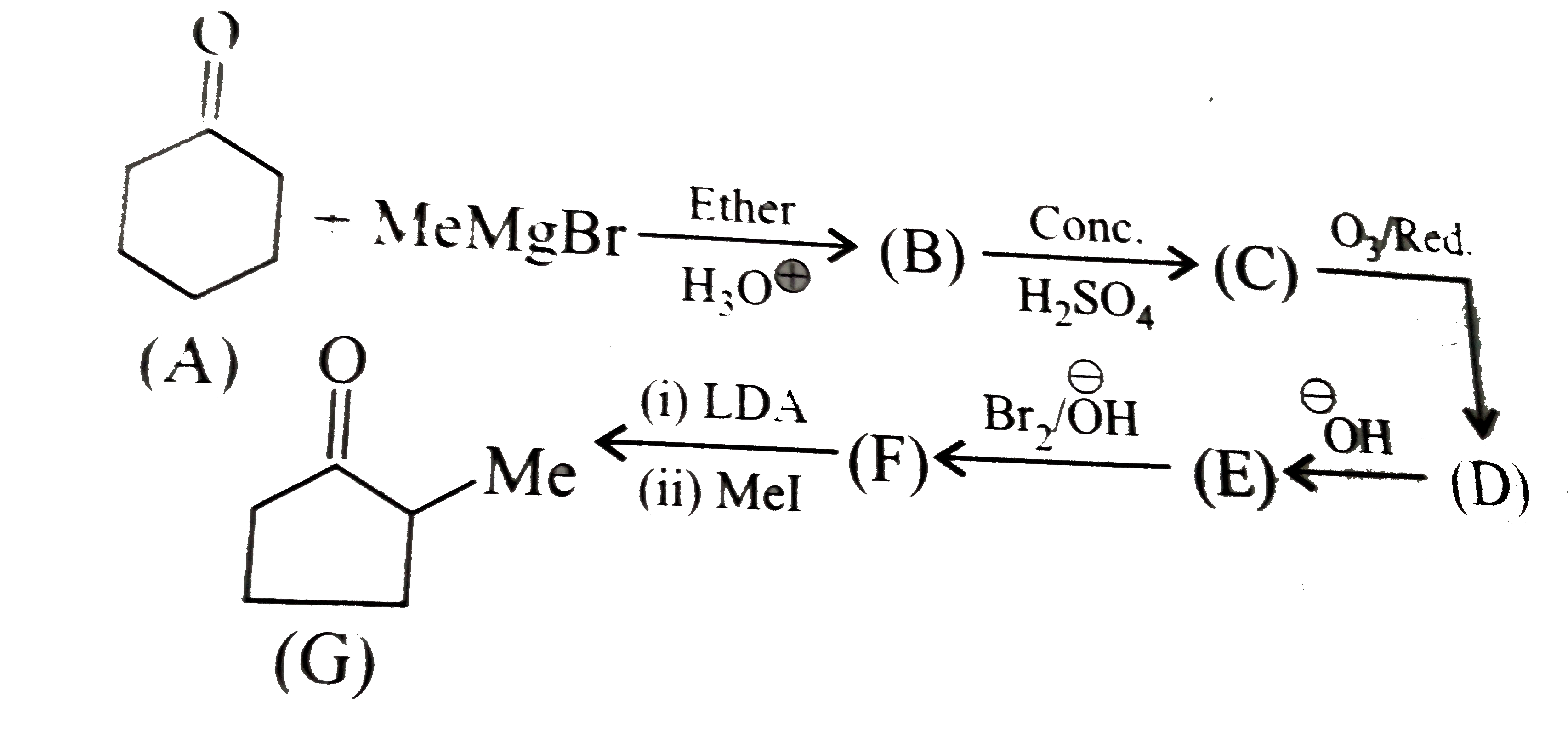
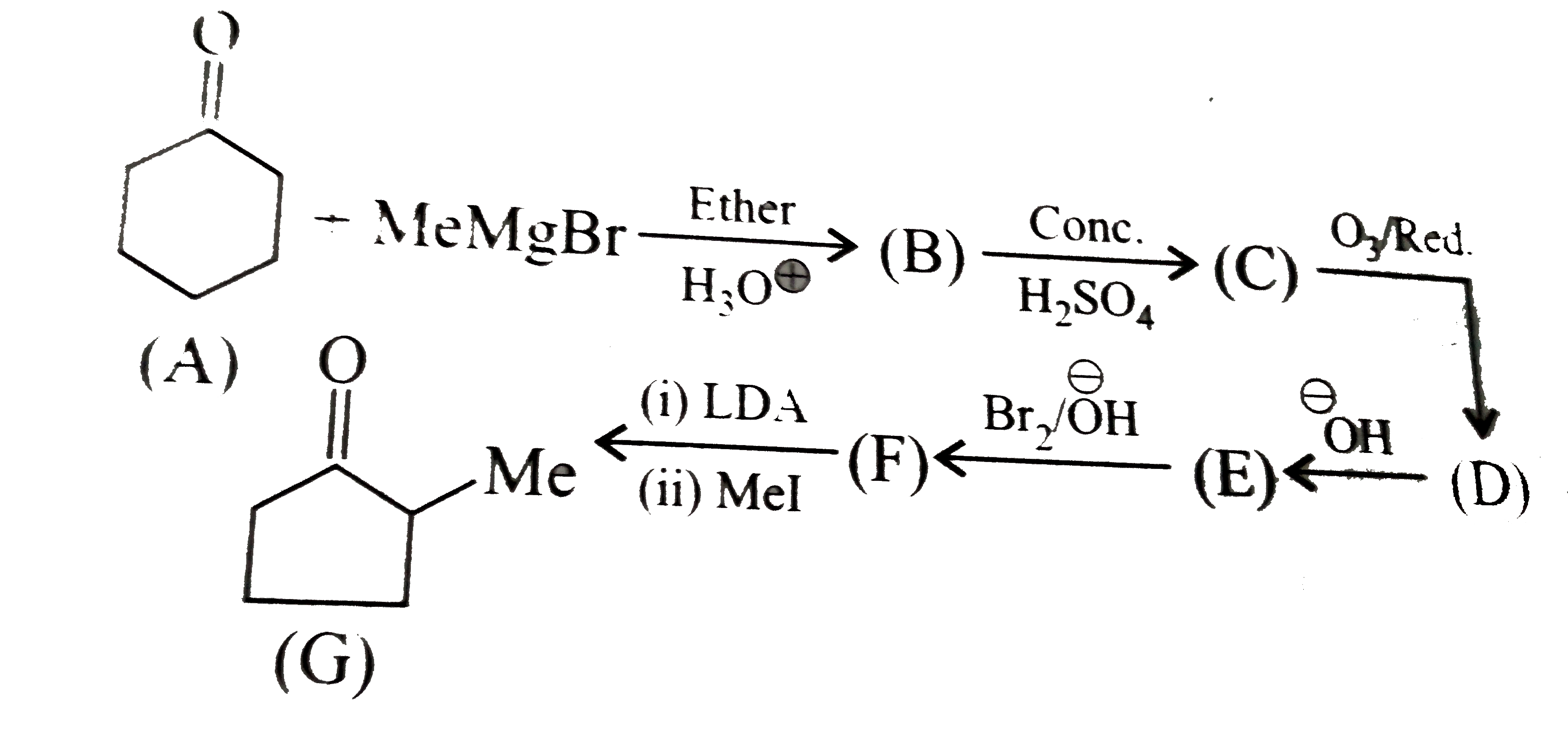
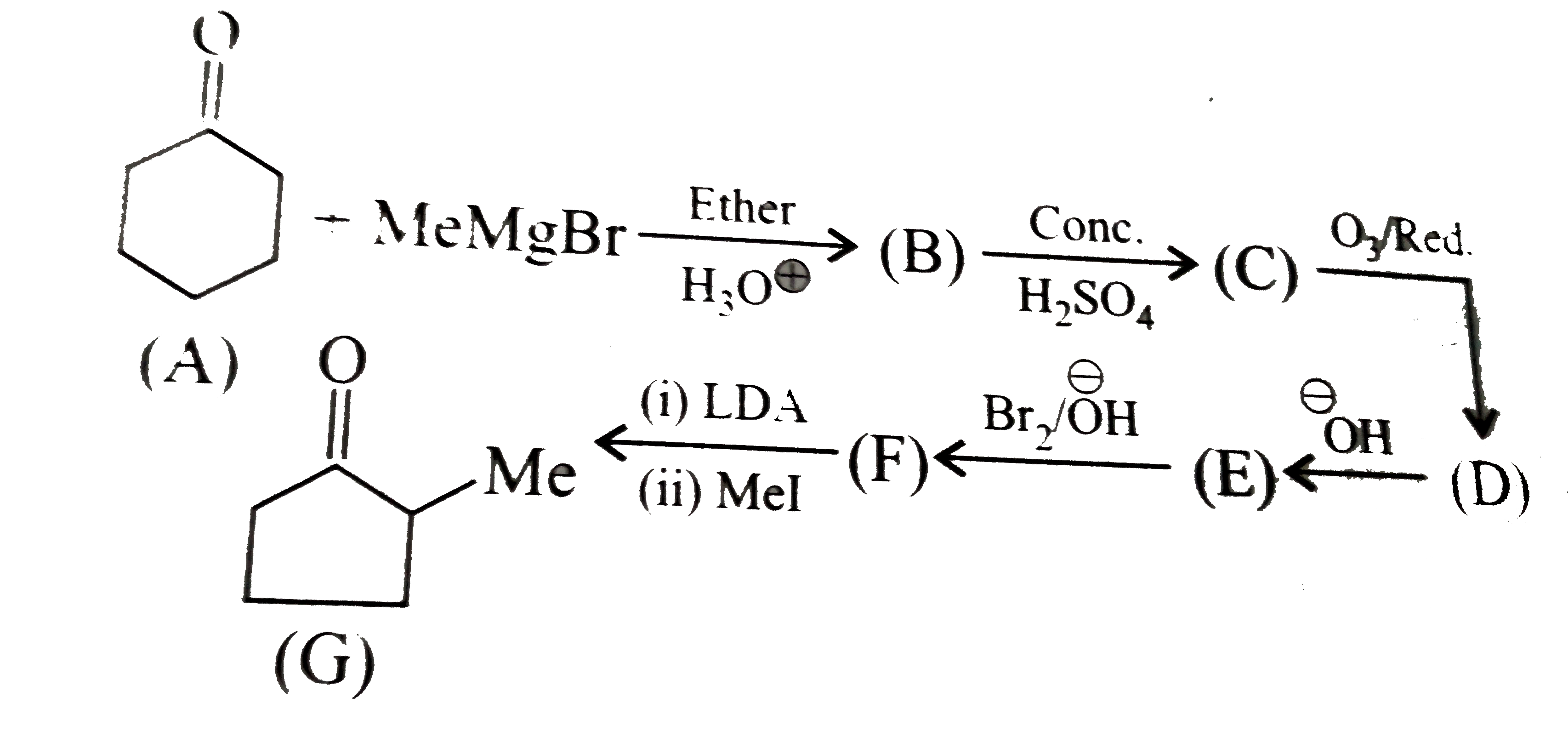
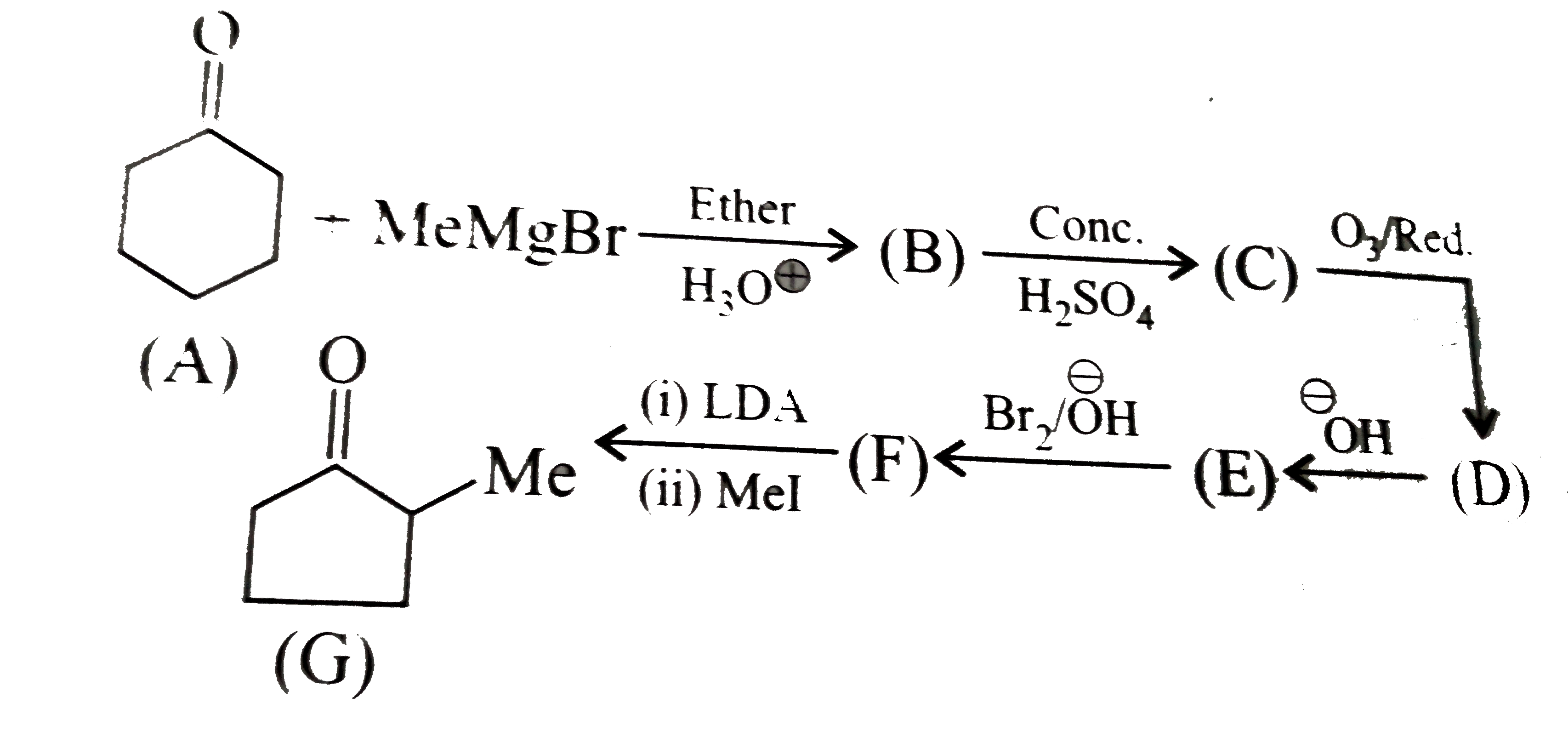

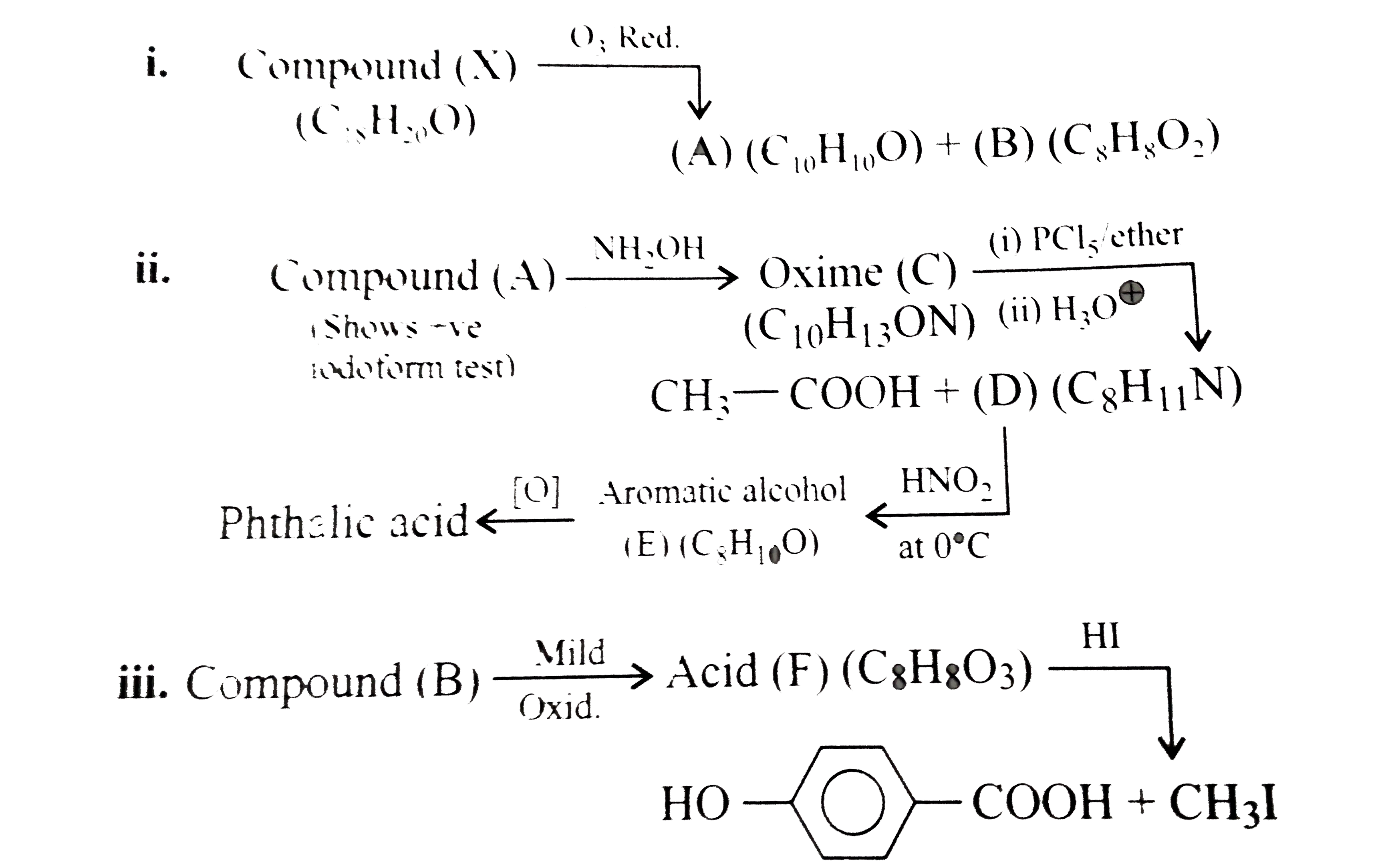


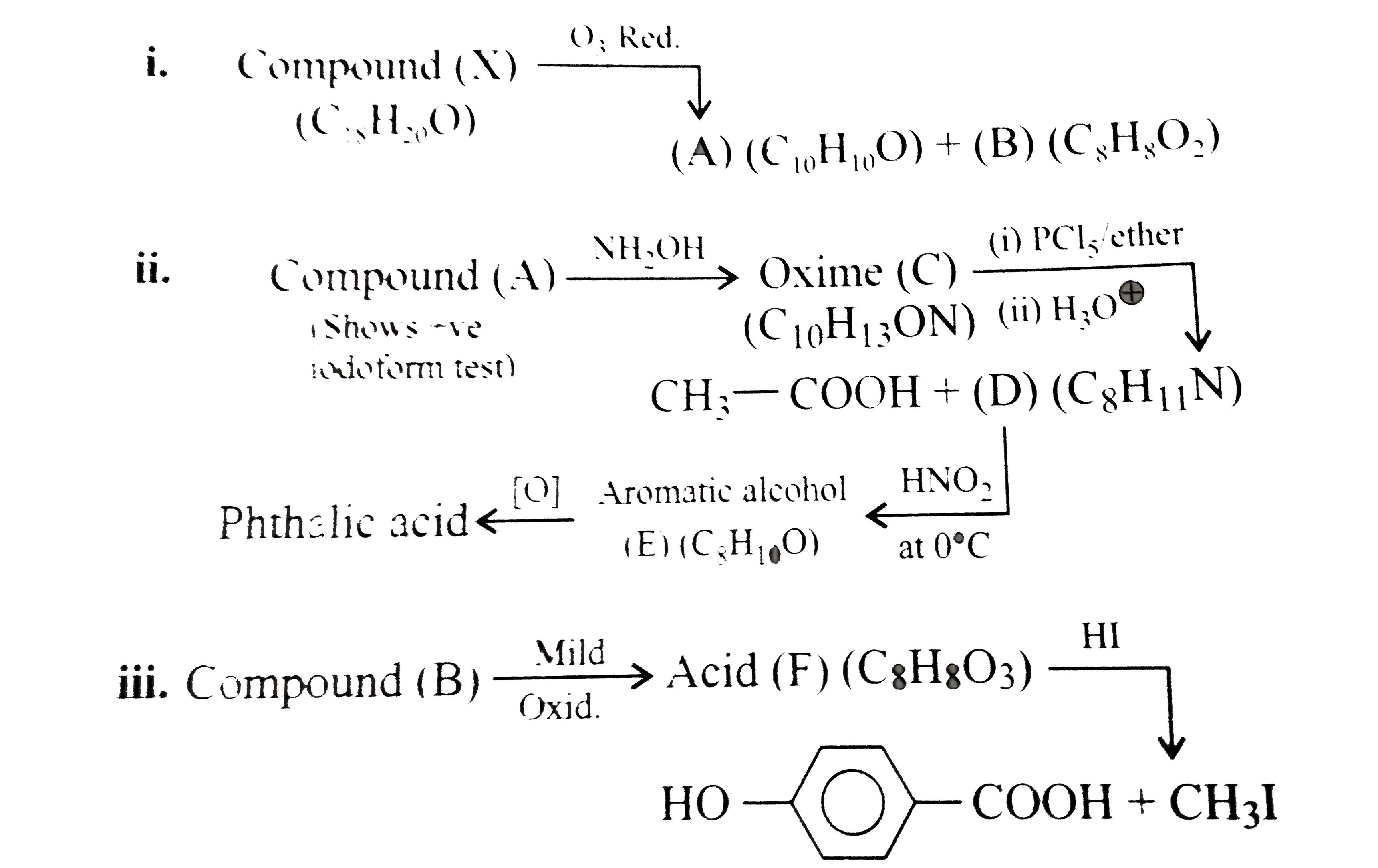


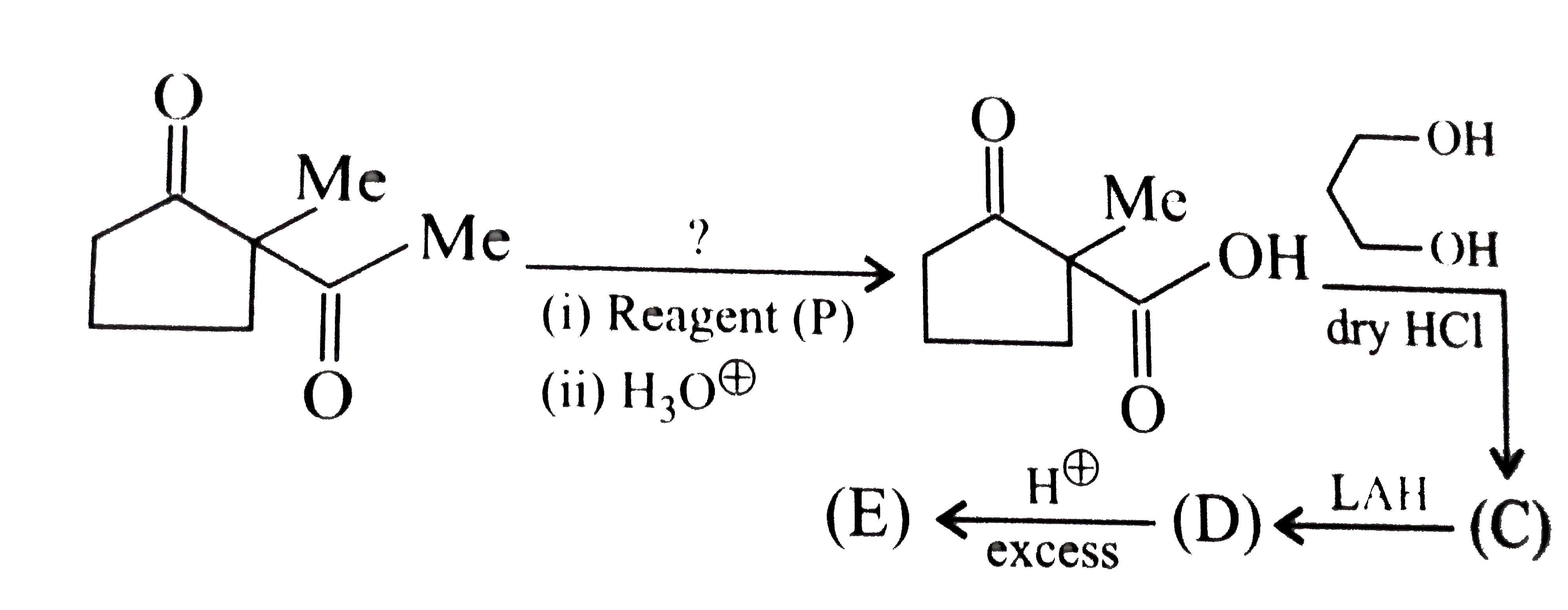
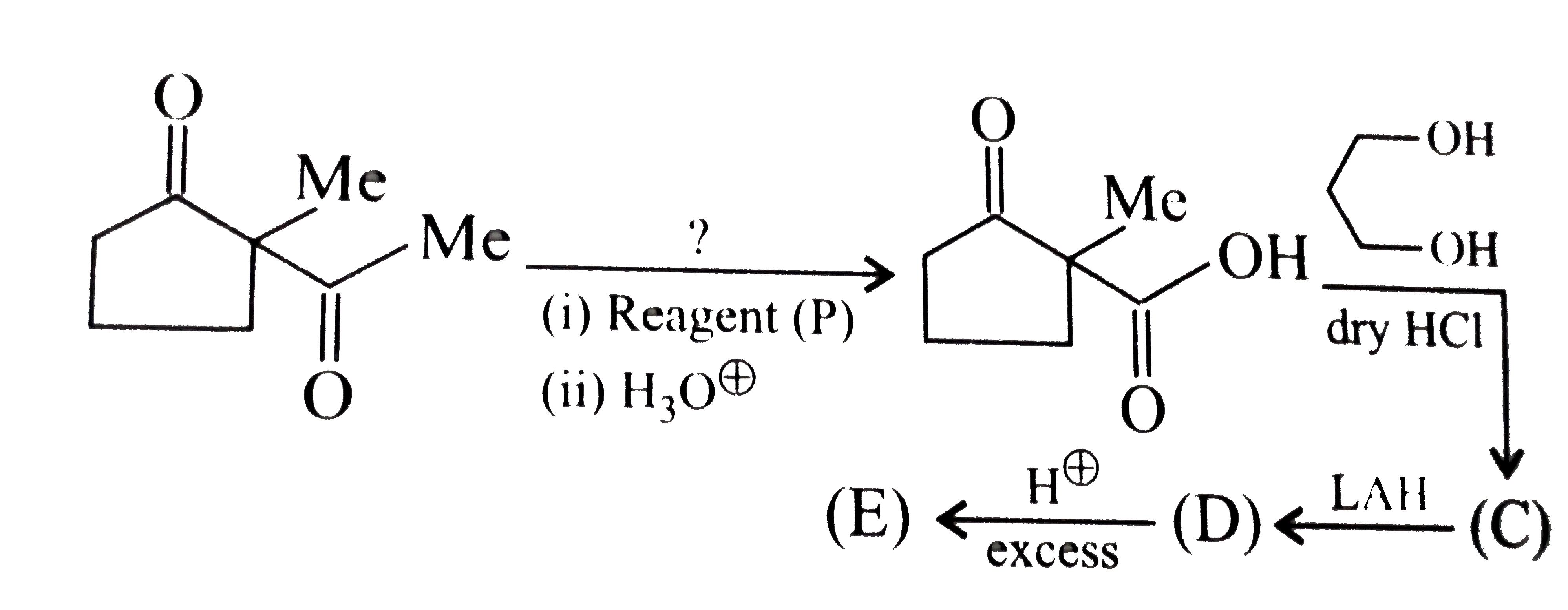
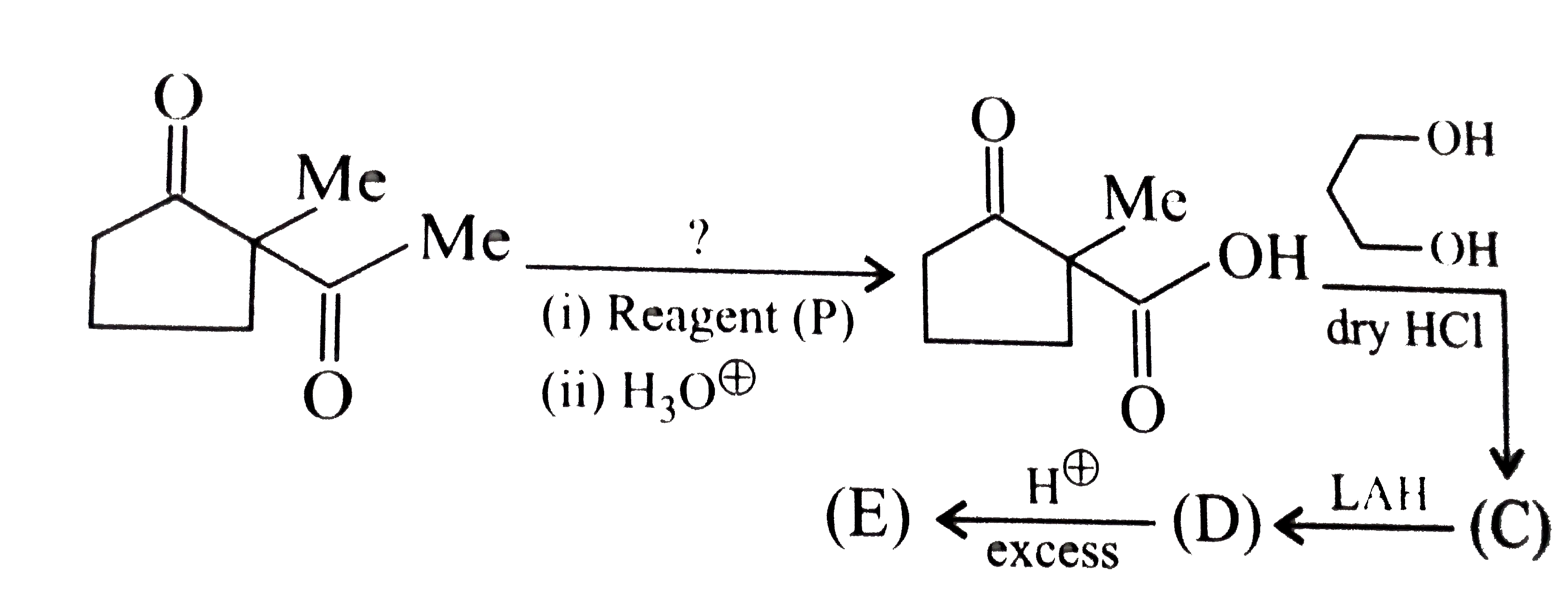
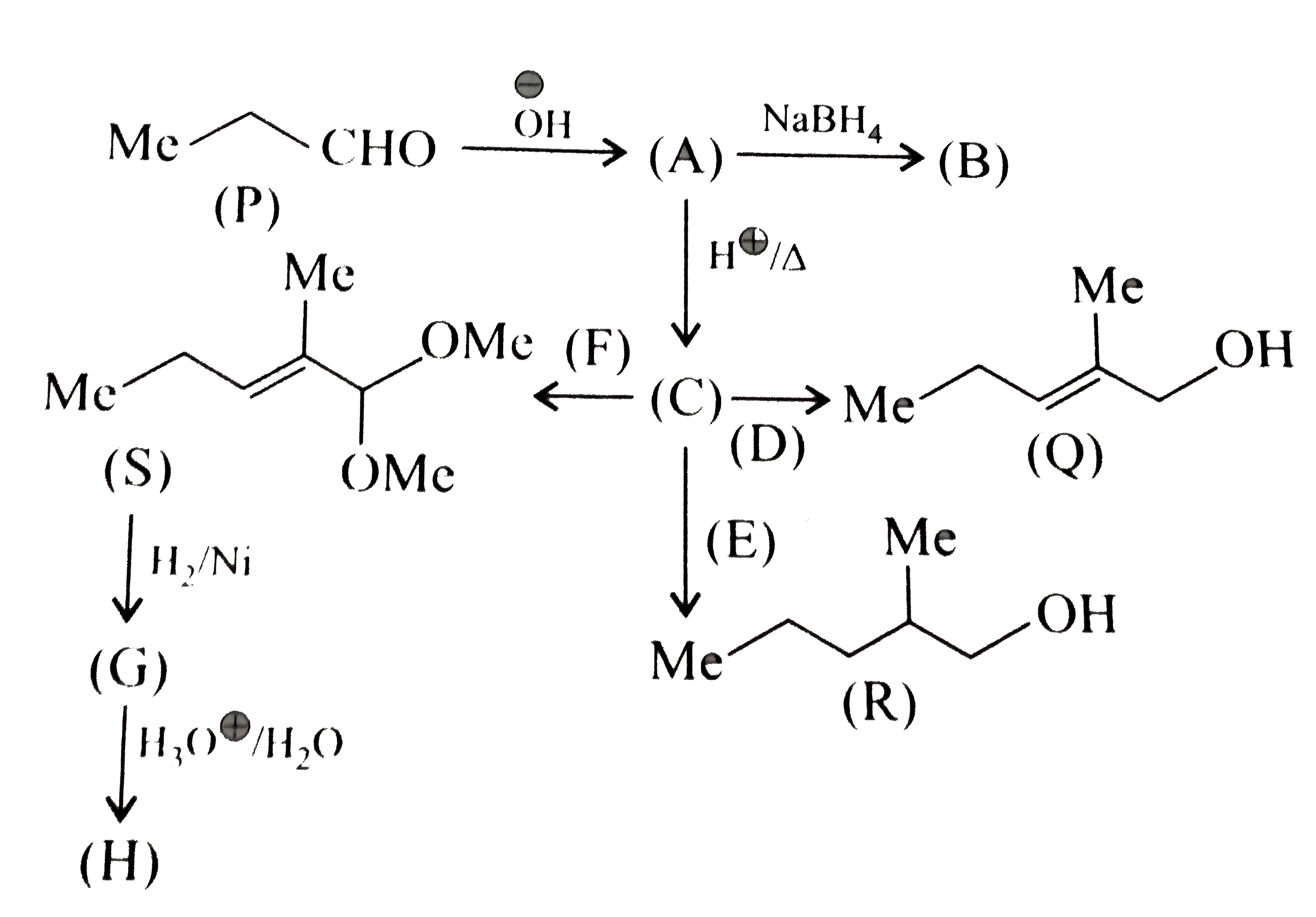
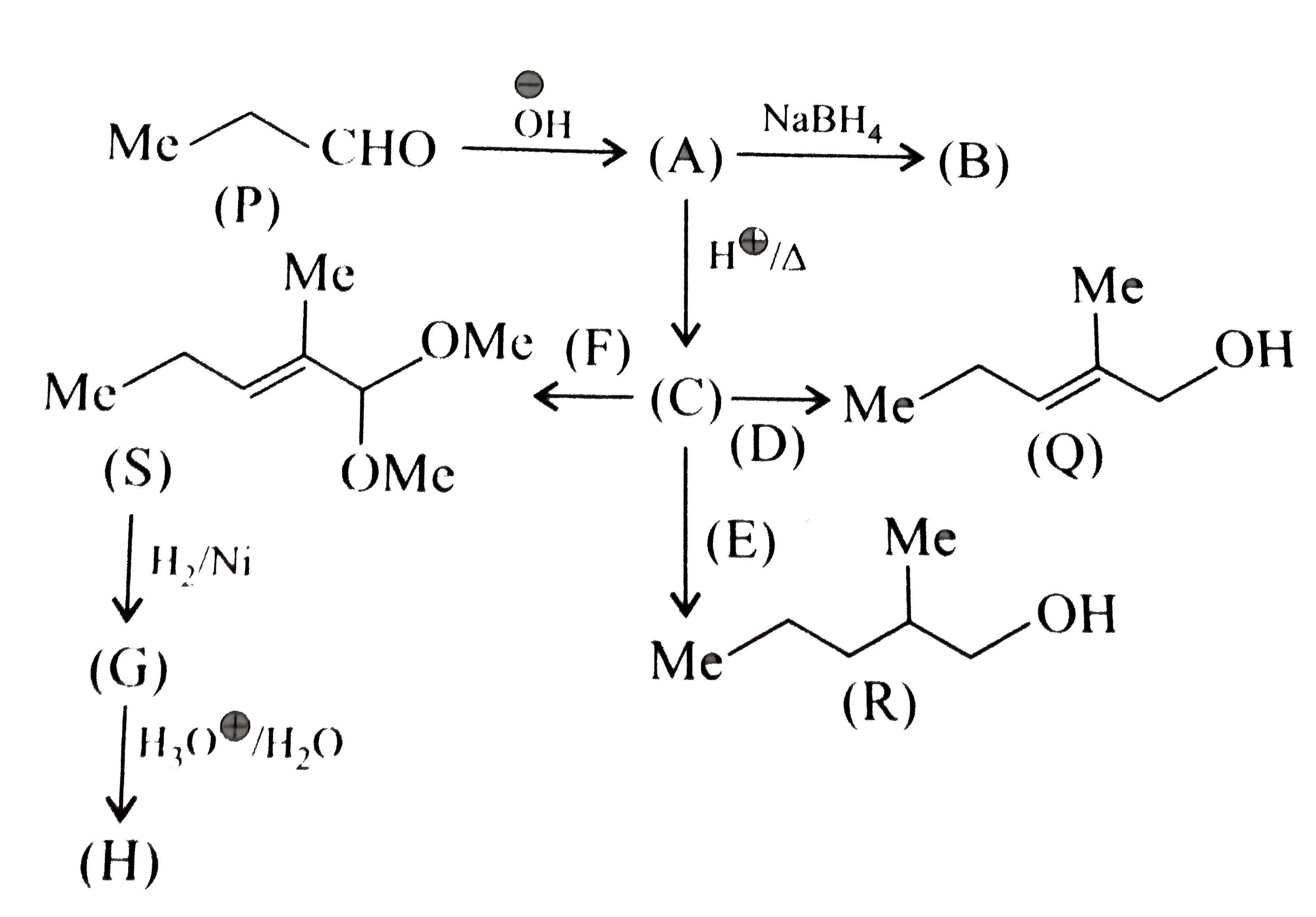
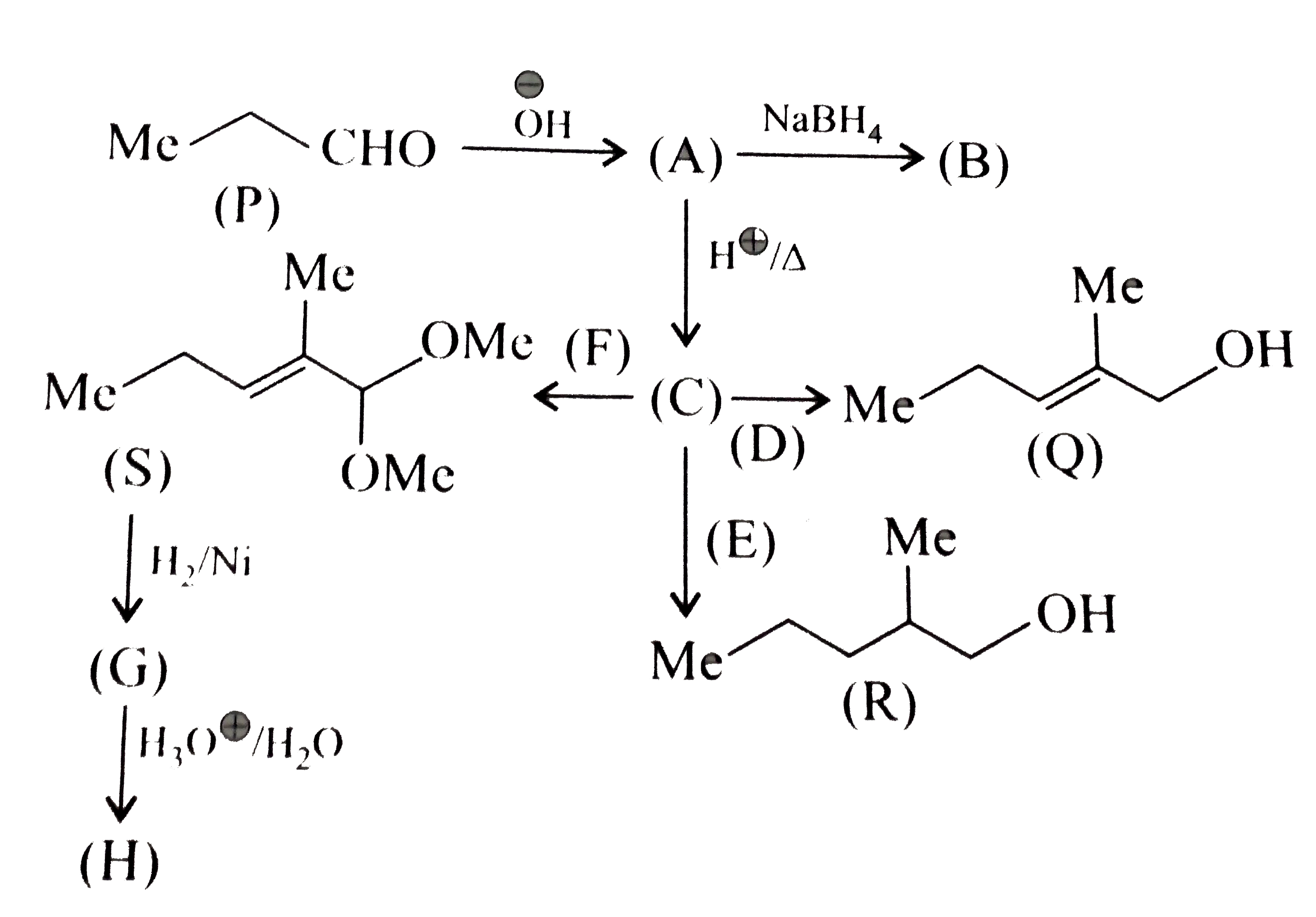
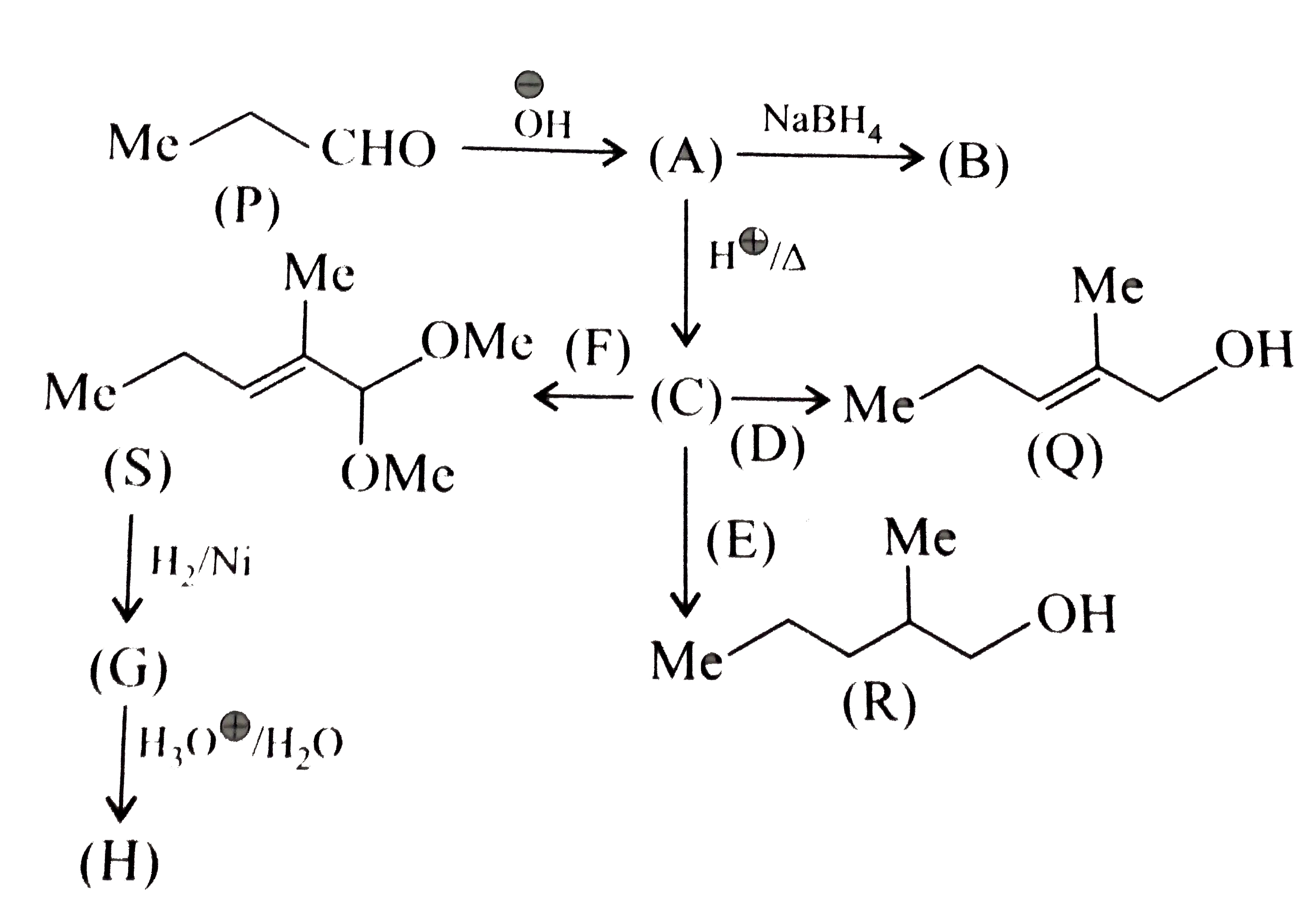







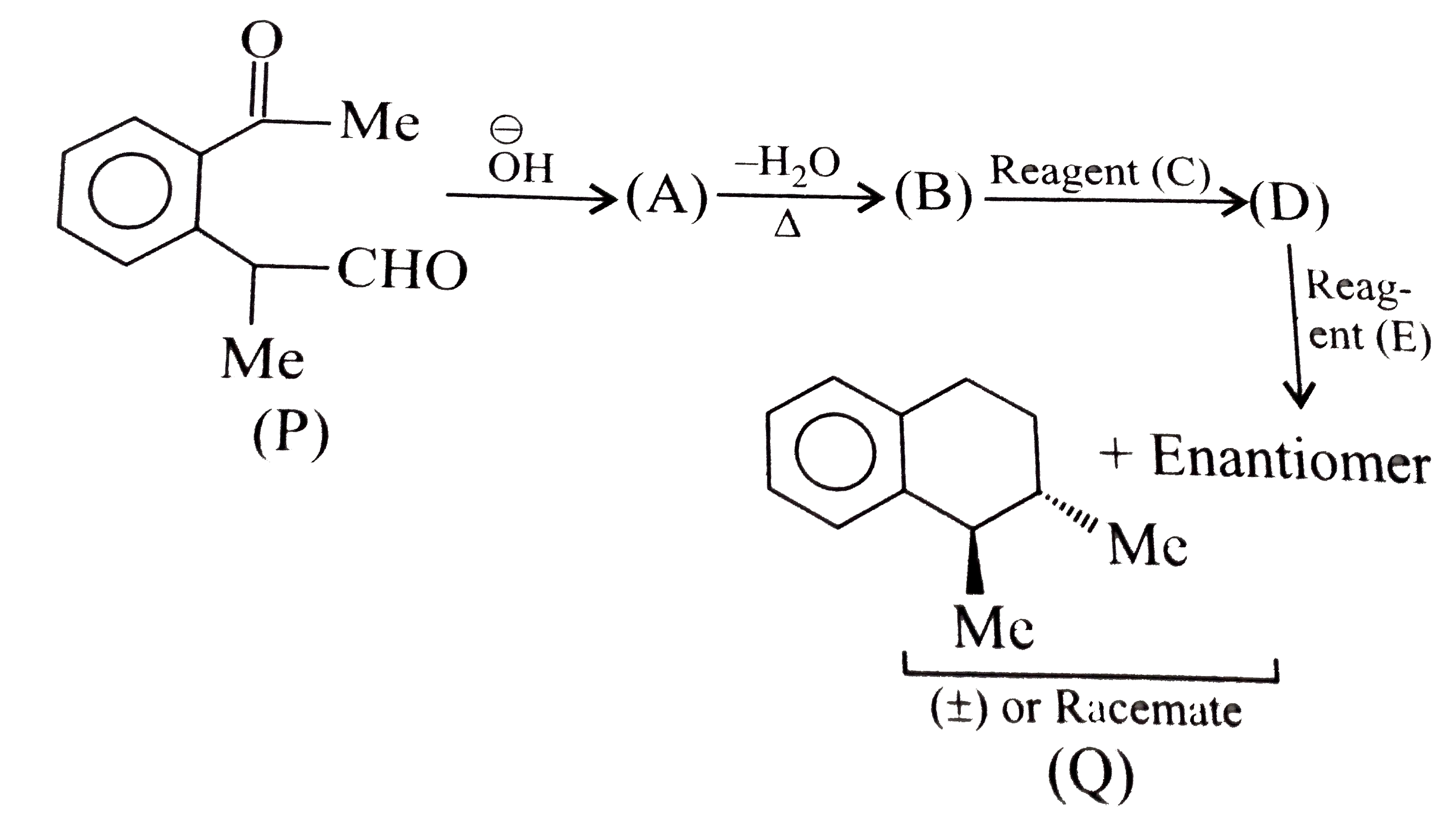






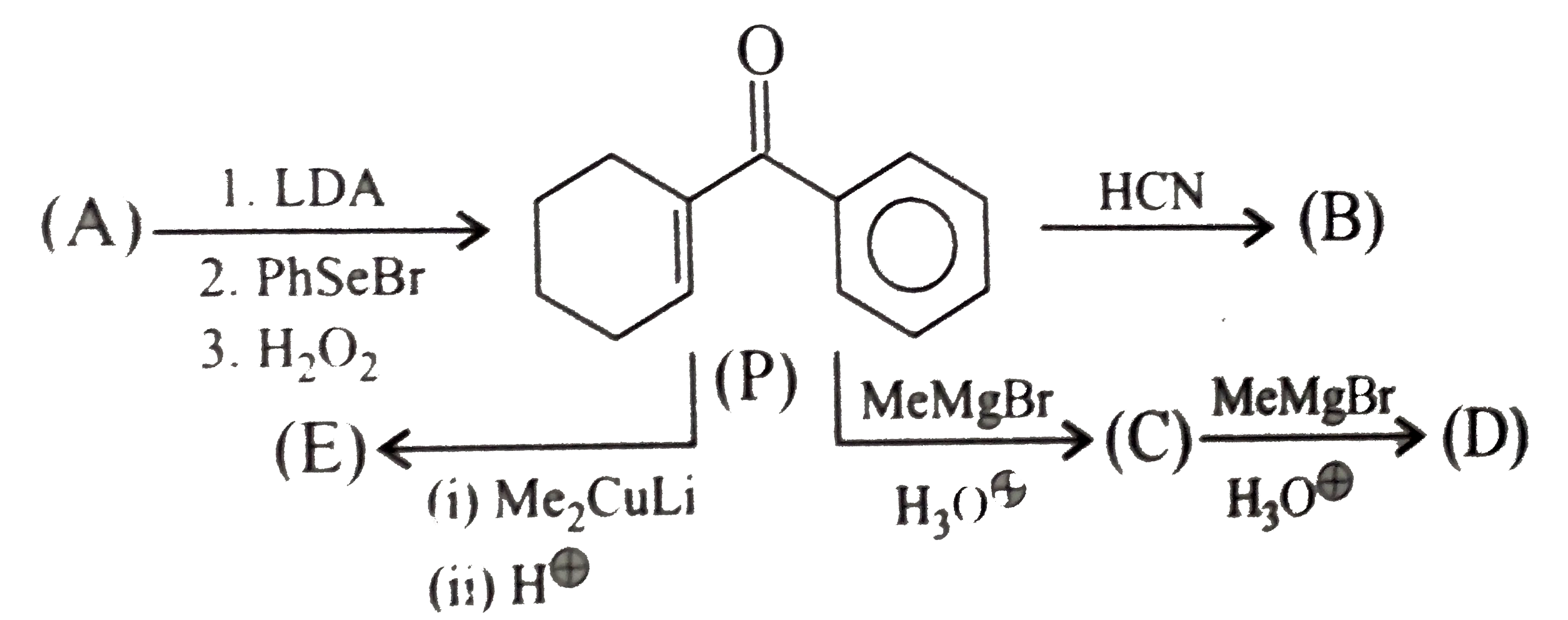

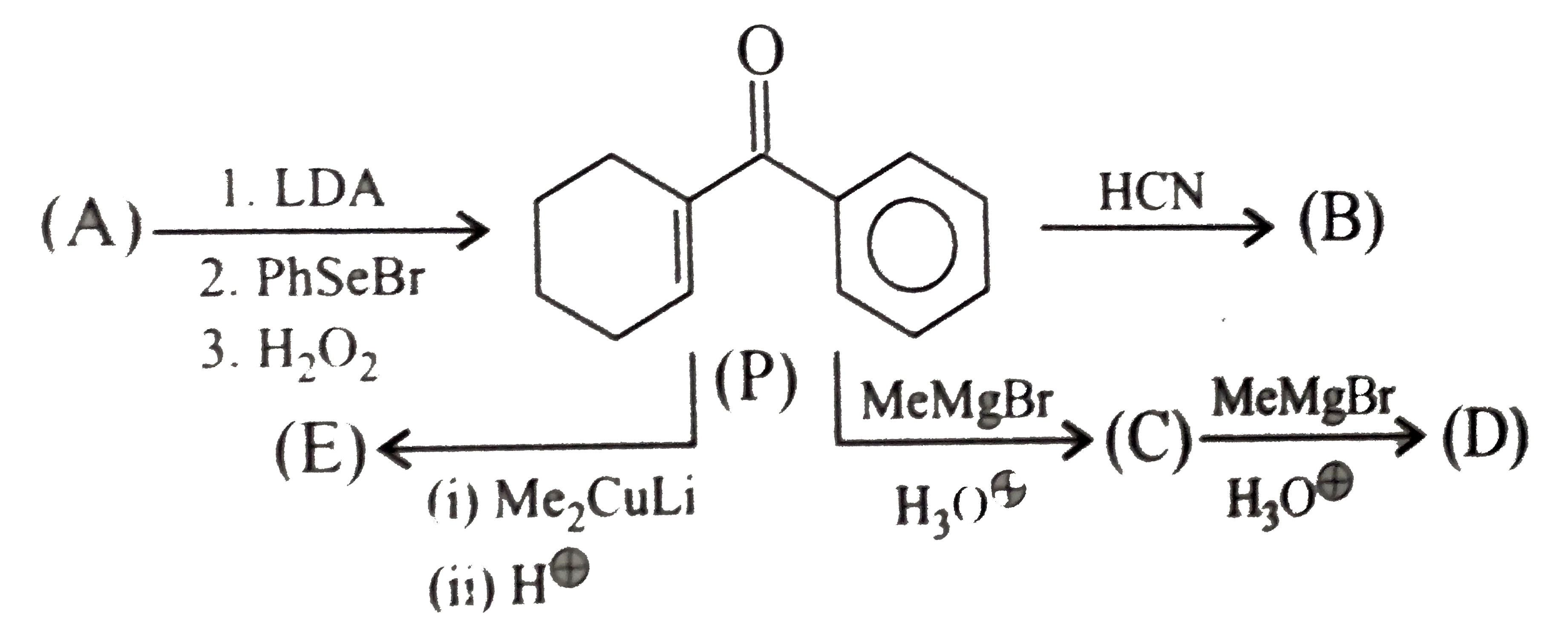
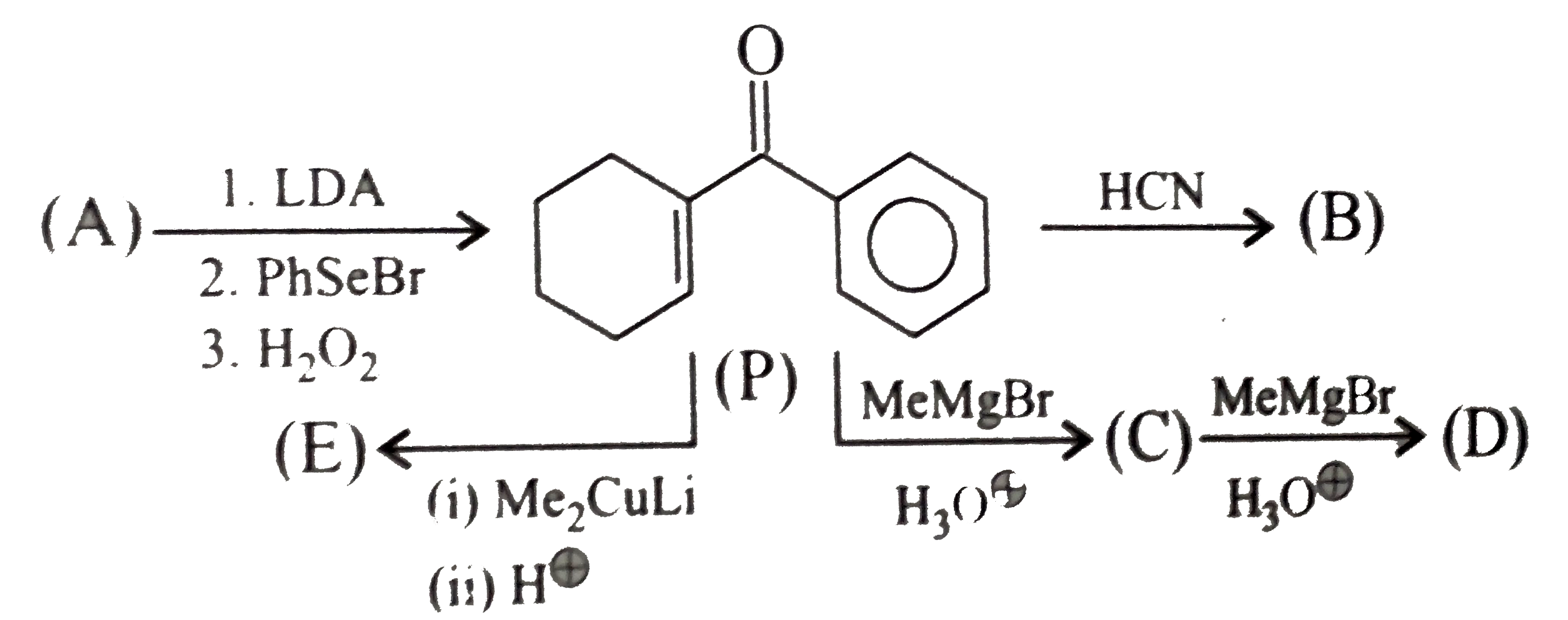
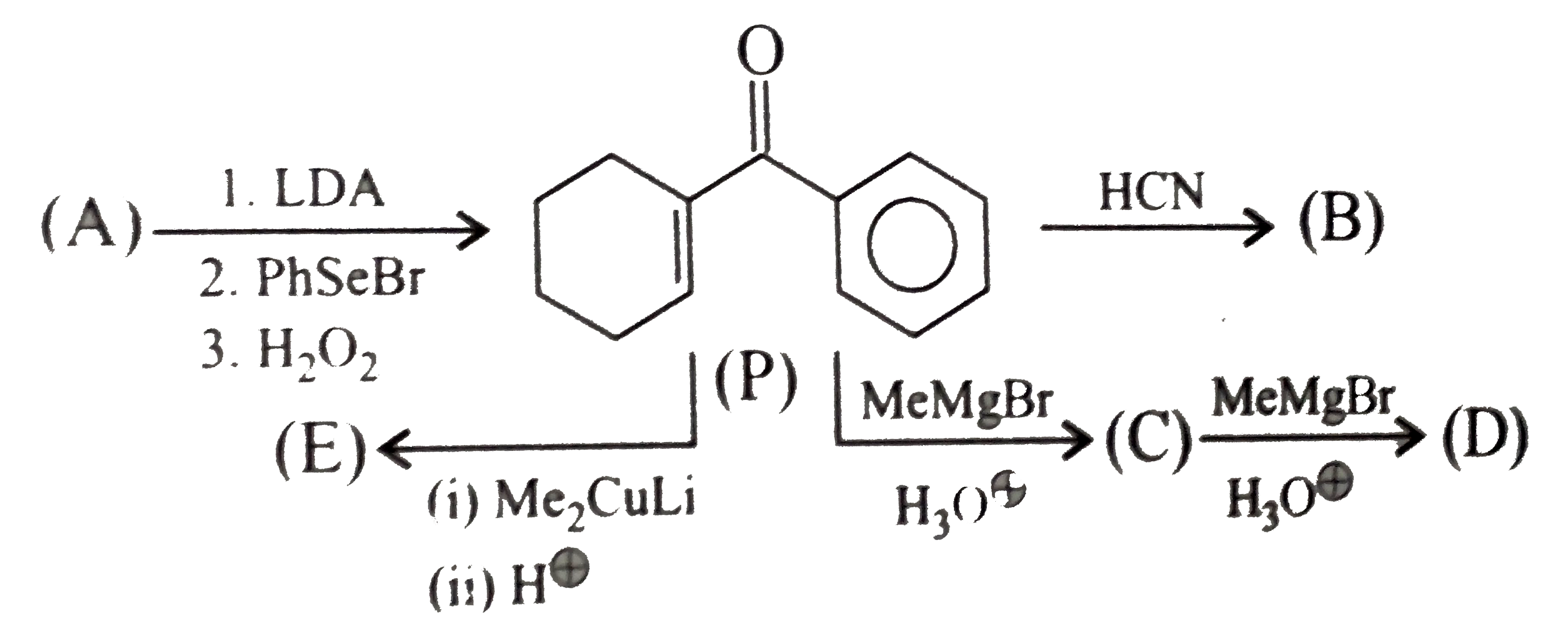
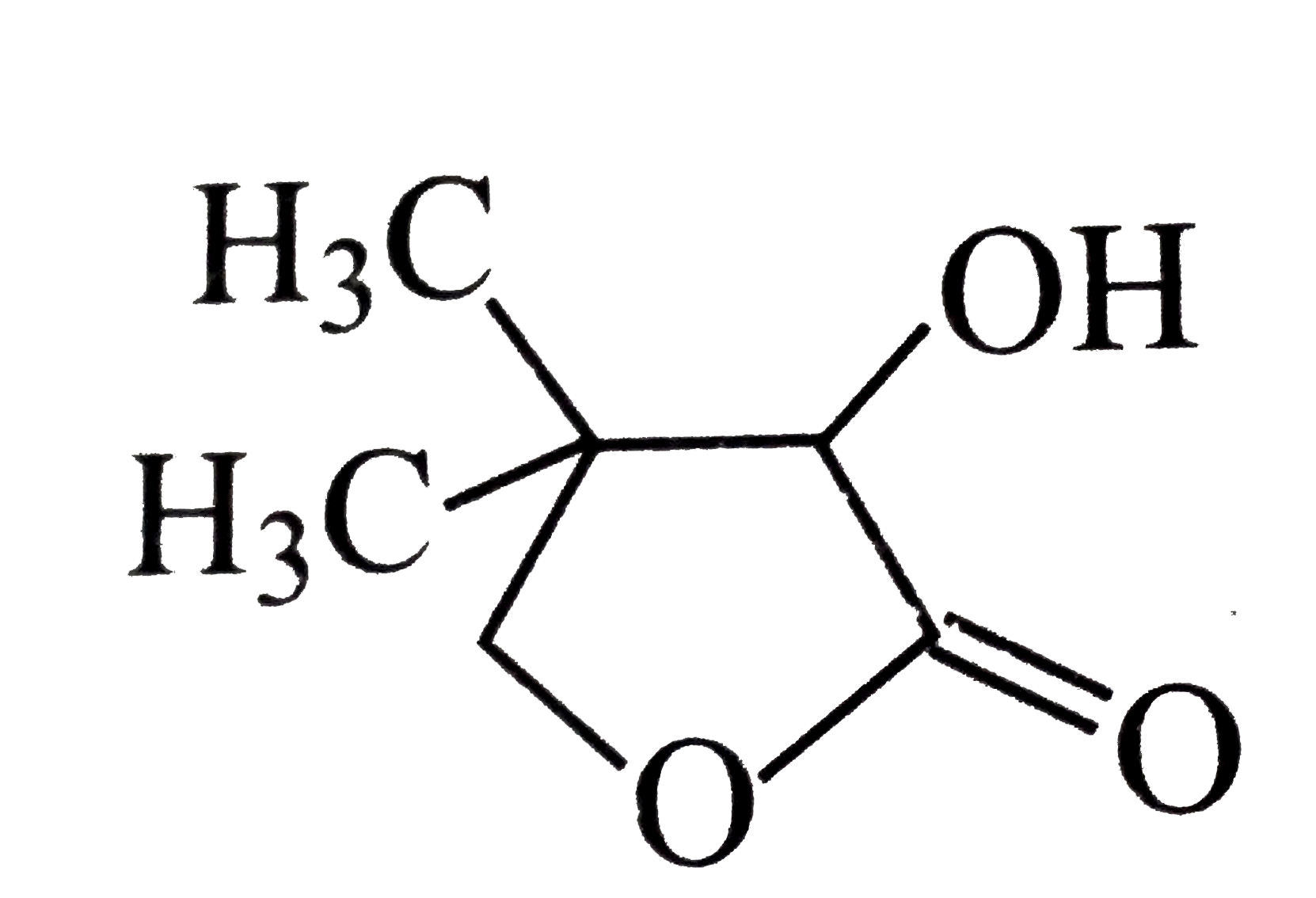


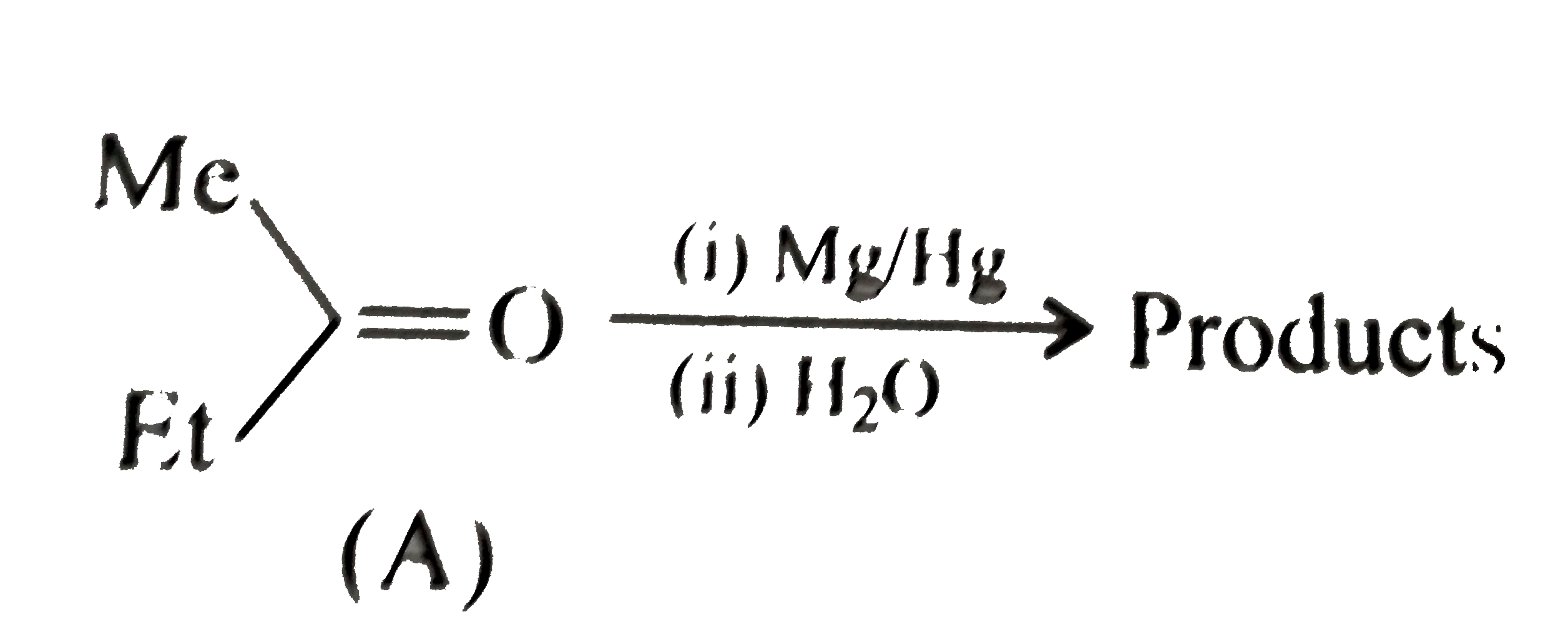
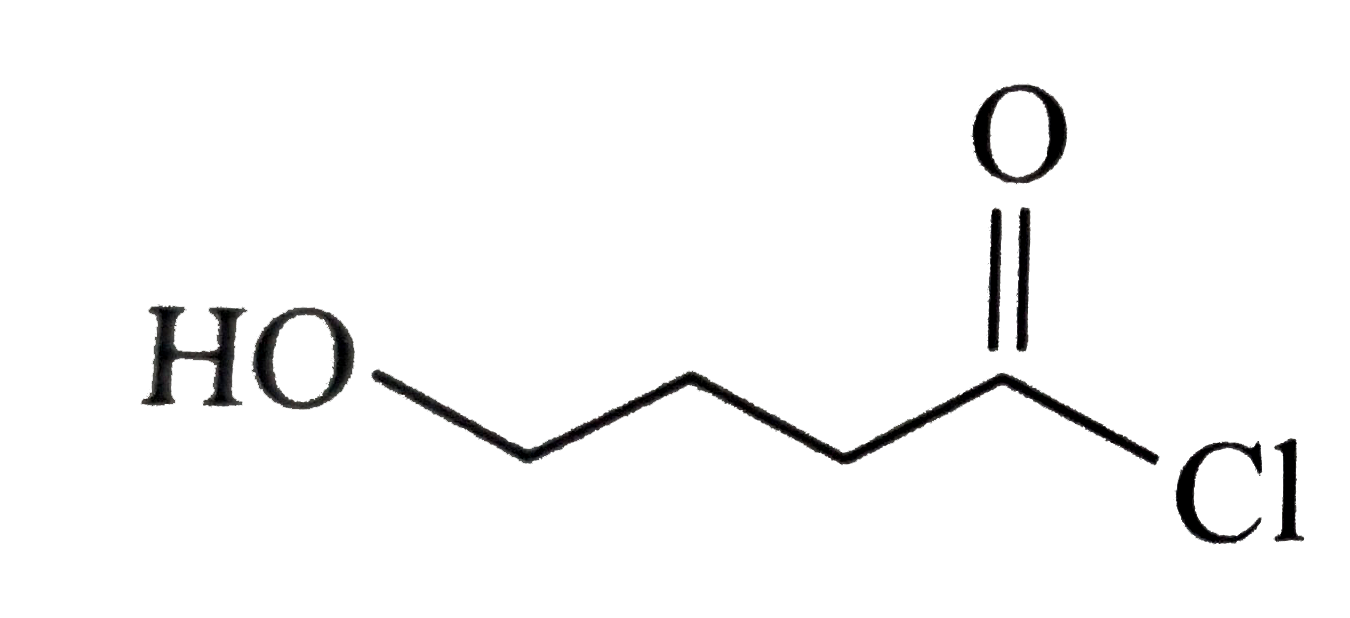

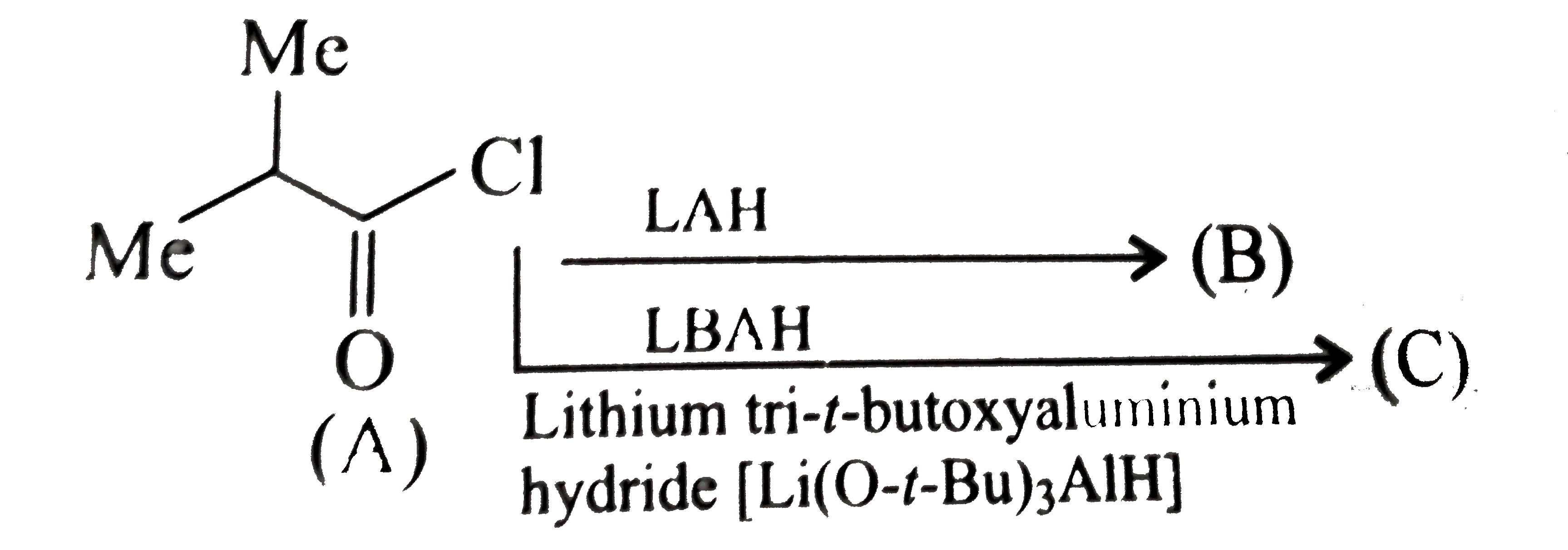
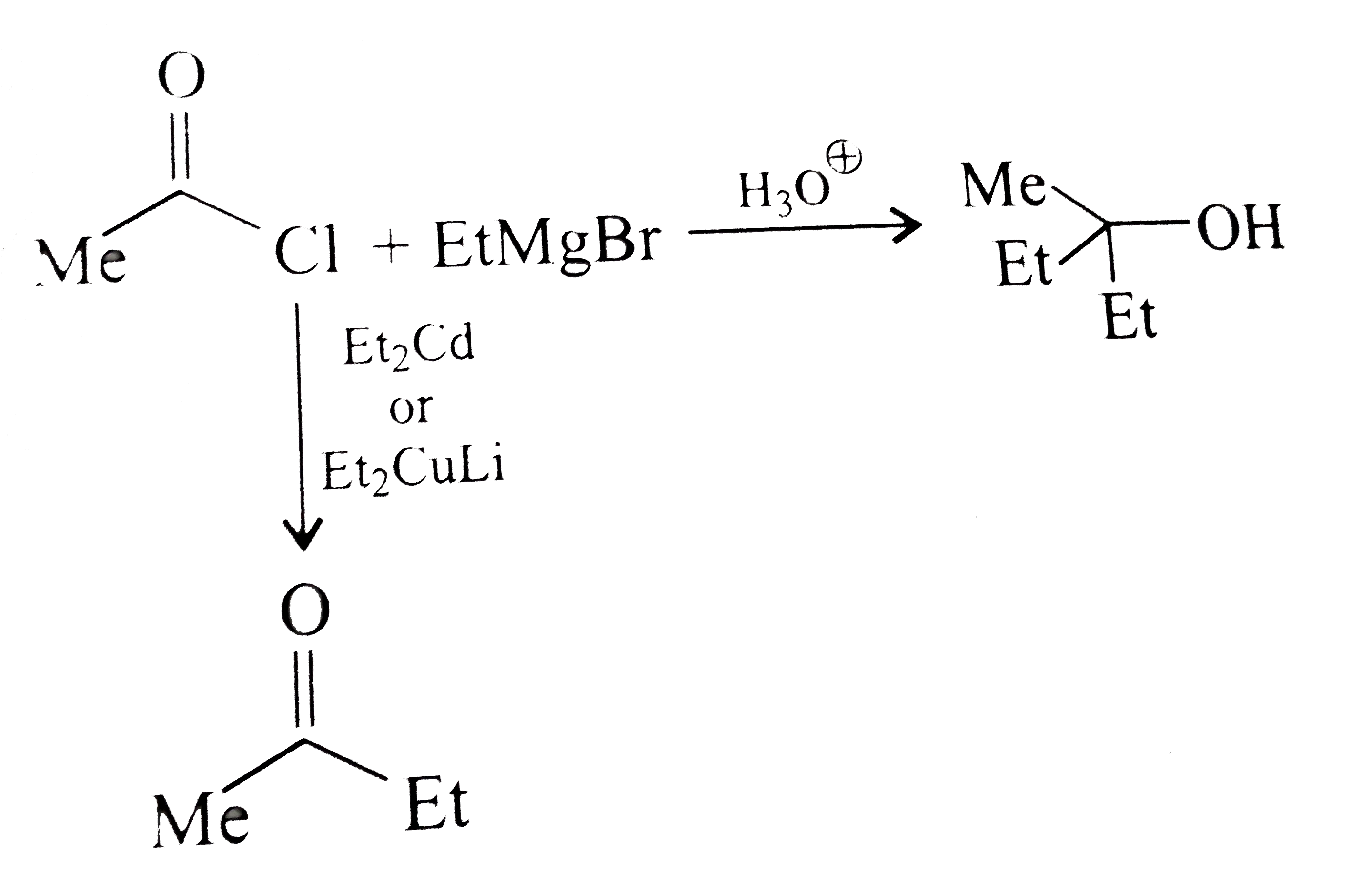

 (A)
(A) 





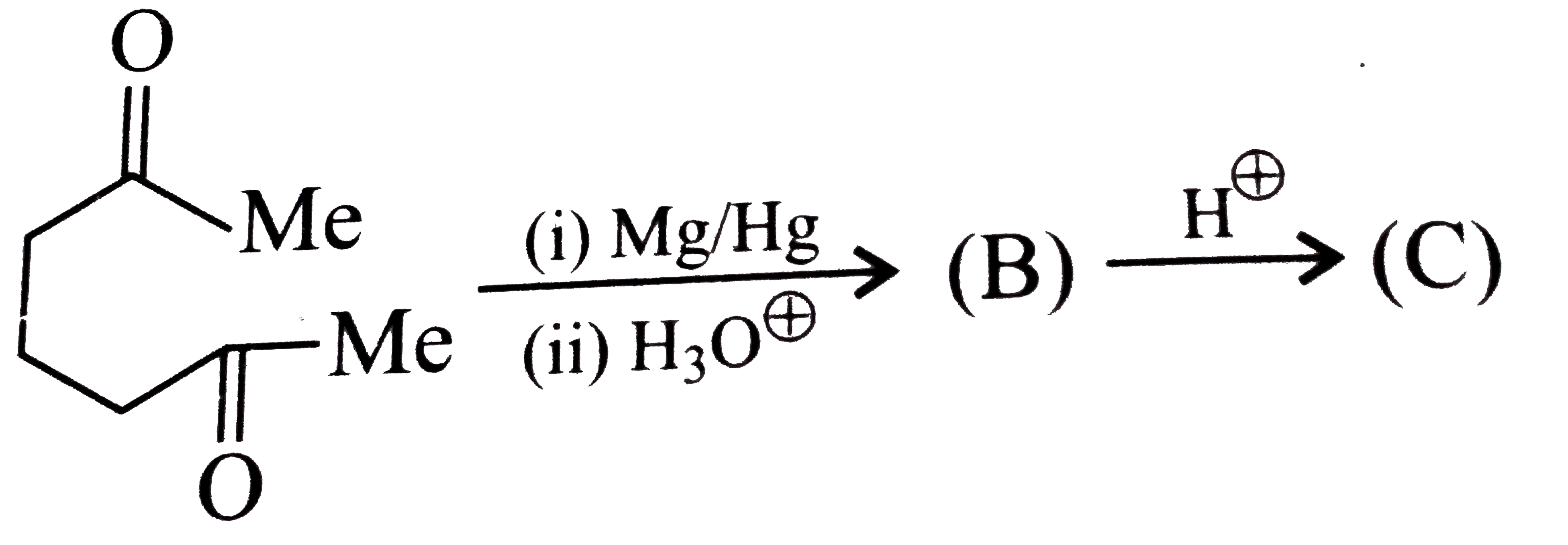




 , III.
, III. 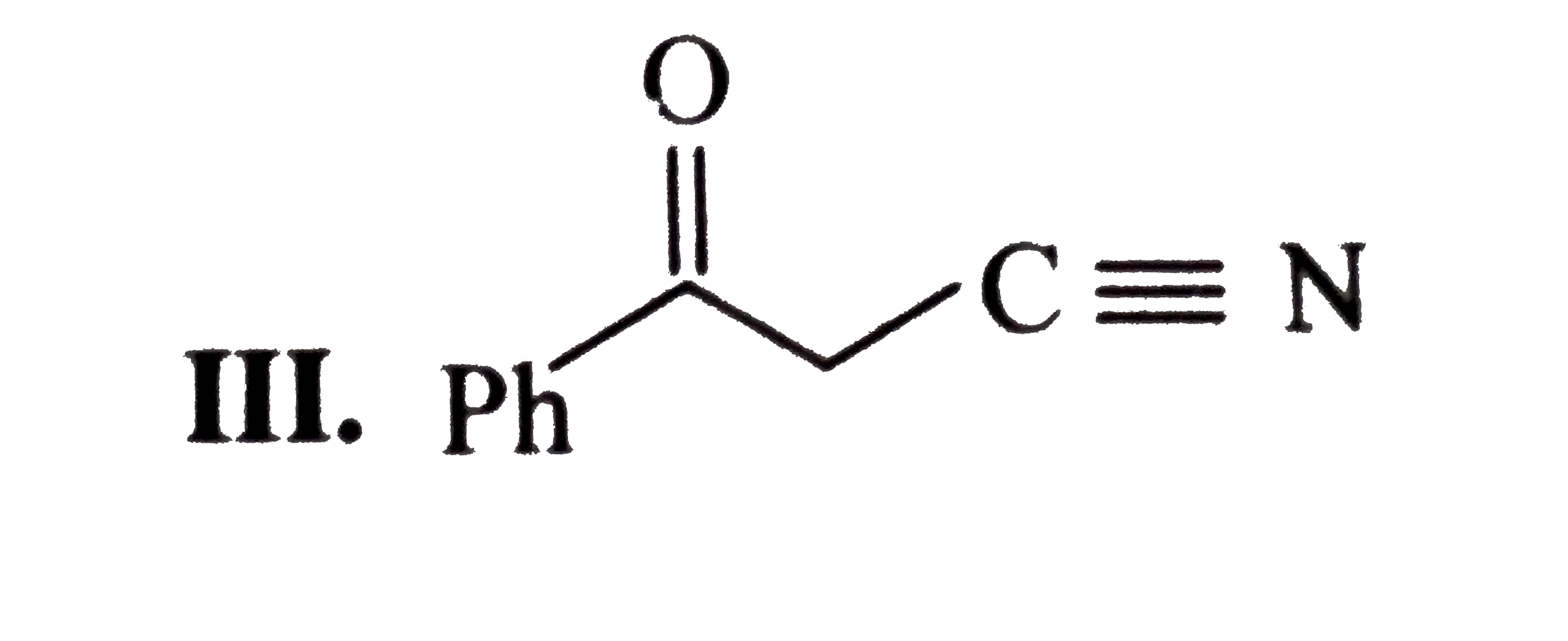
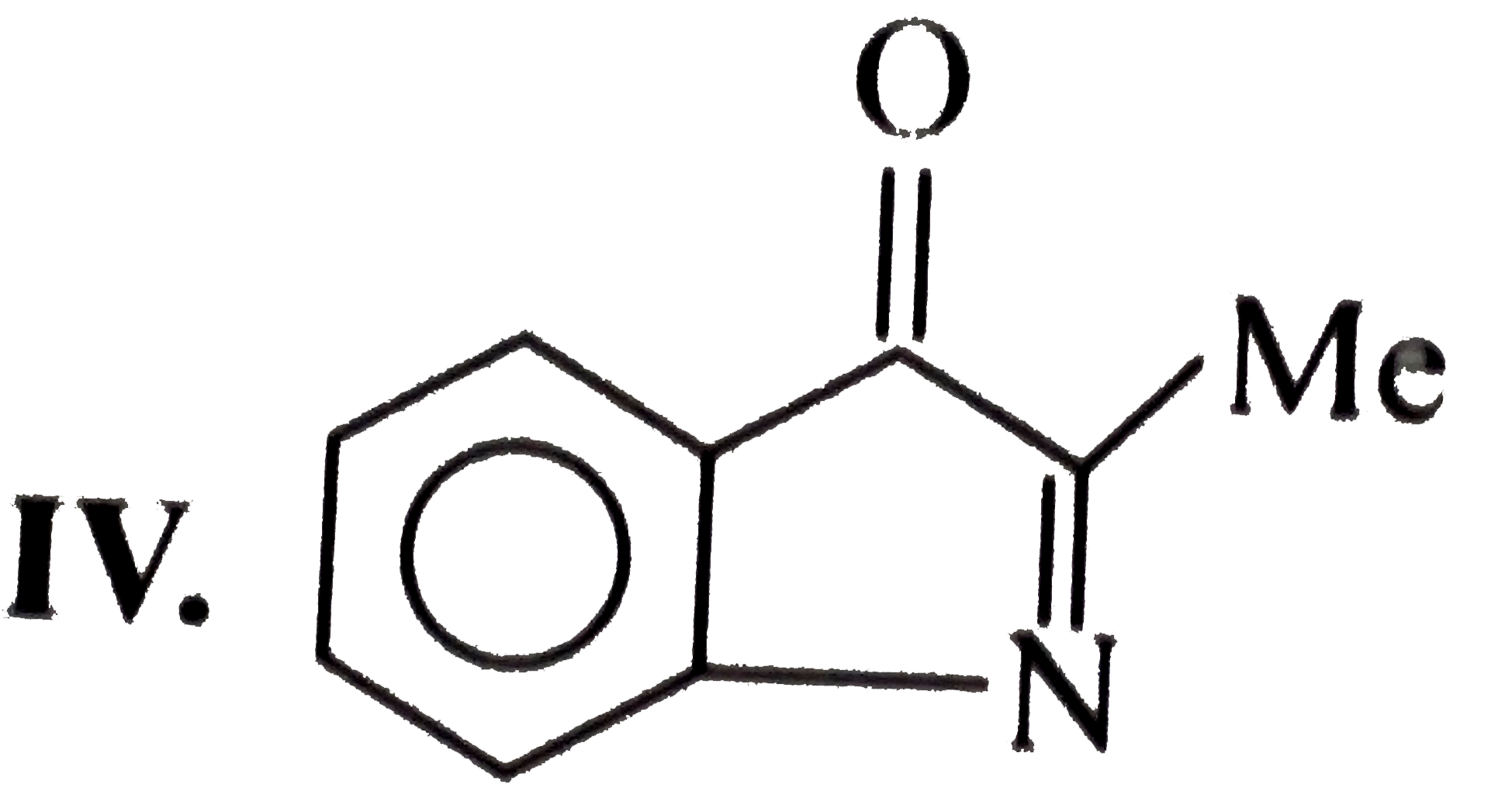 , v.
, v. 





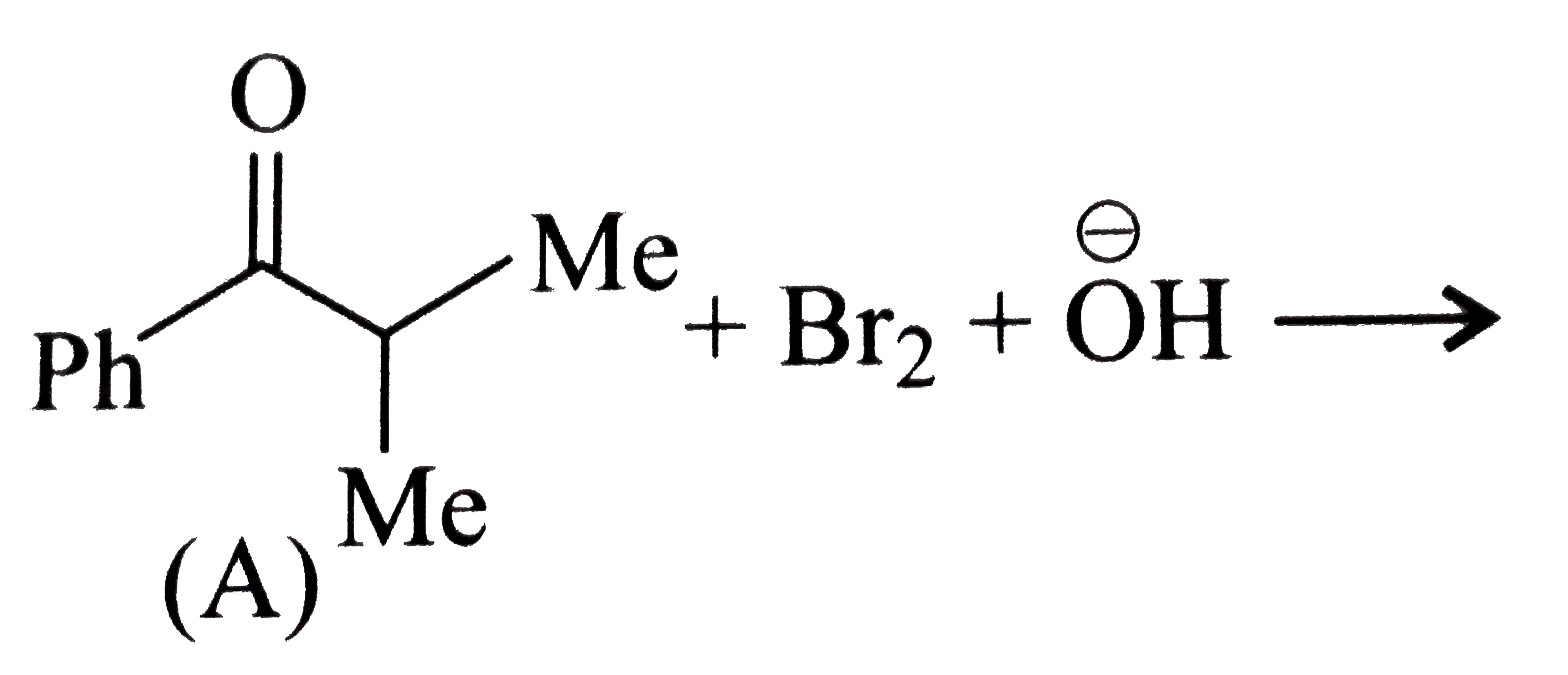
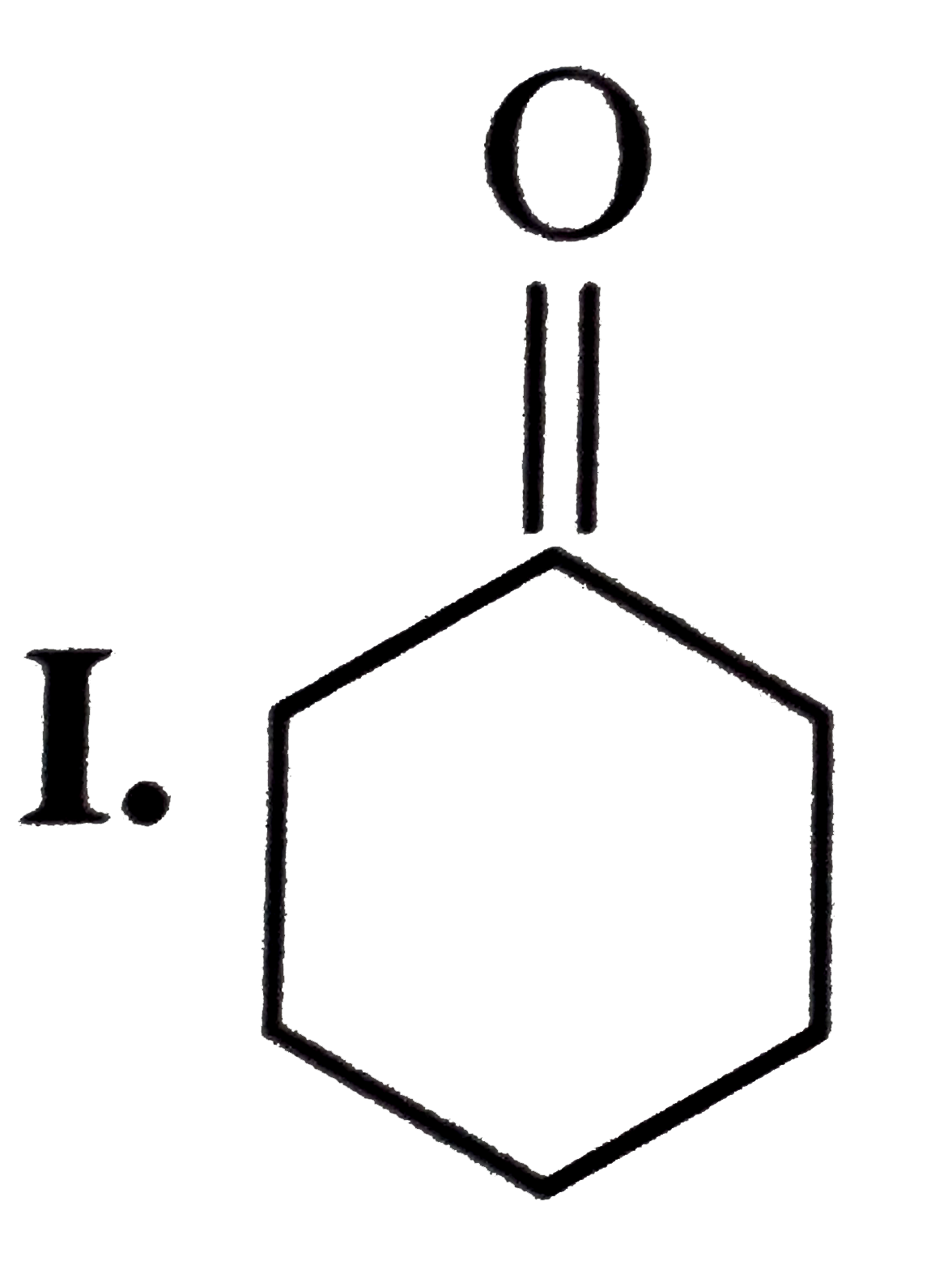 , II.
, II. 
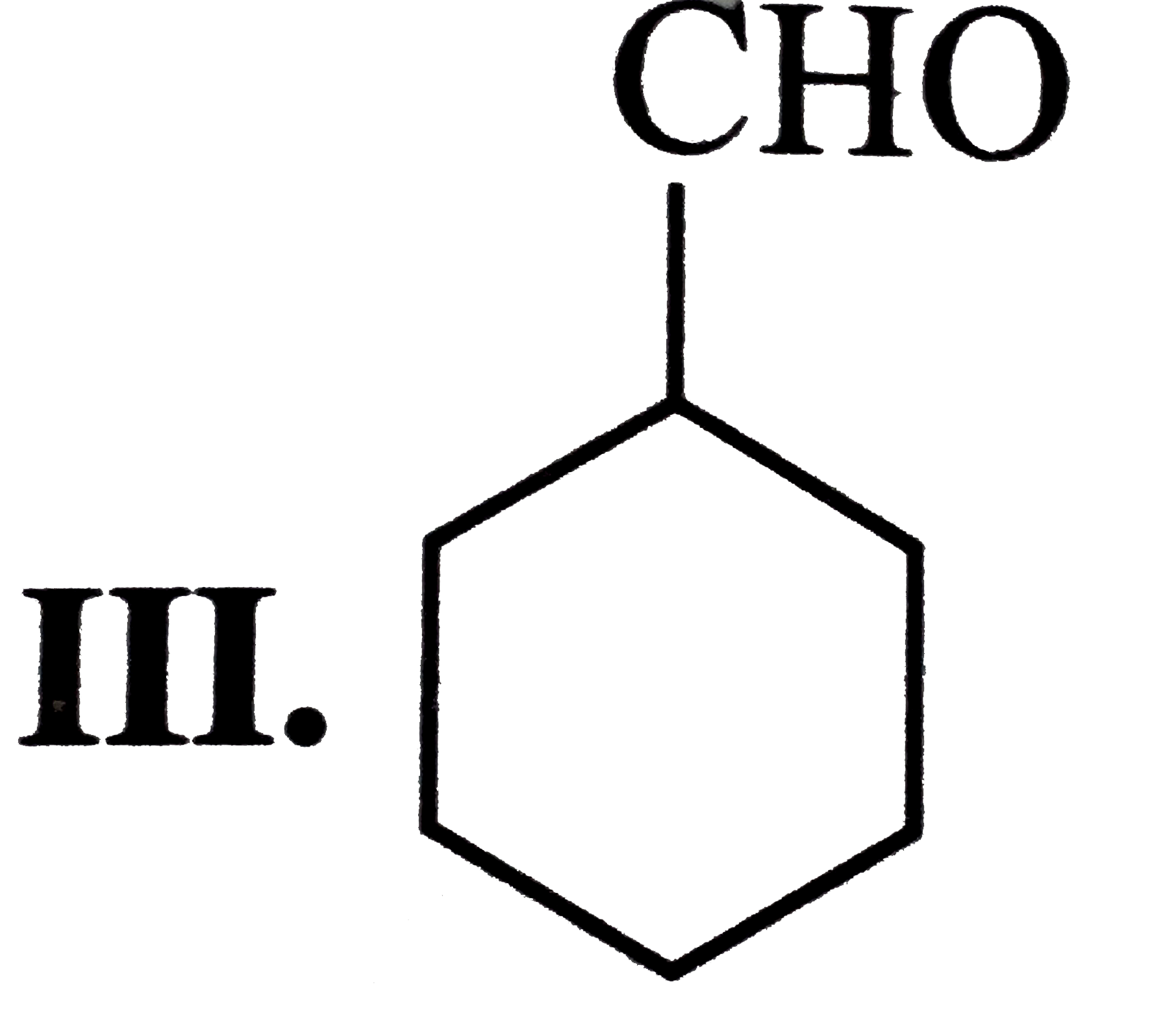 , IV.
, IV. 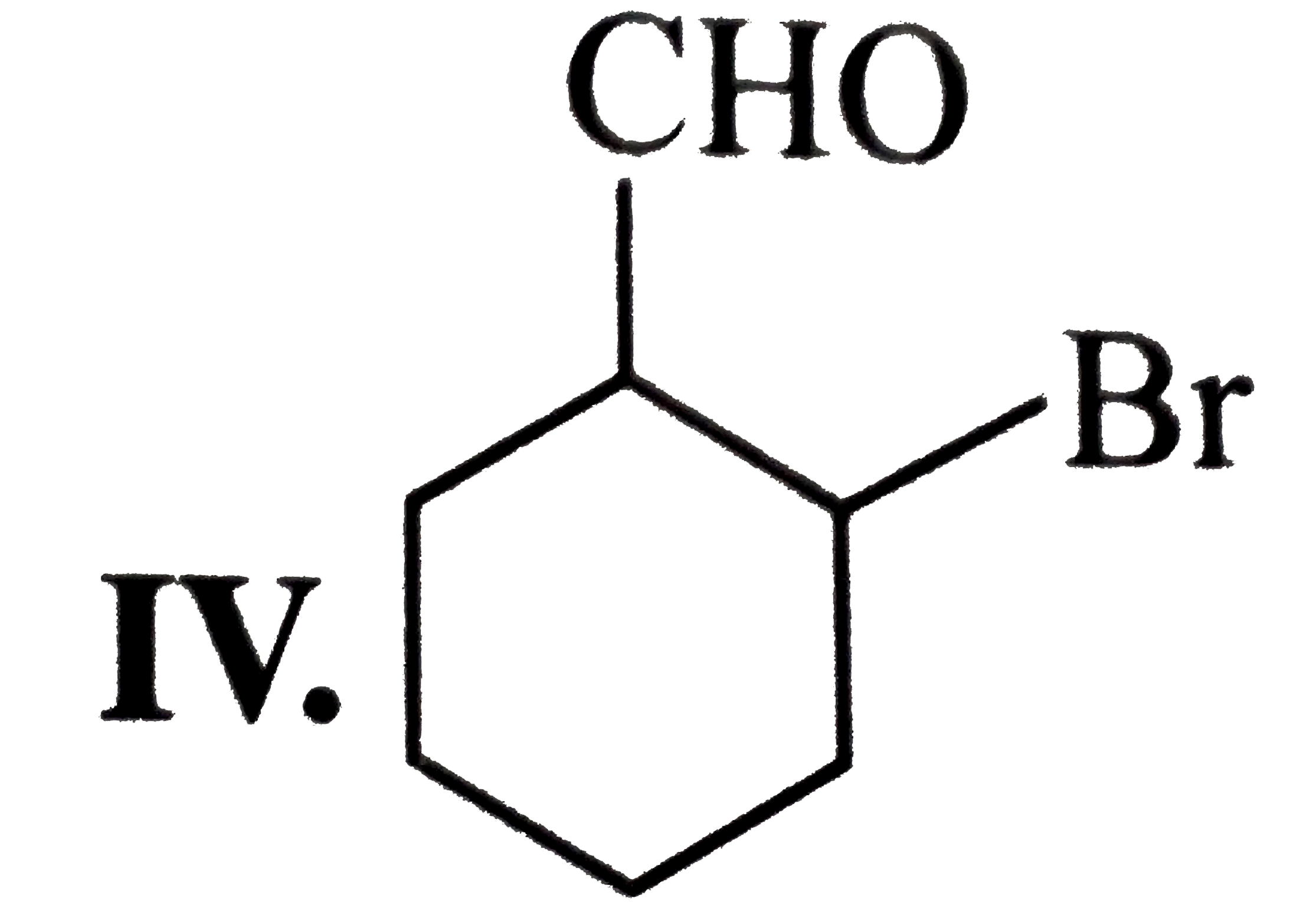
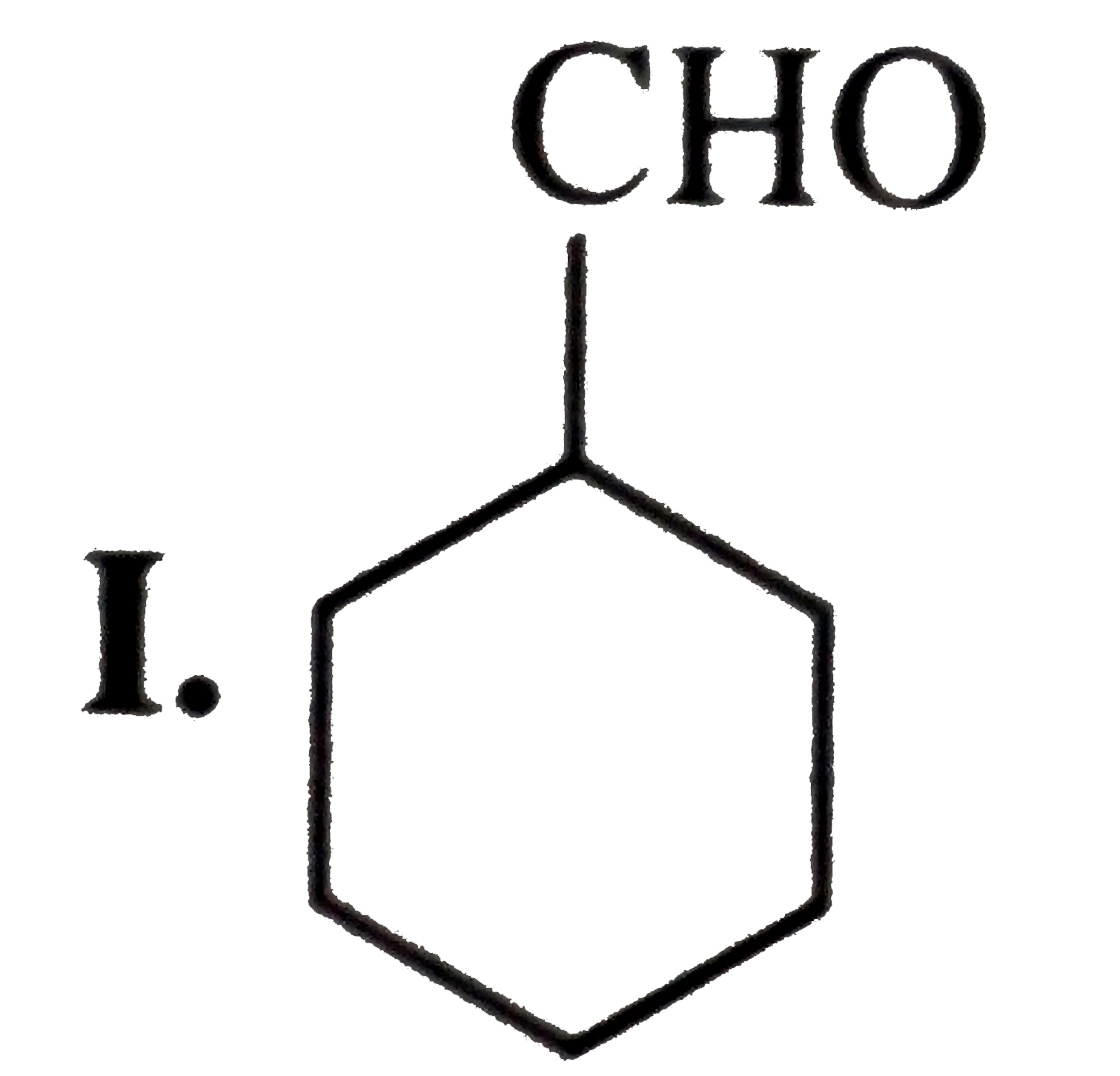 II.
II. 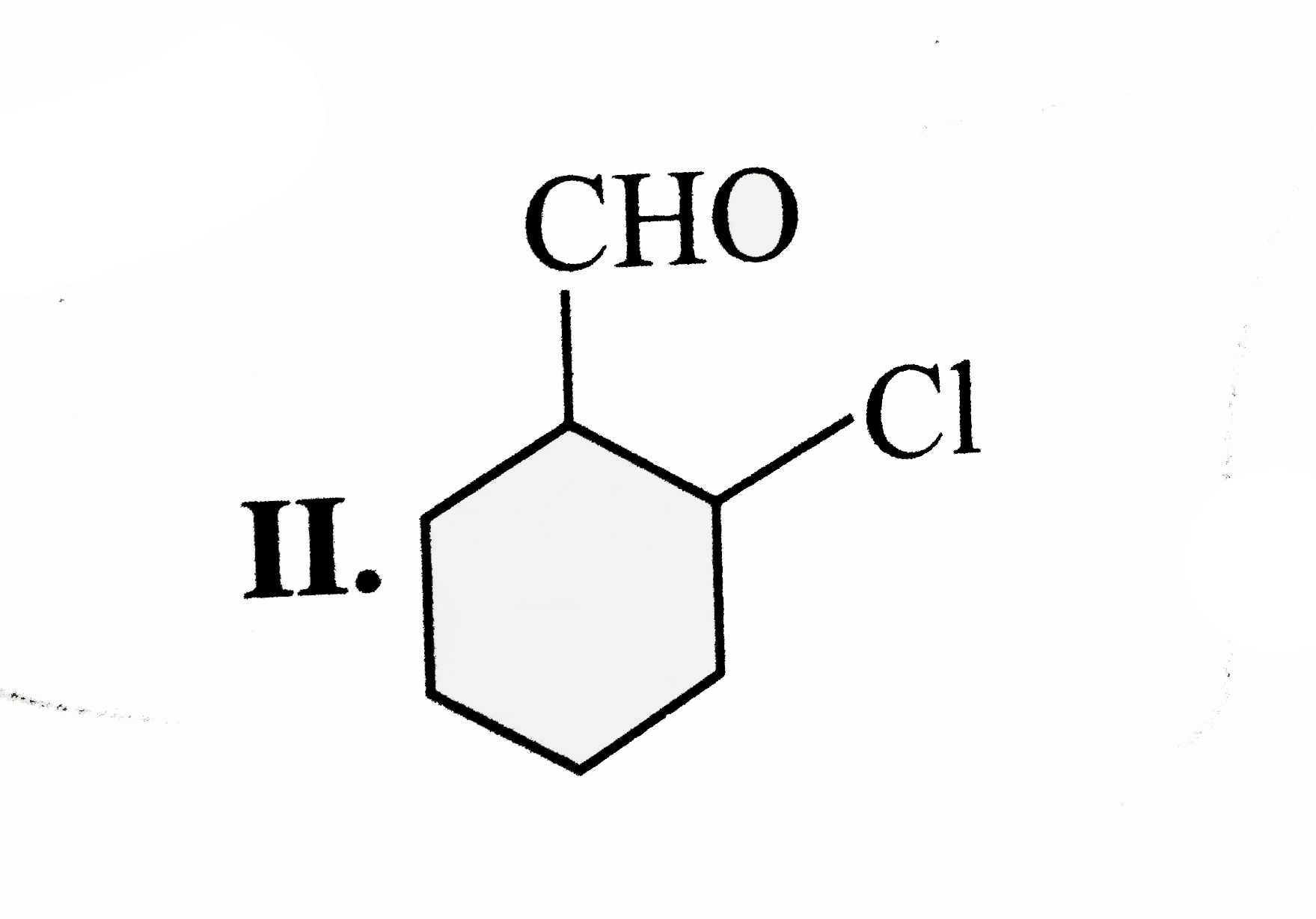
 IV.
IV. 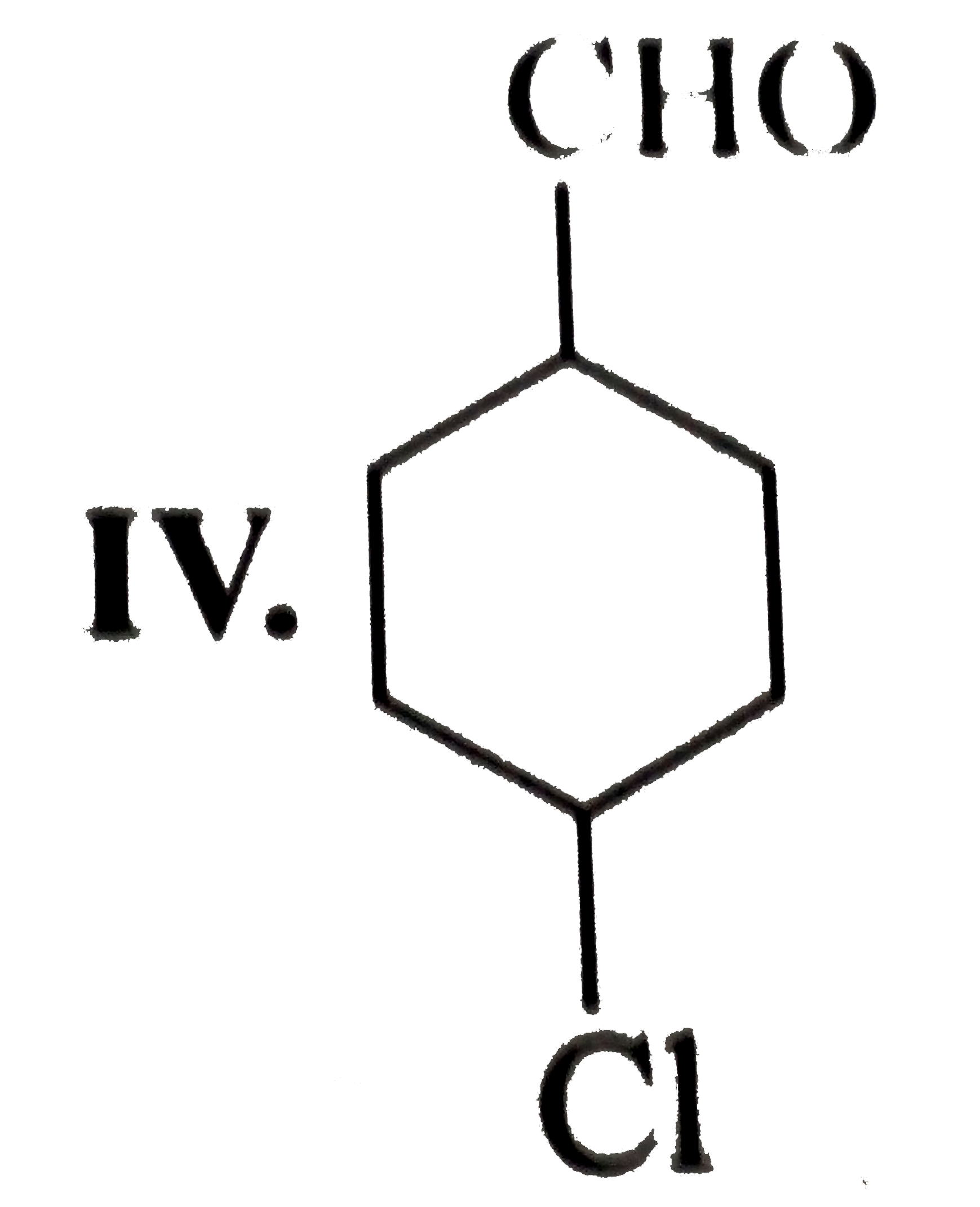

 and II.
and II. 

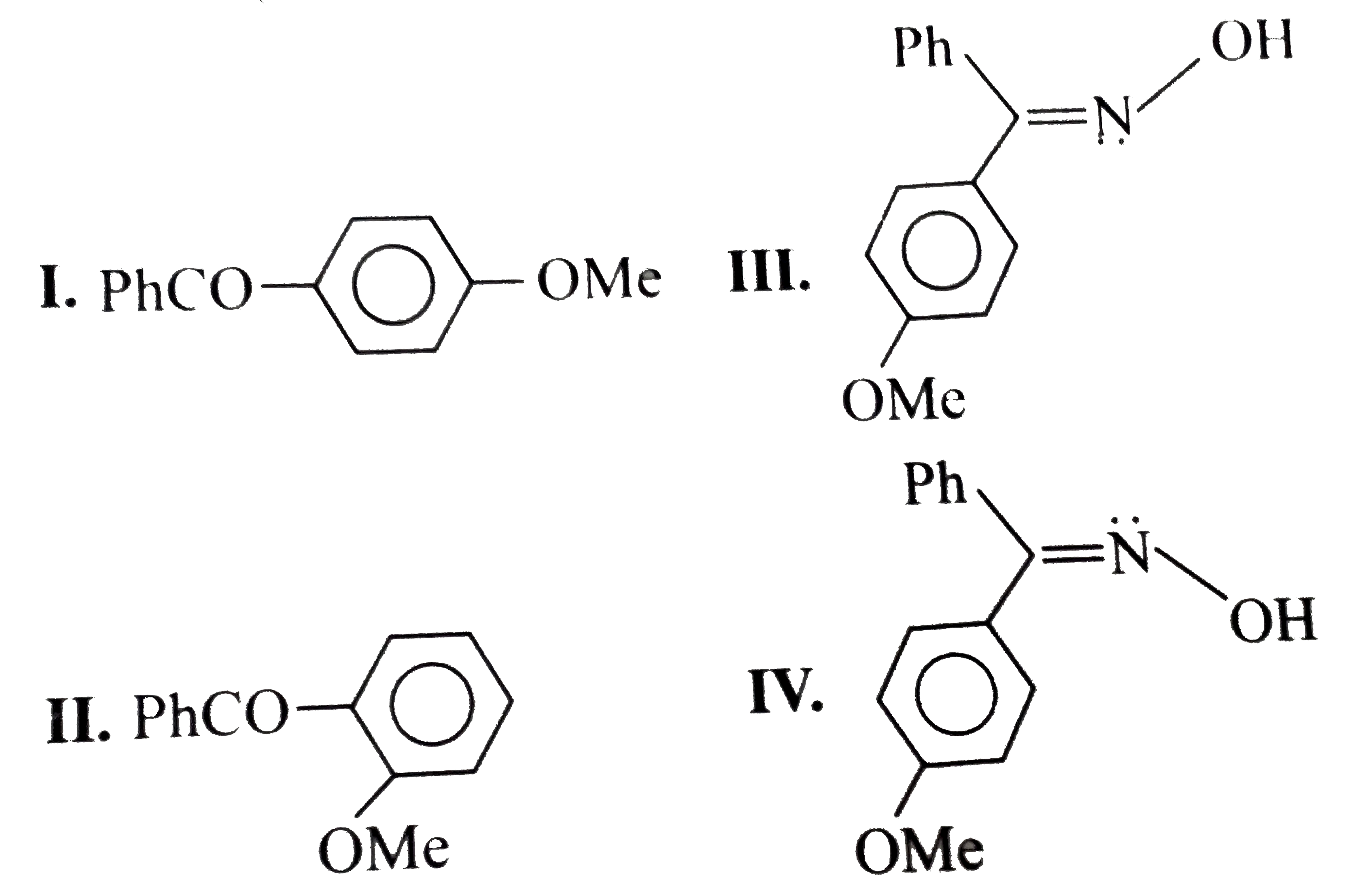




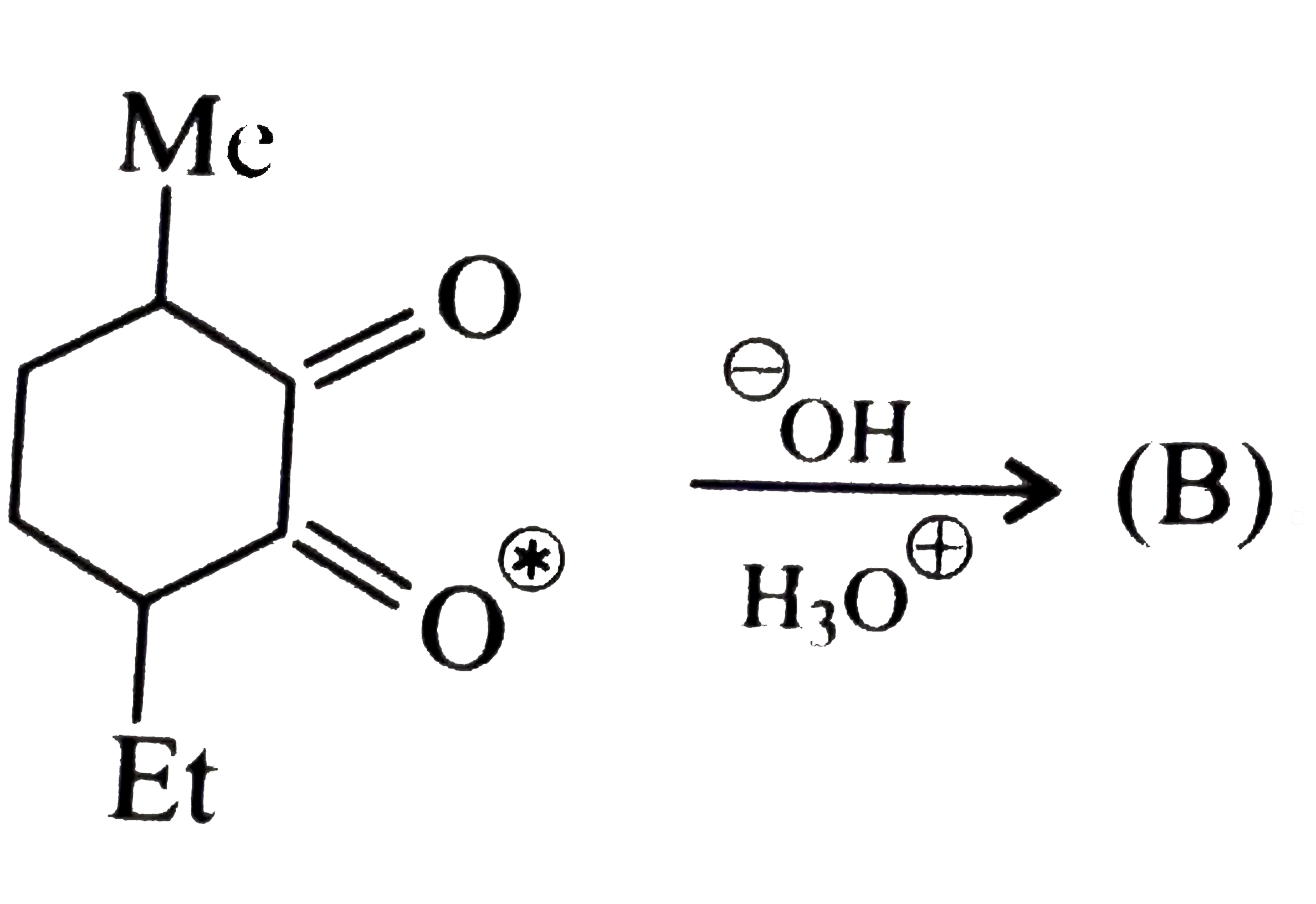 Compound (B) is:
Compound (B) is: 


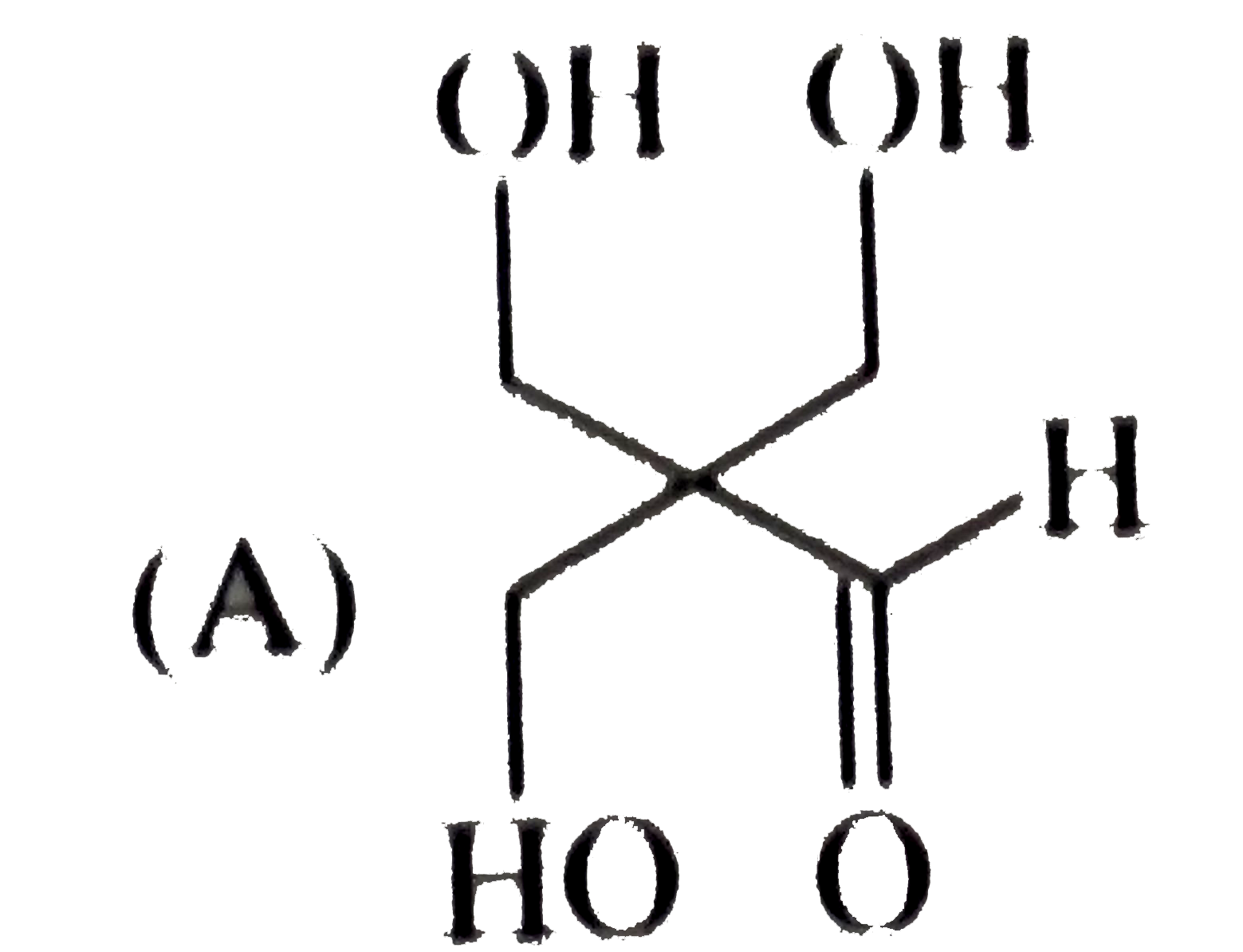
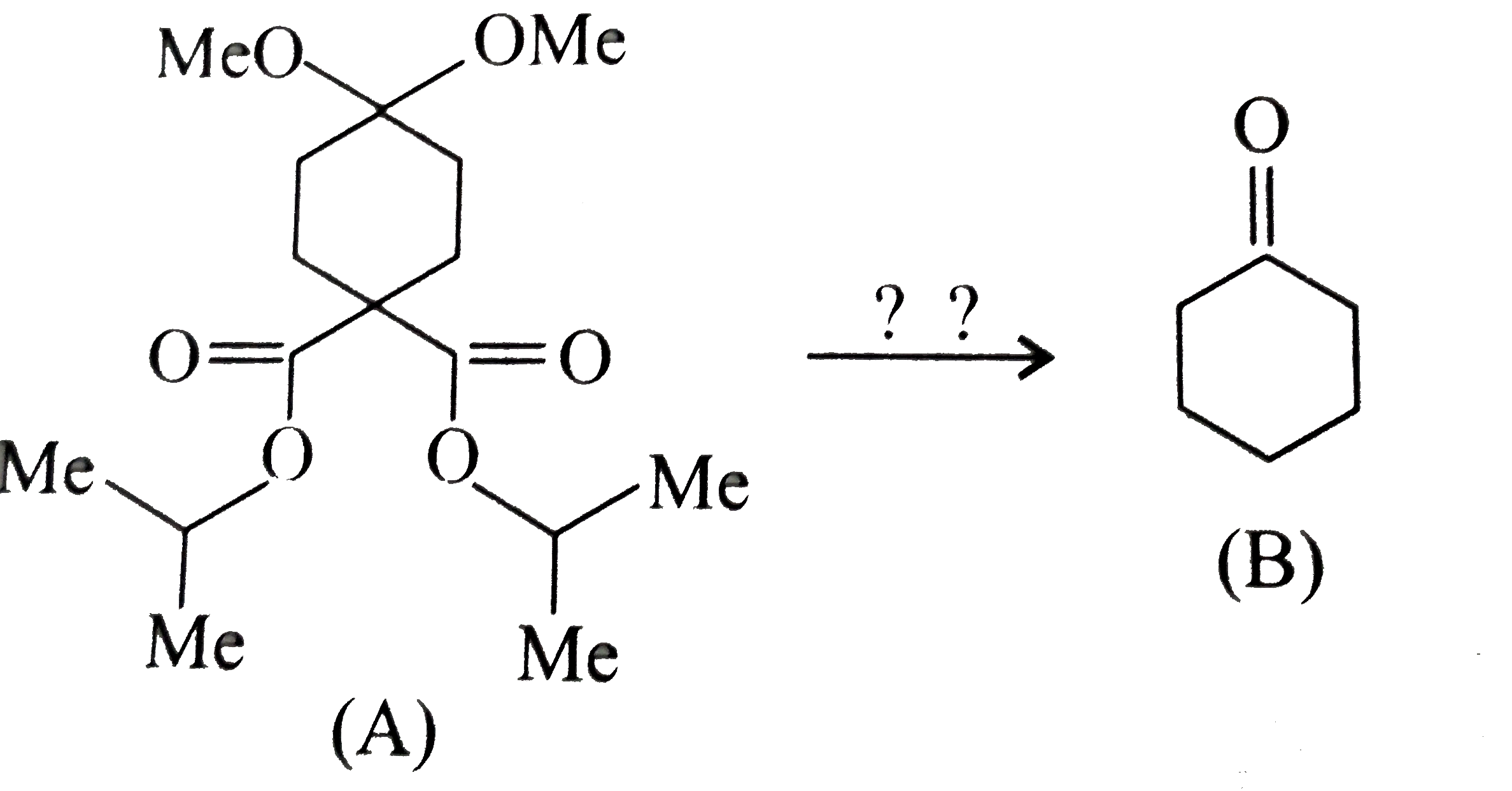


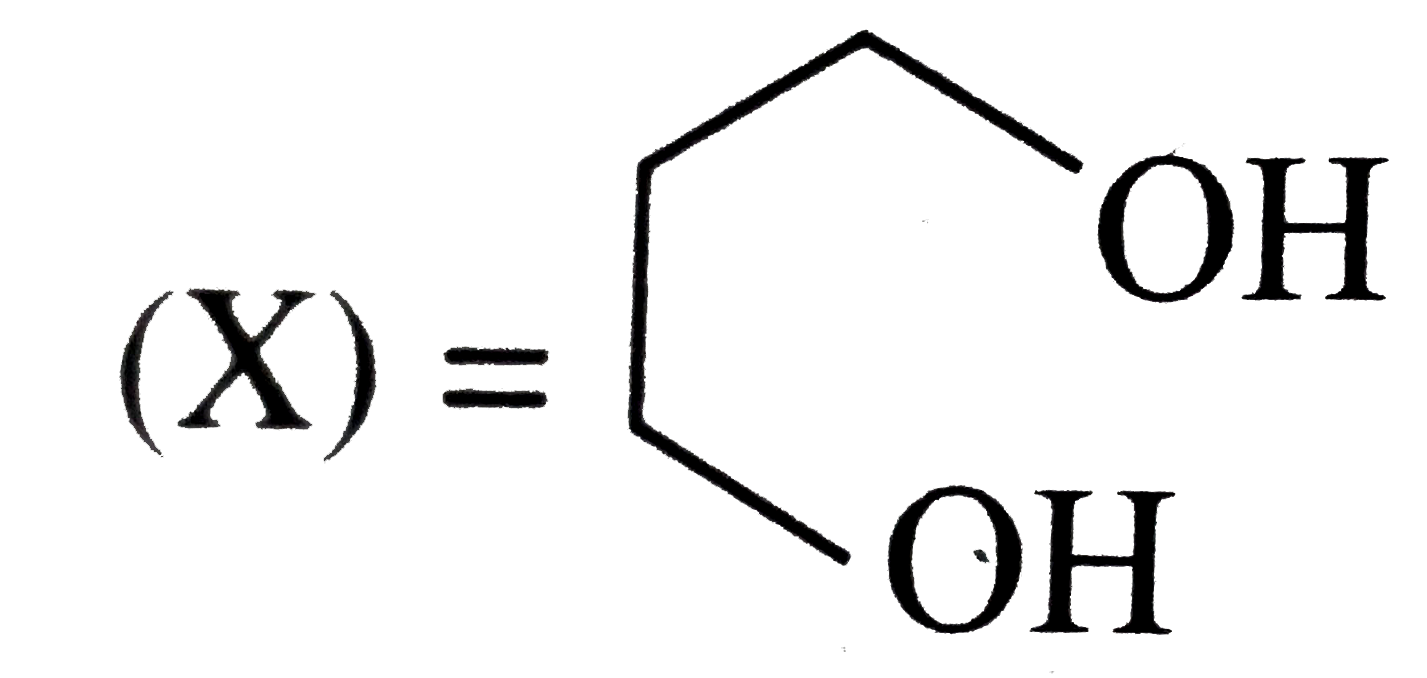 (Y)
(Y) 
